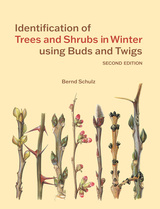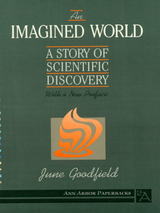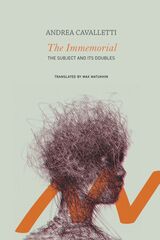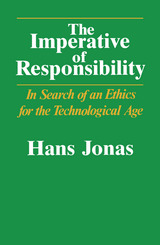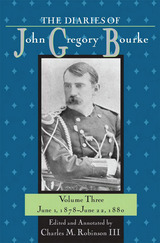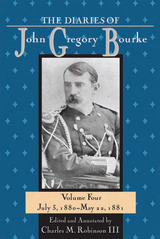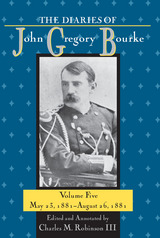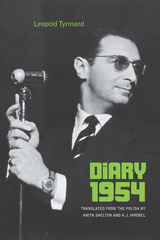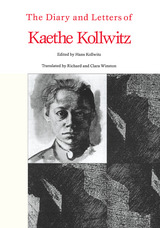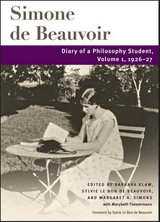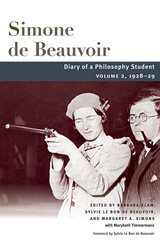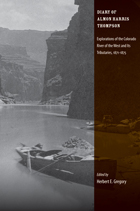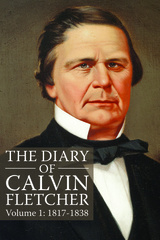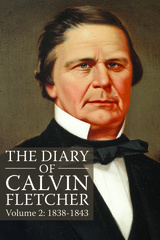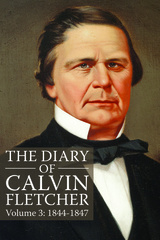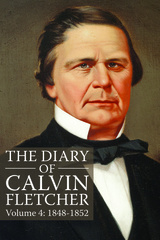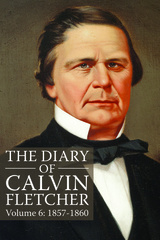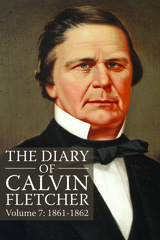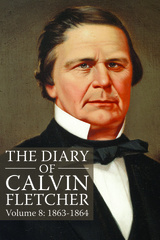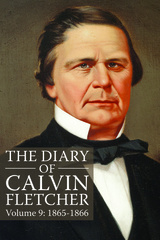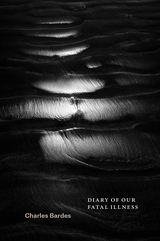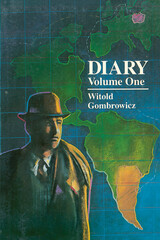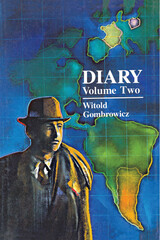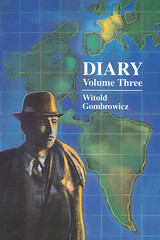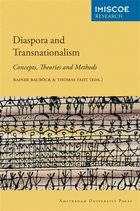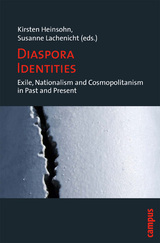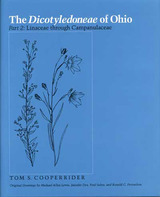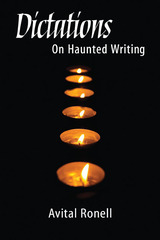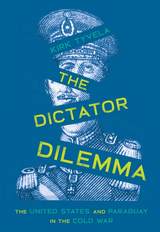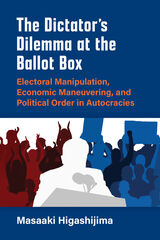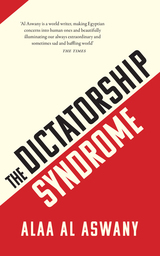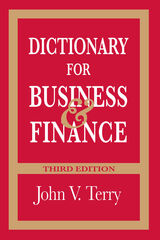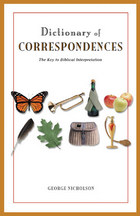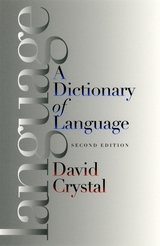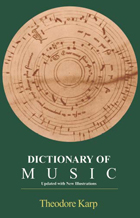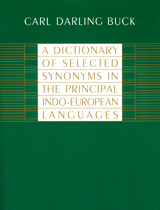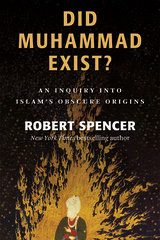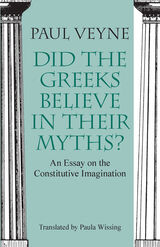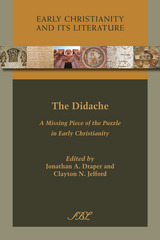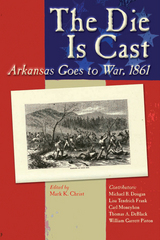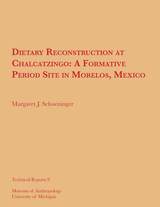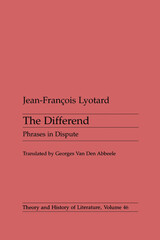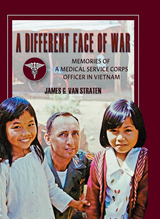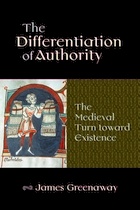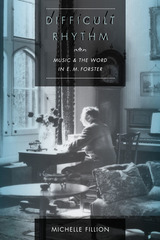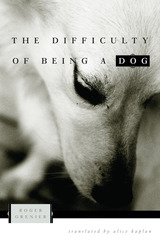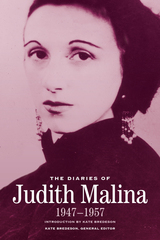 The Diaries of Judith Malina: 1947-1957
Judith Malina, Kate Bredeson
Northwestern University Press, 2026 Judith Malina’s newly restored diaries from a critical early decade in her personal, artistic, and political development Judith Malina’s diaries from 1947 to 1957 are brought back into print in this volume, which charts her cofounding of The Living Theatre with husband and lifelong artistic partner Julian Beck. In these diaries, she narrates her developing political commitments and her expansive collaborations and personal relationships, as well as a moving account of her time in prison with activist Dorothy Day. This new edition features Kate Bredeson’s comprehensive introduction, which offers a detailed examination of Malina’s life and work in this period, along with additional historical context of these years and never-before-published photographs from Malina’s personal archives.
The Diaries of Judith Malina is a four-volume set that publishes for the first time together the edited diaries of radical theater director, actor, and activist Judith Malina from 1947 to 1971, the most influential period of her remarkable and storied career. A committed anarchist and pacifist, Malina made theater as a way to stoke revolutionary action. Her diaries showcase her political and social observations, cultural commentary, self-reflection, and wit. This expertly prepared set invites us to recognize Malina for her accomplishments not only as an artist and an activist but as one of the great literary diarists.
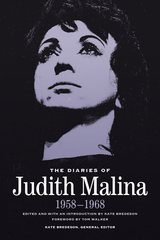 The Diaries of Judith Malina: 1957-1968
Judith Malina, Kate Bredeson, Tom Walker
Northwestern University Press, 2026 A previously unpublished volume of diaries recording Judith Malina’s extraordinary life and career in a moment of cultural revolution Judith Malina’s diaries from the pivotal years of 1958 to 1968 are presented here in print for the first time. Meticulously edited and with an essential introduction by Kate Bredeson that offers a detailed discussion of Malina’s life and works during this period, the volume includes additional historical context and never-before-published photographs from Malina’s personal archives, as well as an illuminating foreword by Living Theatre archivist and longtime company member Tom Walker. This decade covers some of the most important years of Malina’s life and in the history of The Living Theatre, from career-defining productions of The Connection and The Brig to the company’s self-imposed European exile, when they created their signature works, including Paradise Now, Antigone, and Frankenstein.
The Diaries of Judith Malina is a four-volume set that publishes for the first time together the edited diaries of radical theater director, actor, and activist Judith Malina from 1947 to 1971, the most influential period of her remarkable and storied career. A committed anarchist and pacifist, Malina made theater as a way to engage in revolutionary action. Her diaries showcase her political and social observations, cultural commentary, self-reflection, and wit. This expertly prepared set invites us to recognize Malina for her accomplishments not only as an artist and an activist but as one of the great literary diarists.
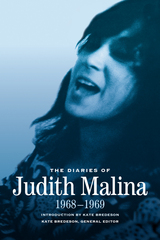 The Diaries of Judith Malina: 1968-1969
Judith Malina, Kate Bredeson
Northwestern University Press, 2026 A newly restored edition of Judith Malina’s legendary diaries narrating a key moment of social, political, and cultural upheaval Originally published by Judith Malina as The Enormous Despair, this slim, gripping collection of diaries from a pivotal period between 1968 and 1969 follows The Living Theatre’s return to the United States after their years of self-exile in Europe, their increasing notoriety and frequent arrests, and their cross-country touring. In these pages, Malina wrestles with the company’s artistic and political efforts during a moment of societal crisis and grapples with their future. Kate Bredeson’s introduction contextualizes Malina’s life and work in this period, while additional historical context and never-before-published photographs add new detail and depth to a stirring account of American social and political history.
The Diaries of Judith Malina is a four-volume set that publishes for the first time together the edited diaries of radical theater director, actor, and activist Judith Malina from 1947 to 1971, the most influential period of her remarkable and storied career. A committed anarchist and pacifist, Malina made theater as a way to engage in revolutionary action. Her diaries showcase her political and social observations, her cultural commentary, her self-reflection, and her wit. This expertly prepared set invites us to recognize Malina for her accomplishments not only as an artist and an activist but as one of the great literary diarists.
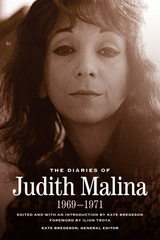 The Diaries of Judith Malina: 1969-1971
Judith Malina, Kate Bredeson, Ilion Troya
Northwestern University Press, 2026 Judith Malina’s never-before-published diaries describing a period of profound personal and professional transformation The years 1969 to 1971 saw The Living Theatre’s greatest rupture, reckoning with its desire to leave its defining productions from the 1960s behind and move forward with new artistic works and practices. In these previously unpublished diaries, Judith Malina recounts these pivotal years, describing her transformative time in Brazil, including her experiences of daily life in jail while awaiting trial with her company members. This meticulously edited volume includes Kate Bredeson’s introduction, examining Malina’s life and work in this period, as well as additional historical context and never-before-published photographs. Living Theatre member Ilion Troya offers a foreword that provides new context for understanding the volume’s historical significance.
The Diaries of Judith Malina is a four-volume set that publishes for the first time together the edited diaries of radical theater director, actor, and activist Judith Malina from 1947 to 1971, the most influential period of her remarkable and storied career. A committed anarchist and pacifist, Malina made theater as a way to engage in revolutionary action. Her diaries showcase her political and social observations, cultural commentary, self-reflection, and wit. This expertly prepared set invites us to recognize Malina for her accomplishments not only as an artist and an activist but as one of the great literary diarists.
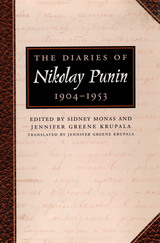 The Diaries of Nikolay Punin: 1904-1953
By Nikolay Punin
University of Texas Press, 1999 Nikolay Punin (1888-1953) was the most articulate Russian/Soviet art critic of the 1920s. He strongly advocated Constructivism, an avant-garde impulse that favored mechanomorphic abstraction and proclaimed a movement to bring art into the center of popular life. In the United States, he is perhaps best remembered for his love affair with Anna Akhmatova, one of the great poets of the twentieth century. This volume presents the first English translation of ten diary notebooks that Punin wrote between 1915 and 1936, as well as selections from his earlier (1904-1910) and later (1941-1946) diaries and some thirty notes and letters relating to his affair with Anna Akhmatova. These materials offer a rare glimpse into the life of art and artists in Russia. They also present vivid scenes from the 1905 Revolution, World War I, the 1917 Revolutions, World War II, and Stalinist oppression through the reflections of a talented man, who, unlike many of his generation, lived to tell the tale.
Diary 1954
Leopold Tyrmand
Northwestern University Press, 2014 Leopold Tyrmand, a Polish Jew who survived World War II by working in Germany under a false identity, would go on to live and write under Poland’s Communist regime for twenty years before emigrating to the West, where he continued to express his deeply felt anti-Communist views. Diary 1954—written after the independent weekly paper that employed him was closed for refusing to mourn Stalin’s death—is an account of daily life in Communist Poland. Like Czesław Miłosz, Václav Havel, and other dissidents who described the absurdities of Soviet-backed regimes, Tyrmand exposes the lies—big and small—that the regimes employed to stay in power. Witty and insightful, Tyrmand’s diary is the chronicle of a man who uses seemingly minor modes of resistance—as a provocative journalist, a Warsaw intellectual, the "spiritual father" of Polish hipsters, and a promoter of jazz in Poland—to maintain his freedom of thought.
 Diary and Autobiographical Writings of Louisa Catherine Adams
Louisa Catherine AdamsEdited by Judith S. Graham, Beth Luey, C. James Taylor, and Margaret A. Hogan
Harvard University Press, 2012 The Adams saga takes a stride through the first half of the nineteenth century, as Louisa Catherine Johnson Adams chronicles her life with John Quincy Adams. Born in London in 1775 to a Maryland merchant and his English wife, Louisa recalls her childhood and education in England and France and her courtship with John Quincy, then U.S. minister to the Netherlands. Married in 1797, Louisa accompanied her husband on his postings to Berlin, St. Petersburg, and London. Her memoirs of Prussia and Russia vividly portray the republican couple in the courts of Europe.
Louisa came to America in 1801 and would share John Quincy’s career as U.S. senator, secretary of state, president, and congressman. Except for his presidency, her diaries for these years have been preserved, and they reveal a reluctant but increasingly canny political wife. Lamentations about loss, including the deaths of three of four children, abound. But here, too, are views of Napoleonic Europe and American sectional disputes, with witty sketches of heroes and scoundrels. John Quincy emerges in a fullness seldom seen—ambitious and exacting, yet passionate, generous, and gallant. Louisa's diaries conclude with her reckoning of an eventful life, which came to a close in 1852.
 Diary and Autobiography of John Adams
John Adams
Harvard University Press John Adams’s Diary, partially published in the 1850s, has proved a quarry of information on the rise of Revolutionary resistance in New England, the debates in the early Continental Congresses, and the diplomacy and financing of the American Revolution; but it has remained unfamiliar to the wider public. “It is an American classic,” Zoltán Haraszti said recently, “about which Americans know next to nothing.” Yet the Diary’s historical value may well prove secondary to its literary and human interest. Now that it is presented in full, we have for the first time a proper basis for comprehending John Adams—an extraordinary human being, a master of robust, idiomatic language, a diarist in the great tradition.
The Autobiography, intended for John Adams’s family, consists of three large sections. The first records his boyhood, his legal and political career, and the movement that culminated in American independence. The second and third parts deal with his diplomatic experiences, and serve among other things as a retrospective commentary on the Diary; they are studded with sketches of Adams’s associates, which are as scintillating as they are prejudiced, parts and in some cases all of which were omitted from Charles Francis Adams’s nineteenth-century edition.
 Diary and Autobiography of John Adams
John Adams
Harvard University Press John Adams' Diary, partially published in the 1850's, has proved a quarry of information on the rise of Revolutionary resistance in New England, the debates in the early Continental Congresses, and the diplomacy and financing of the American Revolution; but it has remained unfamiliar to the wider public. "It is an American classic," Zoltán Haraszti said recently, "about which Americans know next to nothing." Yet the Diary’s historical value may well prove secondary to its literary and human interest. Now that it is presented in full, we have for the first time a proper basis for comprehending John Adams—an extraordinary human being, a master of robust, idiomatic language, a diarist in the great tradition.
The Autobiography, intended for John Adams' family, consists of three large sections. The first records his boyhood, his legal and political career, and the movement that culminated in American independence. The second and third parts deal with his diplomatic experiences, and serve among other things as a retrospective commentary on the Diary; they are studded with sketches of Adams' associates, which are as scintillating as they are prejudiced, parts and in some cases all of which were omitted from Charles Francis Adams' 19th-century edition.
 Diary and Autobiography of John Adams
John Adams
Harvard University Press John Adams’s Diary, partially published in the 1850s, has proved a quarry of information on the rise of Revolutionary resistance in New England, the debates in the early Continental Congresses, and the diplomacy and financing of the American Revolution; but it has remained unfamiliar to the wider public. “It is an American classic,” Zoltán Haraszti said recently, “about which Americans know next to nothing.” Yet the Diary’s historical value may well prove secondary to its literary and human interest. Now that it is presented in full, we have for the first time a proper basis for comprehending John Adams—an extraordinary human being, a master of robust, idiomatic language, a diarist in the great tradition.
The Autobiography, intended for John Adams’s family, consists of three large sections. The first records his boyhood, his legal and political career, and the movement that culminated in American independence. The second and third parts deal with his diplomatic experiences, and serve among other things as a retrospective commentary on the Diary; they are studded with sketches of Adams’s associates, which are as scintillating as they are prejudiced, parts and in some cases all of which were omitted from Charles Francis Adams’s nineteenth-century edition.
 Diary and Autobiography of John Adams
John Adams
Harvard University Press John Adams’s Diary, partially published in the 1850s, has proved a quarry of information on the rise of Revolutionary resistance in New England, the debates in the early Continental Congresses, and the diplomacy and financing of the American Revolution; but it has remained unfamiliar to the wider public. “It is an American classic,” Zoltán Haraszti said recently, “about which Americans know next to nothing.” Yet the Diary’s historical value may well prove secondary to its literary and human interest. Now that it is presented in full, we have for the first time a proper basis for comprehending John Adams—an extraordinary human being, a master of robust, idiomatic language, a diarist in the great tradition.
The Autobiography, intended for John Adams’s family, consists of three large sections. The first records his boyhood, his legal and political career, and the movement that culminated in American independence. The second and third parts deal with his diplomatic experiences, and serve among other things as a retrospective commentary on the Diary; they are studded with sketches of Adams’ associates, which are as scintillating as they are prejudiced, parts and in some cases all of which were omitted from Charles Francis Adams’s nineteenth-century edition.
 Diary and Autobiography of John Adams
John Adams
Harvard University Press These four volumes begin the publication of the Adams archives, a collection which Edward Everett Hale called a "manuscript history of America in the diaries and correspondence" of a single family.
The Diary, partially published in the 1850's, has proved a quarry of information on the rise of Revolutionary resistance in New England, the debates in the early Continental Congresses, and the diplomacy and financing of the American Revolution; but it has remained unfamiliar to the wider public. "It is an American classic," Mr. Zoltán Haraszti said recently, about which Americans know next to nothing." Actually the Diary's historical value may well prove secondary to its literary and human interest. Now that it is presented in full, we have for the first time a proper basis for comprehending John Adams--an extraordinary human being, a master of robust, idiomatic language, a diarist in the great tradition. From none of the other founders of the Republic do we have anything like a record at once so copious and so intimate.
The Autobiography, intended for John Adams' family but never finished, consists of three large sections. The first records his boyhood, his legal and political career, and the movement that culminated in American independence. The second and third parts deal with his diplomatic experiences, and serve among other things as a retrospective commentary on the Diary: they are studded with sketches of Adams' associates which are as scintillating as they are prejudiced. Parts and in some cases all of these sketches were omitted from Charles Francis Adams' nineteenth-century edition.
In 1779 John Adams wrote, "I am but an ordinary Man. The Times alone have destined me to Fame--and even these have not been able to give me, much." Then he added, "Yet some great Events, some cutting Expressions, some mean Hypocrisies, have at Times, thrown this Assemblage of Sloth, Sleep, and littleness into Rage a little like a Lion." Both the ordinary Man and the Lion live on in these volumes.
Diary and Letters of Kaethe Kollwitz
Kaethe Kollwitz
Northwestern University Press, 1988 One of the great German Expressionist artists, Kaethe Kollwitz wrote little of herself. But her diary, kept from 1900 to her death in 1945, and her brief essays and letters express, as well as explain, much of the spirit, wisdom, and internal struggle which was eventually transmuted into her art.
A Diary from Dixie
Mary Boykin Chesnut
Harvard University Press, 1980 One of the most important documents in southern history, this is a day-by-day diary of the Civil War years. It rings with authenticity while evoking the nostalgia, bitterness, and comedy of the Confederacy.
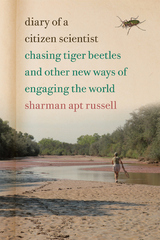 Diary of a Citizen Scientist: Chasing Tiger Beetles and Other New Ways of Engaging the World
Sharman Apt-Russell
Oregon State University Press, 2014 Winner of the 2015John Burroughs Medal, the 2015 WILLA Award for Best Creative Nonfiction, and finalist for the 2015 New Mexico/Arizona Book Awards
In the exploding world of citizen science, hundreds of thousands of volunteers are monitoring climate change, tracking bird migrations, finding stardust for NASA, and excavating mastodons. The sheer number of citizen scientists, combined with new technology, has begun to shape how research gets done. Non-professionals become acknowledged experts: dentists turn into astronomers and accountants into botanists.
Diary of a Citizen Scientist is a timely exploration of the phenomenon of citizen science, told through the lens of nature writer Sharman Apt Russell’s yearlong study of a little-known species, the Western red-bellied tiger beetle. In a voice both humorous and lyrical, Russell recounts her persistent and joyful tracking of an insect she calls “charismatic,” “elegant,” and “fierce.” Patrolling the Gila River in southwestern New Mexico, collector’s net in hand, she negotiates the realities of climate change even as she celebrates the beauty of a still-wild and rural landscape.
Russell’s self-awareness—of her occasionally-misplaced confidence, her quest to fill in “that blank spot on the map of tiger beetles,” and her desire to become newly engaged in her life—creates a portrait not only of the tiger beetle she tracks, but of the mindset behind self-driven scientific inquiry. Falling in love with the diversity of citizen science, she participates in crowdsourcing programs that range from cataloguing galaxies to monitoring the phenology of native plants, applauds the growing role of citizen science in environmental activism, and marvels at the profusion of projects around the world.
Diary of a Citizen Scientist offers its readers a glimpse into the transformative properties of citizen science—and documents the transformation of the field as a whole.
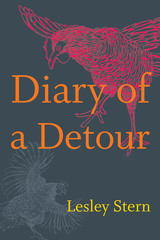 Diary of a Detour
Lesley Stern
Duke University Press, 2020 Diary of a Detour is film scholar and author Lesley Stern's memoir of living with chronic lymphocytic leukemia. She chronicles the fears and daily experience of coming to grips with an incurable form of cancer by describing the dramas and delving into the science. Stern also nudges cancer off center stage by turning to alternative obsessions and pleasures. In seductive writing she describes her life in the garden and kitchen, the hospital and the library, and her travels—down the street to her meditation center, across the border to Mexico, and across the world to Australia. Her immediate world is inhabited with books, movies, politics, and medical reports that provoke essayistic reflections. As her environment is shared with friends, chickens, a cat called Elvis, mountain goats, whales, lions, and microbes the book opens onto a larger than human world. Intimate and meditative, engrossing and singular, Diary of a Detour offers new ideas about what it might mean to live and think with cancer, and with chronic illness more broadly.
Diary of a Philosophy Student: Volume 1, 1926-27
Simone de Beauvoir; Translation by Barbara Klaw; Edited by Barbara Klaw, Sylvie Le Bon de Beauvoir, and Margaret Simons, with the assistance of Marybeth Timmerman
University of Illinois Press, 2021 Simone de Beauvoir, still a teen, began a diary while a philosophy student at the Sorbonne. Written in 1926-27—before Beauvoir met Jean-Paul Sartre—the diaries reveal previously unknown details about her life and times and offer critical insights into her early intellectual interests, philosophy, and literary works. Presented for the first time in translation, this fully annotated first volume of the Diary includes essays from Barbara Klaw and Margaret A. Simons that address its philosophical, historical, and literary significance. It remains an invaluable resource for tracing the development of Beauvoir’s independent thinking and her influence on philosophy, feminism, and the world.
Diary of a Philosophy Student: Volume 2, 1928-29
Simone de Beauvoir; Translation by Barbara Klaw; Edited by Barbara Klaw, Sylvie Le Bon de Beauvoir, Margaret A. Simons, and Marybeth Timmermann
University of Illinois Press, 2021 Simone de Beauvoir, still a teen, began a diary while a philosophy student at the Sorbonne. Written in 1926-27—before Beauvoir met Jean-Paul Sartre—the diaries reveal previously unknown details about her life and times and offer critical insights into her early intellectual interests, philosophy, and literary works. Presented for the first time in translation, this fully annotated first volume of the Diary includes essays from Barbara Klaw and Margaret A. Simons that address its philosophical, historical, and literary significance. It remains an invaluable resource for tracing the development of Beauvoir’s independent thinking and her influence on philosophy, feminism, and the world.
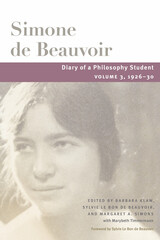 Diary of a Philosophy Student: Volume 3, 1926-30
Simone de Beauvoir. Translation by Barbara Klaw. Edited by Barbara Klaw, Sylvie Le Bon de Beauvoir, and Margaret A. Simons with Marybeth Timmermann. Foreword by Sylvie Le Bon de Beauvoir
University of Illinois Press, 2024 Written between the age of eighteen and twenty-one, the entries in the third volume of Diary of a Philosophy Student take readers into Simone de Beauvoir’s thoughts while illuminating the people and ideas swirling around her. The pages offer rare insights into Beauvoir’s intellectual development; her early experiences with love, desire, and freedom; and relationships with friends like Élisabeth “Zaza” Lacoin, and Maurice Merleau-Ponty. It also presents Beauvoir’s shocking account of Jean-Paul Sartre’s sexual assault of her during their first sexual encounter--a revelation certain to transform views of her life and philosophy. In addition, the editors include a wealth of important supplementary material. Barbara Klaw provides a detailed consideration of the Diary’s role in the development of Beauvoir’s writing style by exploring her use of metanarrative and other literary techniques, part of a process of literary creation that saw Beauvoir use the notebooks to cultivate her talent. Margaret A. Simons’s essay places the assault by Sartre within an appraisal of Beauvoir’s complicated legacy for #MeToo while suggesting readers engage with the diary through the lens of trauma.
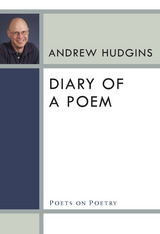 Diary of a Poem
Andrew Hudgins
University of Michigan Press, 2011 Praise for Andrew Hudgins "Hudgins . . . [is] one of the few poets of the American South who can be both solemn and sidesplitting in a single poem."
---Publishers Weekly "Andrew Hudgins is a natural storyteller . . . The surface[s] of Hudgins's poems---their quirky economy, the sheer music of his prosody---are so right because he goes so deep."
---Washington Post A volume in the Poets on Poetry series, which collects critical works by contemporary poets, gathering together the articles, interviews, and book reviews by which they have articulated the poetics of a new generation. Andrew Hudgins's Diary of a Poem is an engaging collection of essays that offers pleasure and profit to its readers. The title essay discusses the author's amusing travails as he attempts to write an ode about intestines, while other pieces explore the poetry of James Agee, Donald Justice, Allen Tate, and other poets, as well as the musician Johnny Winter, who is the subject of a rollicking segment about rock 'n' roll. More seriously, Hudgins writes with lively good humor about his tomato garden, the unread books piled up precipitously around his bed, and the emotional problems that led to an embarrassingly intimate, yet funny encounter with his father-in-law. Diary of a Poem is lively, charming, often humorous, and a pleasurable read for the general reader and the poetry specialist alike.
Author photo by Jo McCulty
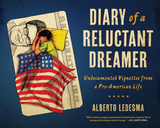 Diary of a Reluctant Dreamer: Undocumented Vignettes from a Pre-American Life
Alberto Ledesma
Ohio State University Press, 2017 In this hybrid memoir, Alberto Ledesma wonders, At what point does a long-time undocumented immigrant become an American in the making? From undocumented little boy to “hyper documented” university professor, Ledesma recounts how even now, he sometimes finds himself reverting to the child he was, recalling his father’s words: “Mijo, it doesn’t matter how good you think your English is, la migra will still get you.”
Exploring Ledesma’s experiences from immigrant to student to academic, Diary of a Reluctant Dreamer presents a humorous, gritty, and multilayered portrait of undocumented immigrant life in urban America. Ledesma’s vignettes about life in the midst of ongoing social trauma give voice to a generation that has long been silent about its struggles. Delving into the key moments of cultural transition throughout his childhood and adulthood—police at the back door waiting to deport his family, the ex-girlfriend who threatens to call INS and report him, and the interactions with law enforcement even after he is no longer undocumented—Ledesma, through his art and his words, provides a glimpse into the psychological and philosophical concerns of undocumented immigrant youth who struggle to pinpoint their identity and community.
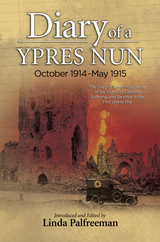 Diary of a Ypres Nun: October 1914-May 1915, The Diary of Soeur Marguerite of the Sisters of Lamotte: Suffering and Sacrifice in the First World War
Edited by Linda Palfreeman
Sussex Academic Press, 2022 The campaign in Flanders, with its successive battles, would be the longest of the Great War and the costliest in terms of human life. At the centre of the fearful and prolonged barrages of shelling by the military of both sides lay the town of Ypres, known for its Cloth Hall and cathedral, its butter and its lace-now to be blasted into infamy as an indelible symbol of suffering and sacrifice and wanton destruction. The underground passageways of the town's ancient fortifications provided shelter for the trapped townspeople. In desperate circumstances courageous and selfless individuals administered medical attention, distributed food and clothing, provided milk for babies and set up orphanages and schools for children. Some of these volunteers, such as the Friends' Ambulance Unit (FAU), came from afar, whilst others already formed an essential part of the moral and social fibre of the beleaguered town: these included the local priest, Camille Delaere, and the nuns who lent him their support. The cure's indefatigable assistant was the young nun Soeur Marguerite of the Sisters of Lamotte, and it is her daily journal that became The Diary of an Ypres Nun. Originally published in French in 1917, this harrowing yet sometimes surprisingly humorous account of events in the besieged and battered town of Ypres was written between October 1914 and May 1915, as she worked alongside the FAU and Father Delaere, to bring comfort and succour to the suffering civilian population. [Subject: WWI, Military History, French History]
Diary of Almon Harris Thompson: Explorations of the Colorado River of the West and Its Tributaries, 1871-1875
Herbert E Gregory
University of Utah Press, 2009 In some respects the most important of the early Colorado River exploration journals, the diaries of Almon Harris Thompson can naturally be divided into three sections: navigation of the Green and Colorado rivers; exploratory traverse from Kanab to the mouth of the Fremont River; and the systematic mapping of central, eastern, and southern Utah and northern Arizona. Thompson’s maps of the Colorado drainage basin, including the first maps of southern Utah and the canyons of the Green and Colorado rivers, place him in the front rank of geographic explorers and they proved invaluable to the later Powell expedition.
Originally published in 1939 as volume seven of the Utah Historical Quarterly, Thompson’s journal is reprinted here for the first time in seventy years. Co-published with the Utah State Historical Society.
The Diary of Calvin Fletcher, Volume 1: 1817-1838
Gayle Thornbrough
Indiana Historical Society Press, 1972 Calvin Fletcher, born in Vermont in 1798, came to Indiana from Ohio in 1821, and in the next forty-five years made a fortune, raised eleven children, and was a pillar of the community. This pioneer Indianapolis lawyer, banker, and philanthropist kept a diary for most of his long life, and in it he recorded both the growth of his family and his community. Whether complaining, criticizing, observing shrewdly, or agonizing, Fletcher emerges as both a complex and unforgettable human being. Each of the set's nine volumes has a preface, chronology, and index. Volume nine includes a cumulative index.
The Diary of Calvin Fletcher, Volume 2: 1838-1843
Gayle Thornbrough
Indiana Historical Society Press, 1973 Calvin Fletcher, born in Vermont in 1798, came to Indiana from Ohio in 1821, and in the next forty-five years made a fortune, raised eleven children, and was a pillar of the community. This pioneer Indianapolis lawyer, banker, and philanthropist kept a diary for most of his long life, and in it he recorded both the growth of his family and his community. Whether complaining, criticizing, observing shrewdly, or agonizing, Fletcher emerges as both a complex and unforgettable human being. Each of the set's nine volumes has a preface, chronology, and index. Volume nine includes a cumulative index.
The Diary of Calvin Fletcher, Volume 3: 1844-1847
Gayle Thornbrough
Indiana Historical Society Press, 1974 Calvin Fletcher, born in Vermont in 1798, came to Indiana from Ohio in 1821, and in the next forty-five years made a fortune, raised eleven children, and was a pillar of the community. This pioneer Indianapolis lawyer, banker, and philanthropist kept a diary for most of his long life, and in it he recorded both the growth of his family and his community. Whether complaining, criticizing, observing shrewdly, or agonizing, Fletcher emerges as both a complex and unforgettable human being. Each of the set's nine volumes has a preface, chronology, and index. Volume nine includes a cumulative index.
The Diary of Calvin Fletcher, Volume 4: 1848-1852
Gayle Thornbrough
Indiana Historical Society Press, 1975 Calvin Fletcher, born in Vermont in 1798, came to Indiana from Ohio in 1821, and in the next forty-five years made a fortune, raised eleven children, and was a pillar of the community. This pioneer Indianapolis lawyer, banker, and philanthropist kept a diary for most of his long life, and in it he recorded both the growth of his family and his community. Whether complaining, criticizing, observing shrewdly, or agonizing, Fletcher emerges as both a complex and unforgettable human being. Each of the set's nine volumes has a preface, chronology, and index. Volume nine includes a cumulative index.
The Diary of Calvin Fletcher, Volume 5: 1853-1856
Gayle Thornbrough
Indiana Historical Society Press, 1977 Calvin Fletcher, born in Vermont in 1798, came to Indiana from Ohio in 1821, and in the next forty-five years made a fortune, raised eleven children, and was a pillar of the community. This pioneer Indianapolis lawyer, banker, and philanthropist kept a diary for most of his long life, and in it he recorded both the growth of his family and his community. Whether complaining, criticizing, observing shrewdly, or agonizing, Fletcher emerges as both a complex and unforgettable human being. Each of the set's nine volumes has a preface, chronology, and index. Volume nine includes a cumulative index.
The Diary of Calvin Fletcher, Volume 6: 1857-1860
Gayle Thornbrough
Indiana Historical Society Press, 1978 Calvin Fletcher, born in Vermont in 1798, came to Indiana from Ohio in 1821, and in the next forty-five years made a fortune, raised eleven children, and was a pillar of the community. This pioneer Indianapolis lawyer, banker, and philanthropist kept a diary for most of his long life, and in it he recorded both the growth of his family and his community. Whether complaining, criticizing, observing shrewdly, or agonizing, Fletcher emerges as both a complex and unforgettable human being. Each of the set's nine volumes has a preface, chronology, and index. Volume nine includes a cumulative index.
The Diary of Calvin Fletcher, Volume 7: 1861-1862
Gayle Thornbrough
Indiana Historical Society Press, 1980 Calvin Fletcher, born in Vermont in 1798, came to Indiana from Ohio in 1821, and in the next forty-five years made a fortune, raised eleven children, and was a pillar of the community. This pioneer Indianapolis lawyer, banker, and philanthropist kept a diary for most of his long life, and in it he recorded both the growth of his family and his community. Whether complaining, criticizing, observing shrewdly, or agonizing, Fletcher emerges as both a complex and unforgettable human being. Each of the set's nine volumes has a preface, chronology, and index. Volume nine includes a cumulative index.
The Diary of Calvin Fletcher, Volume 8: 1863-1864
Gayle Thornbrough
Indiana Historical Society Press, 1981 Calvin Fletcher, born in Vermont in 1798, came to Indiana from Ohio in 1821, and in the next forty-five years made a fortune, raised eleven children, and was a pillar of the community. This pioneer Indianapolis lawyer, banker, and philanthropist kept a diary for most of his long life, and in it he recorded both the growth of his family and his community. Whether complaining, criticizing, observing shrewdly, or agonizing, Fletcher emerges as both a complex and unforgettable human being. Each of the set's nine volumes has a preface, chronology, and index. Volume nine includes a cumulative index.
The Diary of Calvin Fletcher, Volume 9: 1865-1866
Gayle Thornbrough
Indiana Historical Society Press, 1983 Calvin Fletcher, born in Vermont in 1798, came to Indiana from Ohio in 1821, and in the next forty-five years made a fortune, raised eleven children, and was a pillar of the community. This pioneer Indianapolis lawyer, banker, and philanthropist kept a diary for most of his long life, and in it he recorded both the growth of his family and his community. Whether complaining, criticizing, observing shrewdly, or agonizing, Fletcher emerges as both a complex and unforgettable human being. Each of the set's nine volumes has a preface, chronology, and index. Volume nine includes a cumulative index.
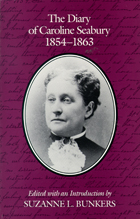 Diary of Caroline Seabury
Caroline Seabury
University of Wisconsin Press, 1991 In 1854 Caroline Seabury of Brooklyn, New York, set out for Columbus, Mississippi, to teach French at its Institute for Young Ladies. She lived in Columbus until 1863, through the years of mounting sectional bitterness that preceded the Civil War and through the turmoil and hardships of the war itself. During that time, her most intimate confidant was her diary. Discovered in the archives of the Minnesota State Historical Society, it is published here for the first time.
The diary is an illuminating account of southern plantation society and the “peculiar institution” of slavery on the eve of its destruction. Seabury also records her uneasy attempts to come to terms with her position as an unmarried, white, Northern woman whose job was to educate wealthy, white, Southern girls in a setting seemingly oblivious to the horrors of slavery. The diary is not simply a chronicle of daily happenings; Seabury concentrates on remarkable events and the memorable feelings and ideas they generate, shaping them into entries that reveal her as an accomplished writer. She frames her narrative with her journey south in 1854 and the hazardous and exhausting return north through battle lines in 1863.
Disapproving of slavery, yet deeply attached to friends and her life in Columbus and also painfully conscious of the fragility of her own economic and social position, Seabury condemned privately in her diary the evils that she endured silently in public. There are striking scenes of plantation life that depict the brutalities of slavery and benumbed responses to them. Seabury also successfully captures the mood of Mississippi as it changed from a fire-eating appetite to fight the Yankees to a grim apprehension of inexorable defeat. Most impressive of all is Seabury’s poignantly honest presentation of herself, caught in the middle.
 Diary of Charles Francis Adams
Charles Francis Adams
Harvard University Press A man’s twenty-seventh year is “critical,” according to Charles Francis Adams. And so his proved to be. Twenty-five at the start of these volumes, Adams had yet to embark on the public career that would mark him a statesman, but by their conclusion he had been drawn into the maelstrom of politics. It was an unwilling plunge, dictated by what both he and his father, John Quincy Adams, regarded as betrayal of the elder Adams by Daniel Webster and his Whigs. Once in, however, he showed himself politically adept.
This diary, kept from January 1833 to June 1836 and hitherto unpublished, has elements of hidden personal drama. Through private meetings and caucuses and newspaper articles signed with pseudonyms, the younger Adams found effective means to carry on political activities in the face of dilemmas posed by his father’s public prominence, his father-in-law’s contrary persuasions, and his own preferences. He emerged with growing self-respect and solid accomplishment as political journalist—his initial vocation.
The diary has fresh disclosures also about the personality of John Quincy Adams, shrewdly assessed by an observer uniquely placed to interpret domestic scenes as well as the greatly waged struggles in Washington against the Southern “slaveocracy” and “gag rules.”
Colorful figures in Boston’s political and social life are finely etched in outspoken appraisals characteristic of the Adamses. The diarist shows acuteness too in comments on books, sermons, paintings, the theater, and opera.
 Diary of Charles Francis Adams
Charles Francis Adams
Harvard University Press Third and last of the Adams dynasty of statesmen, Charles Francis Adams followed in his grandfather’s and father’s footsteps by keeping a diary from youth to old age. With only a few gaps in the earliest years, Charles Francis Adams’s diary extends from 1820 to 1880, furnishing a massively detailed and intensely personal record of the writer’s life as an undergraduate at Harvard, manager of the Adams family’s business affairs, historian and biographer, Free Soil political leader and Republican Congressman, United States minister in London during the Civil War, arbitrator of the Alabama claims at the Geneva Tribunal, and father of a whole constellation of gifted sons.
The Diary of Charles Francis Adams is the second to appear in the Diaries Series of the Belknap Press edition of the Adams Papers. Unlike John Adams’s Diary and Autobiography and John Quincy Adams’s Diary, that of Charles Francis Adams has never before been even selectively published. This is partly because the protracted efforts of the family to prepare a satisfactory edition after the writer’s death finally broke down under the sheer bulk of the material.
The present volume reveals Charles Francis Adams as a sensitive and self-critical young man: in the social whirl of Washington while his father was Secretary of State and President, during his training as a lawyer in Daniel Webster’s Boston law office, and throughout his prolonged courtship of Abigail B. Brooks, a New England heiress. A central theme of these volumes is the struggle which raged within young Adams’s mind and heart between the warm, poetic heritage of his Southern-born mother and the cold, political, New England legacy of his Adams forebears. The defeat of his father in the 1828 election, the tragic death of his older brother, and his marriage to Abigail in 1829, with which the volume ends, were way stations in his course toward making himself a “New England man.” This complex struggle in a young man’s mind is one of the most fully chronicled and dramatic episodes in the entire body of the Adams family archives at the Massachusetts Historical Society, under whose supervision the Adams Papers are being edited.
 Diary of Charles Francis Adams
Charles Francis Adams
Harvard University Press The period of June 1836 to February 1840, from Charles Francis Adams’s twenty-eighth to thirty-second year, was characterized by his turn from the political activities that had occupied him for the preceding several years. The course of the Van Buren administration he had helped to elect dissatisfied him, the Massachusetts Whig leadership had earned his distrust, positions on political issues that would either echo or oppose those being vigorously espoused by his father, John Quincy Adams, he felt inhibited from avowing publicly. So confronted, Charles found occupation in preparing and expressing himself on economic matters of moment—banking and currency—and moral questions generated by the slavery issue. With increasing effectiveness he employed the lecture platform and the press for the expression of views to which he felt free to attach his name. On all these matters he found his opinions at odds with the prevailing ones held among those prominent in the Boston scene, as John Adams and John Quincy Adams had found before him. Yet, despite a sense of loneliness, so induced, his participation in the varied social life of the city has its place in the Diary.
However, activities in Boston and its environs that provided a focus for the record of the preceding years give way in these volumes to wider scenes made available by train and ship. An extensive journey with his wife by way of the Hudson River and the Erie Canal to Niagara and Canada, a visit of some length and interest in Washington, and stays of lesser length in New York City are recounted.
Wide and persistent reading, the theater, numismatics, and the building of a summer home in Quincy also occupied him and are fully reflected in his journal. Family tragedies are not absent from its pages. As the period comes to its close his long and distinguished labors as editor of the family’s papers had begun. A new self-assurance has become evident.
 Diary of Charles Francis Adams
Charles Francis Adams
Harvard University Press Third and last of the Adams dynasty of statesmen, Charles Francis Adams followed in his grandfather’s and father’s footsteps by keeping a diary from youth to old age. With only a few gaps in the earliest years, Charles Francis Adams’s diary extends from 1820 to 1880, furnishing a massively detailed and intensely personal record of the writer’s life as an undergraduate at Harvard, manager of the Adams family’s business affairs, historian and biographer, Free Soil political leader and Republican Congressman, United States minister in London during the Civil War, arbitrator of the Alabama claims at the Geneva Tribunal, and father of a whole constellation of gifted sons.
The Diary of Charles Francis Adams is the second to appear in the Diaries Series of the Belknap Press edition of the Adams Papers. Unlike John Adams’s Diary and Autobiography and John Quincy Adams’s Diary, that of Charles Francis Adams has never before been even selectively published. This is partly because the protracted efforts of the family to prepare a satisfactory edition after the writer’s death finally broke down under the sheer bulk of the material.
The present volume reveals Charles Francis Adams as a sensitive and self-critical young man during his college years, in the social whirl of Washington while his father was Secretary of State and President, during his training as a lawyer in Daniel Webster’s Boston law office, and throughout his prolonged courtship of Abigail B. Brooks, a New England heiress. A central theme of these volumes is the struggle which raged within young Adams’s mind and heart between the warm, poetic heritage of his Southern-born mother and the cold, political, New England legacy of his Adams forebears.
 Diary of Charles Francis Adams
Charles Francis Adams
Harvard University Press In these volumes the second decade of the sixty-year diary of Charles Francis Adams, the third of the family’s statesmen, is begun. As was true of the two earlier volumes of the Diary, the section appearing here has not before reached print.
Covering the period from Adams’s marriage in September 1829 to the end of 1832, these volumes record the early years of his maturity during which he was seeking to find his vocation. Engaged in the day-to-day management of John Adams’s business interests in Boston, he nevertheless had no inclination toward commerce or the active practice of law. Son and grandson of presidents, proud heir to a name already great and controversial in American politics, he also at this time considered himself “not fitted for the noise of public life.” Dependent for support on his father and father-in-law but determined to maintain his independence, he devoted his available time to a program of studies and writing that would prepare him for a career he hesitated to name but in which he wished distinction. His own public career still years away, he was drawn at this period to the study of American history and his famous grandparents’ papers, an effort that would continue and that would make him the family’s archivist and editor.
These volumes offer manifold opportunities for an enlarged understanding of a complex and able man who was later to assume positions of high responsibility. In addition to furnishing innumerable personal and familial insights, this portion of the diary is of capital importance for the historian of society and culture. Probably no more detailed and faithful record exists of Boston life in the period.
 Diary of Charles Francis Adams
Charles Francis Adams
Harvard University Press, 1964 Third and last of the Adams dynasty of statesmen, Charles Francis Adams followed in his grandfather's and father's footsteps by keeping a diary from youth to old age. With only a few gaps in the earliest years, Charles Francis Adams' diary extends from 1820 to 1880, furnishing a massively detailed and intensely personal record of the writer's life as an undergraduate at Harvard, manager of the Adams family's business affairs, historian and biographer, Free Soil political leader and Republican Congressman, United States minister in London during the Civil War, arbitrator of the Alabama claims at the Geneva Tribunal, and father of a whole constellation of gifted sons.
The Diary of Charles Francis Adams, which is expected to run to at least eighteen volumes under the editorship of Professor and Mrs. Donald, is the second to appear in the Diaries Series of the Belknap Press edition of The Adams Papers. Unlike John Adams' Diary and Autobiography (4 volumes, 1961) and John Quincy Adams' Diary (in preparation), that of Charles Francis Adams has never before been even selectively published. This is partly because the protracted efforts of the family to prepare a satisfactory edition after the writer's death finally broke down under the sheer bulk of the material.
The present two volumes reveal Charles Francis Adams as a sensitive and self-critical young man during his college years, in the social whirl of Washington while his father was Secretary of State and President, during his training as a lawyer in Daniel Webster's Boston law office, and throughout his proonged courtship of Abigail B. Brooks, a New England heiress. A central theme of these volumes is the struggle which raged within young Adams' mind and heart between the warm, poetic heritage of his Southern-born mother and the cold, political, New England legacy of his Adams forebears. The defeat of his father in the 1828 ejection, the tragic death of his older brother, and his marriage to Abigail in 1829, with which the volumes end, were way stations in his course toward making himself a 'New England man." This complex struggle in a young man's mind is one of the most fully chronicled and dramatic episodes in the entire body of the Adams family archives at the Massachusetts Historical Society, tinder whose supervision The Adams Papers are being edited.
 Diary of Frederick Mackenzie
Frederick Mackenzie
Harvard University Press Part of this diary, describing the events at Lexington and Concord on April 19, 1775, was published a few years ago under the title “A British Fusilier in Revolutionary Boston.” The present volume includes that section as well as all the remainder of the remarkable diary kept between 1775 and 1781 by Frederick Mackenzie; it is printed without editing. The diarist’s entries include details of what happened in and round Rhode Island in the years 1776 and 1778, a detailed description of the events in New York during the twelve months from January to December, 1781, and reports received at headquarters during that time regarding the doings of the fleet and the campaign farther south that culminated in the surrender of Cornwallis. Mackenzie records his facts in a notably impersonal way; his cool-headedness, his judiciousness, his competence as a soldier, his keenness as an observer, and his dry exactness of style inspire the reader with the greatest confidence and make his one of the best British diaries of the Revolutionary period.
 Diary of John Quincy Adams
John Quincy Adams
Harvard University Press Volumes 1 and 2 of the Diary of John Quincy Adams begin the publication of the greatest diary, both in mass and substance, in American History. Recording a span of sixty-eight years, it has been known heretofore only in partial form. When, over a hundred years ago, Charles Francis Adams edited his grandfather’s diary, he chose to omit “the details of common life,” reduce “the moral and religious speculations,” and retain criticisms of others only if they applied to public figures “acting in the same sphere with the writer.”
Now the diary is being published complete for the first time. Starting with the entries of a twelve-year-old, the present volumes cover John Quincy Adams’s formative year—his schooling and travel abroad, study at Harvard, and the first months of training for the law. Adams’s six years overseas with his father took him to a half dozen countries, with lengthy stays in Paris, the Netherlands, and St. Petersburg. On his return he stayed for a time in New York, making the acquaintance of influential congressmen. To finish preparing for college, he lived with an aunt and uncle in Haverhill, caught up in a round of social activities. Entering Harvard with junior standing in the spring of 1786, he graduated in fifteen months.
As Adams matured, diary entries became less a dutiful response to a father’s request and more a record of the young man’s perceptive observations and reflections—and thus a rich source for social history. There are accounts of play-going in Paris, evenings with Lafayette and Jefferson, the diversions of rural New England, apprenticeship in a Newburyport law office. And through the eyes of a serious but not unbending student we are given a picture of Harvard in the 1780s.
Candid opinions of preachers, writers, men of affairs, and family members accompany the closest self-scrutiny. Here is a remarkable record of the passage from adolescence to manhood of a precocious and sensitive boy torn by self-doubt and driving himself to fulfill his promise and his parents’ expectations.
 Diary of John Quincy Adams
John Quincy Adams
Harvard University Press Volumes 1 and 2 of the Diary of John Quincy Adams begin the publication of the greatest diary, both in mass and substance, in American History. Recording a span of sixty-eight years, it has been known heretofore only in partial form. When, over a hundred years ago, Charles Francis Adams edited his grandfather’s diary, he chose to omit “the details of common life,” reduce “the moral and religious speculations,” and retain criticisms of others only if they applied to public figures “acting in the same sphere with the writer.”
Now the diary is being published complete for the first time. Starting with the entries of a twelve-year-old, the present volumes cover John Quincy Adams’s formative year—his schooling and travel abroad, study at Harvard, and the first months of training for the law. Adams’s six years overseas with his father took him to a half dozen countries, with lengthy stays in Paris, the Netherlands, and St. Petersburg. On his return he stayed for a time in New York, making the acquaintance of influential congressmen. To finish preparing for college, he lived with an aunt and uncle in Haverhill, caught up in a round of social activities. Entering Harvard with junior standing in the spring of 1786, he graduated in fifteen months.
As Adams matured, diary entries became less a dutiful response to a father’s request and more a record of the young man’s perceptive observations and reflections—and thus a rich source for social history. There are accounts of play-going in Paris, evenings with Lafayette and Jefferson, the diversions of rural New England, apprenticeship in a Newburyport law office. And through the eyes of a serious but not unbending student we are given a picture of Harvard in the 1780s.
Candid opinions of preachers, writers, men of affairs, and family members accompany the closest self-scrutiny. Here is a remarkable record of the passage from adolescence to manhood of a precocious and sensitive boy torn by self-doubt and driving himself to fulfill his promise and his parents’ expectations.
 Diary of John Quincy Adams
John Quincy Adams
Harvard University Press, 1981 These volumes begin the publication of the greatest diary, both in mass and substance, in American History. Recording a span of sixty-eight years, it has been known heretofore only in partial form. When, over a hundred years ago, Charles Francis Adams edited his grandfather’s diary, he chose to omit “the details of common life,” reduce “the moral and religious speculations,” and retain criticisms of others only if they applied to public figures “acting in the same sphere with the writer.”
Now the diary is being published complete for the first time. Starting with the entries of a twelve-year-old, the present volumes cover John Quincy Adams’ formative year—his schooling and travel broad, study at Harvard, and the first months of training for the law. Adams’ six years overseas with his father took him to a half dozen countries, with lengthy stays in Paris, the Netherlands, and St. Petersburg. On his return he stayed for a time in New York, making the acquaintance of influential congressmen. To finish preparing for college, he lived with an aunt and uncle in Haverhill, caught up in a round of social activities. Entering Harvard with junior standing in the spring of 1786, he graduated in fifteen months.
As Adams matured, diary entries became less a dutiful response to a father’s request and more a record of the young man’s perceptive observations and reflections—and thus a rich source for social history. There are accounts of play-going in Paris, evenings with Lafayette and Jefferson, the diversions of rural New England, apprenticeship in a Newburyport law office. And through the eyes of a serious but not unbending student we are given a picture of Harvard in the 1780s.
Candid opinions of preachers, writers, men of affairs, and family members accompany the closest self-scrutiny. Here is a remarkable record of the passage from adolescence to manhood of a precocious and sensitive boy torn by self-doubt and driving himself to fulfill his promise and his parents’ expectations.
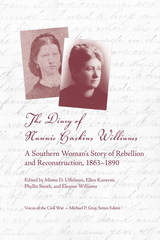 The Diary of Nannie Haskins Williams: A Southern Woman’s Story of Rebellion and Reconstruction, 1863–1890
Minoa D. Uffelman
University of Tennessee Press, 2014 In 1863, while living in Clarksville, Tennessee, Martha Ann Haskins, known to friends and family as Nannie, began a diary. The Diary of Nannie Haskins Williams: A Southern Woman’s Story of Rebellion and Reconstruction, 1863–1890 provides valuable insights into the conditions in occupied Middle Tennessee. A young, elite Confederate sympathizer, Nannie was on the cusp of adulthood with the expectation of becoming a mistress in a slaveholding society. The war ended this prospect, and her life was forever changed. Though this is the first time the diaries have been published in full, they are well known among Civil War scholars, and a voice-over from the wartime diary was used repeatedly in Ken Burns’s famous PBS program The Civil War.
Sixteen-year-old Nannie had to come to terms with Union occupation very early in the war. Amid school assignments, young friendship, social events, worries about her marital prospects, and tension with her mother, Nannie’s entries also mixed information about battles, neighbors wounded in combat, U.S. Colored troops, and lawlessness in the surrounding countryside. Providing rare detail about daily life in an occupied city, Nannie’s diary poignantly recounts how she and those around her continued to fight long after the war was over—not in battles, but to maintain their lives in a war-torn community.
Though numerous women’s Civil War diaries exist, Nannie’s is unique in that she also recounts her postwar life and the unexpected financial struggles she and her family experienced
in the post-Reconstruction South. Nannie’s diary may record only one woman’s experience, but she represents a generation of young women born into a society based on slavery but who faced mature adulthood in an entirely new world of decreasing farm values, increasing industrialization, and young women entering the workforce. Civil War scholars and students alike will learn much from this firsthand account of coming-of-age during the Civil War.
Minoa D. Uffelman is an associate professor of history at Austin Peay State University. Ellen Kanervo is professor emerita of communications at Austin Peay State University. Phyllis Smith is retired from the U.S. Army and currently teaches high school science in Montgomery County, Tennessee. Eleanor Williams is the Montgomery County, Tennessee, historian.
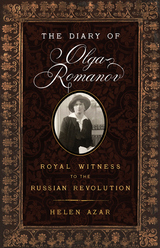 The Diary of Olga Romanov: Royal Witness to the Russian Revolution
Helen Azar
Westholme Publishing, 2014 The First English Translation of the Wartime Diaries of the Eldest Daughter of Nicholas II, the Last Tsar of Russia, with Additional Documents of the Period In August 1914, Russia entered World War I, and with it, the imperial family of Tsar Nicholas II was thrust into a conflict they would not survive. His eldest child, Olga Nikolaevna, great-granddaughter of Queen Victoria, had begun a diary in 1905 when she was ten years old and kept writing her thoughts and impressions of day-to-day life as a grand duchess until abruptly ending her entries when her father abdicated his throne in March 1917. Held at the State Archives of the Russian Federation in Moscow, Olga’s diaries during the wartime period have never been translated into English until this volume. At the outset of the war, Olga and her sister Tatiana worked as nurses in a military hospital along with their mother, Tsarina Alexandra. Olga’s younger sisters, Maria and Anastasia, visited the infirmaries to help raise the morale of the wounded and sick soldiers. The strain was indeed great, as Olga records her impressions of tending to the officers who had been injured and maimed in the fighting on the Russian front. Concerns about her sickly brother, Aleksei, abound, as well those for her father, who is seen attempting to manage the ongoing war. Gregori Rasputin appears in entries, too, in an affectionate manner as one would expect of a family friend. While the diaries reflect the interests of a young woman, her tone grows increasingly serious as the Russian army suffers setbacks, Rasputin is ultimately murdered, and a popular movement against her family begins to grow. At the point Olga ends her writing in 1917, the author continues the story by translating letters and impressions from family intimates, such as Anna Vyrubova, as well as the diary kept by Nicholas II himself. Finally, once the imperial family has been put under house arrest by the revolutionaries, we follow events through observations by Alexander Kerensky, head of the initial Provisional Government, these too in English translation for the first time. Olga would offer no further personal writings, as she and the rest of her family were crowded into the basement of a house in the Urals and shot to death in July 1918. The Diary of Olga Romanov: Royal Witness to the Russian Revolution, translated and introduced by scientist and librarian Helen Azar, and supplemented with additional primary source material, is a remarkable document of a young woman who did not choose to be part of a royal family and never exploited her own position, but lost her life simply because of what her family represented.
Diary of Our Fatal Illness
Charles Bardes
University of Chicago Press, 2017 This moving prose poem tells the story of an aged man who suffers a prolonged and ultimately fatal illness. From initial diagnosis to remission to relapse to death, the experience is narrated by the man’s son, a practicing doctor. Charles Bardes, a physician and poet, draws on years of experience with patients and sickness to construct a narrative that links myth, diverse metamorphoses, and the modern mechanics of death. We stand with the doctors, the family, and, above all, a sick man and his disease as their voices are artfully crafted into a new and powerful language of illness.
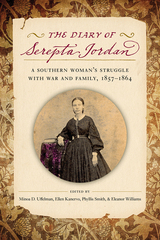 The Diary of Serepta Jordan: A Southern Woman's Struggle with War and Family, 1857–1864
Minoa Uffelman
University of Tennessee Press, 2020 Discovered in a smokehouse in the mid-1980s, the diary of Serepta Jordan provides a unique window into the lives of Confederates living in occupied territory in upper middle Tennessee. A massive tome, written in a sturdy store ledger, the diary records every day from the fall of 1857 to June 1864. In this abridged version, Jordan reports local news, descriptions of her daily activities, war news, and social life. Orphaned at twelve, Jordan—her first name shortened to “Rep” by family and friends—lived in bustling New Providence (now part of Clarksville), Tennessee, on the banks of the Red River. Well educated by private tutors, Jordan read widely, followed politics, and was a skilled seamstress interested in the latest fashions.
Jordan’s descendants worked tirelessly toward ensuring the publication of this diary. In its carefully annotated pages, readers will learn about the years of sectional conflict leading up to the war, the diarist’s dizzying array of daily activities, and her attitudes toward those she encountered. Jordan takes a caustic tone toward Union occupiers, whom she accused of “prancing round on their fine horses.” She routinely refers to the USA as “Lincolndom” and describes her contempt toward the African Americans in the blue uniforms of the Union army. She seems to have also harbored a bitter resentment toward the “elites” on the other side of the river in Clarksville. This one-of-a-kind volume not only adds a distinct female voice to the story of the Civil War, but also a unique new picture of the slow but steady disintegration of the “peculiar institution” of slavery.
Diary of Small Discontents: New & Selected Poems 1974–2024
John Yau
Omnidawn, 2025 A collection of poetry showcasing the diversity of subjects and forms in Yau’s writing.
This collection brings together work from half a century of writing by John Yau. Preoccupied with forms and musical structures, Yau’s work includes sestinas, sonnets, pantoums, and lists, as well as invented forms. Employing both strict and open-ended frameworks, Yau creates multi-faceted poems that can shift abruptly from humor to outrage and consider topics including Chinese American identity, school shootings, invented countries, and haunted memories. Some poems are grounded in an autobiographical voice, while others take on the voices of other characters, including contemporary artists and a fictional Chinese private eye.
Spanning the vast diversity of Yau’s forms and subjects, the poems in Diary of Small Discontents add up to an unapologetically original collection.
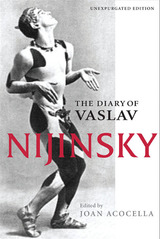 The Diary of Vaslav Nijinsky
Vaslav Nijinsky
University of Illinois Press, 2006 A uniquely personal record of a great artist’s experience of mental illness In his prime, Vaslav Nijinsky (1889-1950) was the most celebrated man in Western ballet--a virtuoso and a dramatic dancer such as European and American audiences had never seen before. After his triumphs in such works as The Specter of the Rose and Petrouchka, he set out to make ballets of his own, and with his Afternoon of a Faun and The Rite of Spring, created within a year of each other, he became ballet’s first modernist choreographer. For six weeks in early 1919, as his tie to reality was giving way, Nijinsky kept a diary--the only sustained daily record we have, by a major artist, of the experience of entering psychosis. In some entries he is filled with hope. He is God; he will save the world. In other entries, he falls into a black despair. He is dogged by sexual obsessions and grief over World War I. Furthermore, he is afraid that he is going insane. The diary was first published in 1936, in a version heavily bowdlerized by Nijinsky’s wife. The new edition, translated by Kyril FitzLyon, is the first complete and accurate English rendering of this searing document. In her introduction, noted dance critic Joan Acocella tells Nijinsky’s story and places it in the context of early European modernism.
Diary Volume 1
Witold Gombrowicz
Northwestern University Press, 1988 This is the first English translation of Witold Gombrowicz's Diary, the most Polish and the most universal of his works. Gombrowicz (1904-1969), who left Poland at age thirty-five and never returned, whose writings were banned in his own country, has had an impact on Polish literature unlike any of his contemporaries. But he changed more than the image of Polish letters. If literature cannot influence national character, it can at least influence the national image, its understanding and evaluation of itself. That is what Gombrowicz changed: the image and stereotype of the Pole.
Diary Volume 2
Witold Gombrowicz
Northwestern University Press, 1989 This is the first English translation of Witold Gombrowicz's Diary, the most Polish and the most universal of his works. Volume Two explores a more personal and intimate side of Gombrowicz in his adopted country of Argentina. Gombrowicz takes the readers into salons, homes, encounters in restaurants and theaters, dramatizing and self-dramatizing, turning the Diary into a work blending techniques of fiction and theater.
Diary Volume 3
Witold Gombrowicz
Northwestern University Press, 1993 This is the first English translation of Witold Gombrowicz's <i>Diary,</i> the most Polish and the most universal of his works. Volume Three records Gombrowicz's departure from Argentina for Europe, where he spends a year in Berlin and settles on the French Riviera. It details his friendship with Bruno Schulz, his reflections on Dante's "monstrous work," and his responses to the work of contemporaries, and in so doing reveals the core of a great writer's sensibility.
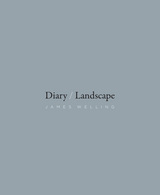 Diary/Landscape
James Welling
University of Chicago Press, 2014 For more than thirty-five years, James Welling has explored the material and conceptual possibilities of photography. Diary/Landscape—the first mature body of work by this important contemporary artist—set the framework for his subsequent investigations of abstraction and his fascination with nineteenth- and twentieth-century New England.
In July 1977, Welling began photographing a two-volume travel diary kept by his great-grandmother Elizabeth C. Dixon, as well as landscapes in southern Connecticut. In one closely cropped image, lines of tight cursive share the page with a single ivy leaf preserved in the diary. In another snowy image, a stand of leafless trees occludes the gleaming Long Island sound. In subject and form, Welling emulated the great American modernists Alfred Stieglitz, Paul Strand, and Walker Evans—a bold move for an artist associated with radical postmodernism. At the same time, Welling’s close-ups of handwriting push to the fore the postmodernist themes of copying and reproduction.
A beautiful and moving meditation on family, history, memory, and place, Diary/Landscape reintroduced history and private emotion as subjects in high art, while also helping to usher in the centrality of photography and theoretical questions about originality that mark the epochal Pictures Generation. The book is published to accompany the first-ever complete exhibition of this series of pivotal photographs, now owned by the Art Institute of Chicago.
 Diaspora and Immigration, Volume 98
V. Y. Mudimbe and Sabine Engel
Duke University Press An interdisciplinary, international collection of essays, case studies, position papers, and roundtable discussions, Diaspora and Immigration is unified (like the 1996 Stanford University seminar that inspired it) by the paradox which—and on which—it reflects: We are all minorities constituting multiple diasporas in our own countries and elsewhere. Experts from a variety of fields—anthropology, sociology, history, literature, and African, Hispanic, and Jewish studies—examine specific diasporas, immigrant communities, and “border identities” ranging from Muslims in Europe to Chicanos in Texas, from Chinese immigrants in California to the "peach blossom diaspora" in Taiwan. They discuss the Jewish Diaspora and the creation of the State of Israel, as well as two centuries of Irish diasporic experiences in Australia and America. Following testimonies by German, Filipino, Italian American, and South African Israeli academics, who scrutinize their respective "personal diasporas," this special issue concludes with some afterthoughts on diaspora and the potential for global unity in the face of today's global diversity. Contributors. Jean Bazin, Louis Shabat Bethlehem, Gordon H. Chang, Ngwarsungu Chiwengo, Eileen Cheng-yin Chow, Christopher Davis, Marcel Detienne, Sabine Engel, Daphna Golan, Hans Ulrich Gumbrecht, Ramón A. Gutiérrez, Daniel Itzkovitz, Riva Kastoryano, Vassilis Lambropoulos, V. Y. Mudimbe, Peter Murphy, Richard Roberts, Aron Rodrigue, Ramón Saldívar, Kenneth J. Surin, Neferti Xina M. Tadiar, Marianna De Marco Torgovnick, Danielle Trudeau, Candice Ward, Steven Zipperstein
Diaspora and Transnationalism: Concepts, Theories and Methods
Edited by Rainer Bauböck and Thomas Faist
Amsterdam University Press, 2010
Diaspora and transnationalism are concepts that have become very popular in modern academic and political discourses. And while most of the new literature treats the two separately, this book studies these fields alongside one another. Rainer Bauböck and Thomas Faist bring together scholars from a wide range of academic disciplines to discuss the concepts, theories, and methodologies used in the study of border-crossing affiliations.
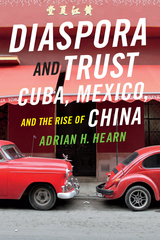 Diaspora and Trust: Cuba, Mexico, and the Rise of China
Adrian H. Hearn
Duke University Press, 2016 In Diaspora and Trust Adrian H. Hearn proposes that a new paradigm of socio-economic development is gaining importance for Cuba and Mexico. Despite their contrasting political ideologies, both countries must build new forms of trust among the state, society, and resident Chinese diaspora communities if they are to harness the potentials of China’s rise. Combining political and economic analysis with ethnographic fieldwork, Hearn analyzes Cuba's and Mexico's historical relations with China, and highlights how Chinese diaspora communities are now deepening these ties. Theorizing trust as an alternative to existing models of exchange—which are failing to navigate the world's shifting economic currents—Hearn shows how Cuba and Mexico can reformulate the balance of power between state, market, and society. A new paradigm of domestic development and foreign engagement based on trust is becoming critical for Cuba, Mexico, and other countries seeking to benefit from China’s growing economic power and social influence.
Diaspora Identities: Exile, Nationalism and Cosmopolitanism in Past and Present
Edited by Susanne Lachenicht and Kirsten Heinsohn
Campus Verlag, 2009 Historical work on the late nineteenth and early twentieth centuries suggests that as nation-states were solidifying throughout Western Europe, exiled groups tended to develop rival national identities—an occurrence that had been fairly uncommon in the two preceding centuries. Diaspora Identities draws on eight case studies, ranging from the early modern period through the twentieth century, to explore the interconnectedness of exile, nationalism, and cosmopolitanism as concepts, ideals, attitudes, and strategies among diasporic groups.
 Diaspora: Jews amidst Greeks and Romans
Erich S. Gruen
Harvard University Press, 2004 What was life like for Jews settled throughout the Mediterranean world of Classical antiquity--and what place did Jewish communities have in the diverse civilization dominated by Greeks and Romans? In a probing account of the Jewish diaspora in the four centuries from Alexander the Great's conquest of the Near East to the Roman destruction of the Jewish Temple in 70 C.E., Erich Gruen reaches often surprising conclusions.
By the first century of our era, Jews living abroad far outnumbered those living in Palestine and had done so for generations. Substantial Jewish communities were found throughout the Greek mainland and Aegean islands, Asia Minor, the Tigris-Euphrates valley, Egypt, and Italy. Focusing especially on Alexandria, Greek cities in Asia Minor, and Rome, Gruen explores the lives of these Jews: the obstacles they encountered, the institutions they established, and their strategies for adjustment. He also delves into Jewish writing in this period, teasing out how Jews in the diaspora saw themselves. There emerges a picture of a Jewish minority that was at home in Greco-Roman cities: subject to only sporadic harassment; its intellectuals immersed in Greco-Roman culture while refashioning it for their own purposes; exhibiting little sign of insecurity in an alien society; and demonstrating both a respect for the Holy Land and a commitment to the local community and Gentile government. Gruen's innovative analysis of the historical and literary record alters our understanding of the way this vibrant minority culture engaged with the dominant Classical civilization.
 Diaspora Philanthropy and Equitable Development in China and India
Peter F. Geithner
Harvard University Press, 2004 Diaspora philanthropy is not a new phenomenon. But in an era of accelerated globalization, the relationship between diaspora philanthropy and the economic and social development of many countries is increasingly relevant. Modern diasporas are diverse and continually shifting; more people are moving more rapidly, more easily, and over greater distances than ever before. This is certainly true of recent migrants from China and India to the United States. In Silicon Valley, Asian Americans are estimated to constitute over 30 percent of the highly paid scientific and engineering workforce and represent one-third of the region's millionaires. As their wealth has grown, so too has their charitable giving—both to their old as well as to their new countries of residence.
This volume aims to advance understanding of diaspora philanthropy in the Chinese American and Indian American communities, especially the implications for development of the world's two most populous countries.
 Diaspora Without Displacement: The Coloniality and Promise of Capoeira in Senegal
Celina de Sá
Duke University Press, 2025 Capoeira—a game of combat primarily developed by enslaved West Central Africans—has become an icon of both Brazilian national culture and pride in the country’s diasporic African heritage. Yet the sport remains less accessible in Africa itself, overshadowed in large part by participants in the Global North. In Diaspora Without Displacement, Celina de Sá tells the story of capoeira as it "returns" to the African continent through the creative initiatives of young urban professionals in Senegal. De Sá demonstrates how a new generation of African capoeiristas are taking up their own Afro-diasporic performance tradition, effectively reframing notions of diaspora and race through their social practice. Though capoeira has largely Angolan roots and the agents of return are typically white Brazilians and Europeans, the West African practitioners de Sá documents nonetheless form an exceptional relationship to capoeira that, in turn, becomes a mode of political and social consciousness. Analyzing a capoeira network across West Africa, de Sá shows how urban West Africans use capoeira to explore the relationship between Blackness, diaspora, and African heritage.
 Diasporas and Development
Barbara J. Merz
Harvard University Press, 2007 Just as trade, finance, information, and technologies are moving rapidly across borders, so too have labor markets and transnational migrant communities. Migrants are sending large quantities of money back to their countries of origin in the form of philanthropy, remittances, and commercial investments. They are also sharing knowledge and skills learned or developed abroad. Is greater global equity an inevitable consequence of such diaspora philanthropy, or can this giving actually aggravate inequity? Diasporas and Development examines the positive—and sometimes negative—impacts of diaspora engagement in Africa, Asia, Central America, and the Caribbean.
How can the equity impact of this global giving be maximized? Might creative intermediary mechanisms or public policies help channel diaspora philanthropy in positive directions? They also explore motivations for the dark sides of diaspora engagement such as support for extremist organizations, organized crime, ethnic violence, and even civil war. Diasporas and Development aims to deepen the understanding of the promise and pitfalls of diaspora philanthropy and how it might help bridge the distances between societies in an unequal world.
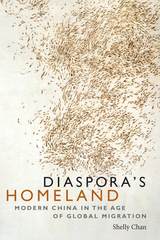 Diaspora's Homeland: Modern China in the Age of Global Migration
Shelly Chan
Duke University Press, 2018 In Diaspora’s Homeland Shelly Chan provides a broad historical study of how the mass migration of more than twenty million Chinese overseas influenced China’s politics, economics, and culture. Chan develops the concept of “diaspora moments”—a series of recurring disjunctions in which migrant temporalities come into tension with local, national, and global ones—to map the multiple historical geographies in which the Chinese homeland and diaspora emerge. Chan describes several distinct moments, including the lifting of the Qing emigration ban in 1893, intellectual debates in the 1920s and 1930s about whether Chinese emigration constituted colonization and whether Confucianism should be the basis for a modern Chinese identity, as well as the intersection of gender, returns, and Communist campaigns in the 1950s and 1960s. Adopting a transnational frame, Chan narrates Chinese history through a reconceptualization of diaspora to show how mass migration helped establish China as a nation-state within a global system.
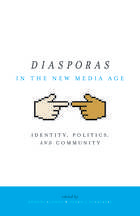 Diasporas in the New Media Age: Identity, Politics, and Community
Andoni Alonso
University of Nevada Press, 2010 The explosion of digital information and communication technologies has influenced almost every aspect of contemporary life. Diasporas in the New Media Age is the first book-length examination of the social use of these technologies by emigrants and diasporas around the world. The eighteen original essays in the book explore the personal, familial, and social impact of modern communication technology on populations of European, Asian, African, Caribbean, Middle Eastern, and Latin American emigrants. It also looks at the role and transformation of such concepts as identity, nation, culture, and community in the era of information technology and economic globalization. The contributors, who represent a number of disciplines and national origins, also take a range of approaches—empirical, theoretical, and rhetorical—and combine case studies with thoughtful analysis. Diasporas in the New Media Age is both a discussion of the use of communication technologies by various emigrant groups and an engaging account of the immigrant experience in the contemporary world. It offers important insights into the ways that dispersed populations are using digital media to maintain ties with their families and homeland, and to create new communities that preserve their culture and reinforce their sense of identity. In addition, the book is a significant contribution to our understanding of the impact of technology on society in general.
 Diasporas of Australian Cinema
Edited by Catherine Simpson, Renata Murawska, and Anthony Lambert
Intellect Books, 2009 This volume is the first to focus exclusively on diasporic filmmaking and the rich cultural diversity within Australian cinema, and it contains previously unpublished articles by some of the foremost experts on Australian cinema in the world. Contributors to Diasporas of Australian Cinema discuss a variety of contemporary and historical filmmaking, encompassing documentaries, features and short films. A number of key feature films are discussed including Forty Thousand Horsemen, Silver City, Wog Boy, Head On, Russian Doll, Japanese Story, and Lucky Miles. Opening with a comprehensive chapter that introduces the organizing concept of this volume, diasporic hybridity, the essays go on to explore migration, Asian-Australian subjectivity, cross-cultural romance, Islamic-Australian identity and “wogsploitation” comedy. A useful reference source for scholars of film, migration, cultural, and Australian studies, Diasporas of Australian Cinema also features a comprehensive filmography listing Australian features, documentaries and shorts with significant diasporic content.
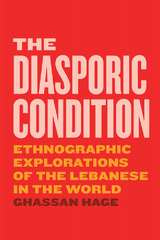 The Diasporic Condition: Ethnographic Explorations of the Lebanese in the World
Ghassan Hage
University of Chicago Press, 2021 Bridging the gap between migration studies and the anthropological tradition, Ghassan Hage illustrates that transnationality and its attendant cultural consequences are not necessarily at odds with classic theory.
In The Diasporic Condition, Ghassan Hage engages with the diasporic Lebanese community as a shared lifeworld, defining a common cultural milieu that transcends spatial and temporal distance—a collective mode of being here termed the “diasporic condition.” Encompassing a complicated transnational terrain, Hage’s long-term ethnography takes us from Mehj and Jalleh in Lebanon to Europe, Australia, South America, and North America, analyzing how Lebanese migrants and their families have established themselves in their new homes while remaining socially, economically, and politically related to Lebanon and to each other.
At the heart of The Diasporic Condition lies a critical anthropological question: How does the study of a particular sociocultural phenomenon expand our knowledge of modes of existing in the world? As Hage establishes what he terms the “lenticular condition,” he breaks down the boundaries between “us” and “them,” “here” and “there,” showing that this convergent mode of existence increasingly defines everyone’s everyday life.
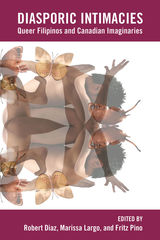 Diasporic Intimacies: Queer Filipinos and Canadian Imaginaries
Edited by Robert Diaz, Marissa Largo, and Fritz Pino
Northwestern University Press, 2018 Diasporic Intimacies: Queer Filipinos and Canadian Imaginaries is the first edited volume of its kind, featuring the works of leading scholars, artists, and activists who reflect on the contributions of queer Filipinos to Canadian culture and society.
Addressing a wide range of issues beyond the academy, the authors present a rich and under-studied archive of personal reflections, in-depth interviews, creative works, and scholarly essays. Their trandsdisciplinary approach highlights the need for queer, transgressive, and utopian practices that render visible histories of migration, empire building, settler colonialism, and globalization.
Timely, urgent, and fascinating, Diasporic Intimacies offers an accessible entry point for readers who seek to pursue critically engaged community work, arts education, curatorial practice, and socially inflected research on sexuality, gender, and race in this ever-changing world.
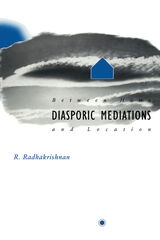 Diasporic Mediations: Between Home and Location
Rajagopalan Radhakrishnan
University of Minnesota Press, 1996 A series of meditations on the relationship between theory and practice. In the heated, often rancorous debates that are the “culture wars,” identity politics has been at the center of both popular and academic discussion. In this series of meditations on the relationship between theory and practice, R. Radhakrishnan probes the intersections of poststructuralism and postcoloniality that lie at the heart of contemporary controversies over identity and difference. Diasporic Mediations records Radhakrishnan's attempt to make theory accountable to the world, even while eschewing narrow methodologies or “isms.” Rather than embracing one totalizing point of view, these essays move in the spaces “between” to establish a productive dialogue between different disciplines and critical practices-to elaborate what the author calls “common ground.” Considering issues of location, language, tradition, gender, ethnicity, nationalism, colonialism, culture, and history, Radhakrishnan reclaims poststructuralism as a tool for both understanding postcolonial reality and working for social change. Diasporic location functions in this book as a perennially negotiated borderland-a real and symbolic space that adjudicates between solidarity and critique. Radhakrishnan's engagement with theory is always motivated by a desire both to build bridges with other communities of color and to engage in meaningful and constructive dialogue. He is particularly concerned with coalition, with overcoming compartmentalization and drawing fragmented movements together into if not a common cause, at least a common set of concerns. Radhakrishnan is adept at synthesizing current debates, reframing questions raised by them so that practical issues can be better understood. Momentous and wise, Diasporic Mediations provides thought-provoking considerations of contemporary issues surrounding identity, serving as a map of the postcolonial condition, or, in the author's words, of how to be “both past- and future-oriented within the history of the present.”Rajagopalan Radhakrishnan is professor in the Department of English at the University of Massachusetts, Amherst. In the heated, often rancorous debates that are the “culture wars,” identity politics has been at the center of both popular and academic discussion. In this series of meditations on the relationship between theory and practice, R. Radhakrishnan probes the intersections of poststructuralism and postcoloniality that lie at the heart of contemporary controversies over identity and difference.Diasporic Mediations records Radhakrishnan's attempt to make theory accountable to the world, even while eschewing narrow methodologies or “isms.” Rather than embracing one totalizing point of view, these essays move in the spaces “between” to establish a productive dialogue between different disciplines and critical practices-to elaborate what the author calls “common ground.” Considering issues of location, language, tradition, gender, ethnicity, nationalism, colonialism, culture, and history, Radhakrishnan reclaims poststructuralism as a tool for both understanding postcolonial reality and working for social change. Momentous and wise, Diasporic Mediations provides thought-provoking considerations of contemporary issues surrounding identity, serving as a map of the postcolonial condition, or, in the author's words, of how to be “both past- and future-oriented within the history of the present.”
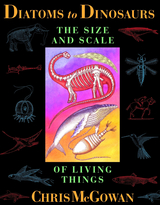 Diatoms to Dinosaurs: The Size And Scale Of Living Things
Chris McGowan
Island Press, 1994 In Diatoms to Dinosaurs, Chris McGowan takes the reader on a fascinating journey through the natural world, and examines life in all its various forms. He imparts the excitement of discovery and the joy of understanding as he demonstrates the central importance of size and scale to the survival of living organisms. McGowan investigates a wide range of size-related phenomena, from the gliding mechanism of diatoms to blood pressure problems of dinosaurs. Questions asked -- and answered -- include: - Will we ever see giant insects the size of pterodactyls?
- Why are ants so much stronger relative to body size than elephants?
- What do a clam, a condor, a tortoise, and a sturgeon have in common?
- How did the skeleton of a 28-ton Apatosaurus support its weight?
- How can blood get from the heart to the head of a giraffe without rupturing blood vessels?
The author explicates the scientific concepts -- both physical and biological -- needed to inform the relevant phenomena: area/volume relations, metabolism and other basic physiology, kinetic energy, inertial forces, the biology of senescence, boundary layers, and Reynolds numbers. Numerous illustrations scattered throughout the text make the biophysical principles easily comprehensible to readers, regardless of their scientific sophistication.
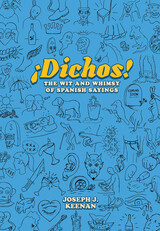 Dichos! The Wit and Whimsy of Spanish Sayings
By Joseph J. Keenan
University of Texas Press, 2019 One of the most challenging—and entertaining—aspects of learning another language is the idiom. Those quirky phrases, steeped in metaphor and colorful cultural references, enliven conversation and make your cross-cultural communication familiar, fun, and meaningful. ¡Dichos! (Sayings) brings us a vibrant compendium of both age-old and brand-new expressions from across Latin America, compiled by the language enthusiast whose Breaking Out of Beginner’s Spanish transformed thousands of readers’ interactions with the Spanish language. ¡Dichos! is divided into thematic sections covering topics ranging from games and relaxation to politics, macho men, and Mondays. Spanish speakers can also use the book to identify the spot-on/best slangy English equivalent for a Spanish-language idiom. Packed with gems like La barba me huele a tigre, y yo mismo me tengo miedo (My beard smells of tiger, and I’m even afraid of myself) and Para todo mal, mezcal; para todo bien, también (For everything bad, mezcal; for everything good, likewise), this book is the ultimate tool for taking your language skills to the next level as you navigate nuance with humor and linguistic agility.
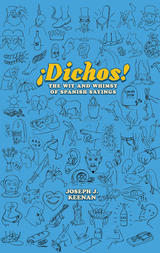 Dichos! The Wit and Whimsy of Spanish Sayings
By Joseph J. Keenan
University of Texas Press, 2019 One of the most challenging—and entertaining—aspects of learning another language is the idiom. Those quirky phrases, steeped in metaphor and colorful cultural references, enliven conversation and make your cross-cultural communication familiar, fun, and meaningful. ¡Dichos! (Sayings) brings us a vibrant compendium of both age-old and brand-new expressions from across Latin America, compiled by the language enthusiast whose Breaking Out of Beginner’s Spanish transformed thousands of readers’ interactions with the Spanish language. ¡Dichos! is divided into thematic sections covering topics ranging from games and relaxation to politics, macho men, and Mondays. Spanish speakers can also use the book to identify the spot-on/best slangy English equivalent for a Spanish-language idiom. Packed with gems like La barba me huele a tigre, y yo mismo me tengo miedo (My beard smells of tiger, and I’m even afraid of myself) and Para todo mal, mezcal; para todo bien, también (For everything bad, mezcal; for everything good, likewise), this book is the ultimate tool for taking your language skills to the next level as you navigate nuance with humor and linguistic agility.
 Dick Cole’s War: Doolittle Raider, Hump Pilot, Air Commando
Dennis R. Okerstrom
University of Missouri Press, 2015 With the 100th anniversary of his birth on September 7, 2015 Dick Cole has long stood in the powerful spotlight of fame that has followed him since his B-25 was launched from a Navy carrier and flown toward Japan just four months after the attack on Pearl Harbor. In recognition the tremendous boost Doolittle’s Raid gave American morale, members of The Tokyo Doolittle Raiders were awarded the Congressional Gold Medal in May 2014. Doolittle’s Raid was only the opening act of Cole’s flying career during the war. When that mission was complete and all of the 16 aircraft had crash-landed in China, many of the survivors were assigned to combat units in Europe. Cole remained in India after their rescue and was assigned to Ferrying Command, flying the Hump of the Himalayas for a year in the world’s worst weather, with inadequate aircraft, few aids to navigation, and inaccurate maps. More than 600 aircraft with their crews were lost during this monumental effort to keep China in the war, but Cole survived and rotated home in 1943. He was home just a few months when he was recruited for the First Air Commandos and he returned to India to participate in Project 9, the aerial invasion of Burma.
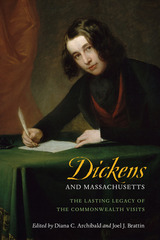 Dickens and Massachusetts: The Lasting Legacy of the Commonwealth Visits
Diana C. Archibald
University of Massachusetts Press, 2015 Charles Dickens traveled to North America twice, in 1842 and twenty-five years later in 1867–68, and on both trips Massachusetts was part of his itinerary. Although many aspects of his U.S. travels disappointed him, Massachusetts was the one state that met and even exceeded Dickens's expectations for "the republic of [his] imagination." From the mills of Lowell to the Perkins School for the Blind, it offered an alternate vision of America that influenced his future writings, while the deep and lasting friendships he formed with Bostonians gave him enduring ties to the commonwealth.
This volume provides insight from leading scholars who have begun to reassess the significance of Massachusetts in the author's life and work. The collection begins with a broad biographical and historical overview taken from the full-length narrative of the award-winning exhibition Dickens and Massachusetts: A Tale of Power and Transformation, which attracted thousands of visitors while on display in Lowell. Abundant images from the exhibition, many of them difficult to find elsewhere, enhance the story of Dickens's relationship with the vibrant cultural and intellectual life of Massachusetts. The second section includes essays that consider the importance of Dickens's many connections to the commonwealth.
In addition to the volume editors, contributors include Chelsea Bray, Iain Crawford, Andre DeCuir, Natalie McKnight, Lillian Nayder, and Kit Polga.
Dickens and Thackeray: Punishment and Forgiveness
John Robert Reed
Ohio University Press, 1996 Attitudes toward punishment and forgiveness in English society of the nineteenth century came, for the most part, out of Christianity. In actual experience the ideal was not often met, but in the literature of the time the model was important. For novelists attempting to tell exciting and dramatic stories, violent and criminal activities played an important role, and, according to convention, had to be corrected through poetic justice or human punishment. Both Dickens’ and Thackeray’s novels subscribed to the ideal, but dealt with the dilemma it presented in slightly different ways. At a time when a great deal of attention has been directed toward economic production and consumption as the bases for value, Reed’s well-documented study reviving moral belief as a legitimate concern for the analysis of nineteenth-century English texts is particularly illuminating.
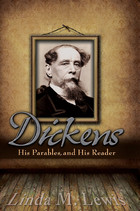 Dickens, His Parables, and His Reader
Linda M. Lewis
University of Missouri Press, 2011 Charles Dickens once commented that in each of his Christmas stories there is “an express text preached on . . . always taken from the lips of Christ.” This preaching, Linda M. Lewis contends, does not end with his Christmas stories but extends throughout the body of his work. In Dickens, His Parables, and His Reader, Lewis examines parable and allegory in nine of Dickens’s novels as an entry into understanding the complexities of the relationship between Dickens and his reader. Through the combination of rhetorical analysis of religious allegory and cohesive study of various New Testament parables upon which Dickens based the themes of his novels, Lewis provides new interpretations of the allegory in his novels while illuminating Dickens’s religious beliefs. Specifically, she alleges that Dickens saw himself as valued friend and moral teacher to lead his “dear reader” to religious truth. Dickens’s personal gospel was that behavior is far more important than strict allegiance to any set of beliefs, and it is upon this foundation that we see allegory activated in Dickens’s characters. Oliver Twist and The Old Curiosity Shop exemplify the Victorian “cult of childhood” and blend two allegorical texts: Jesus’s Good Samaritan parable and John Bunyan’s ThePilgrim’s Progress. In Dombey and Son,Dickens chooses Jesus’s parable of the Wise and Foolish Builders. In the autobiographical David Copperfield, Dickens engages his reader through an Old Testament myth and a New Testament parable: the expulsion from Eden and the Prodigal Son, respectively. Led by his belief in and desire to preach his social gospel and broad church Christianity, Dickens had no hesitation in manipulating biblical stories and sermons to suit his purposes. Bleak House is Dickens’s apocalyptic parable about the Day of Judgment, while Little Dorrit echoes the line “Forgive us our debts as we forgive our debtors” from the Lord’s Prayer, illustrating through his characters that only through grace can all debt be erased. The allegory of the martyred savior is considered in Hard Times and A Tale of Two Cities. Dickens’s final completed novel, Our Mutual Friend, blends the parable of the Good and Faithful Servant with several versions of the Heir Claimant parable. While some recent scholarship debunks the sincerity of Dickens’s religious belief, Lewis clearly demonstrates that Dickens’s novels challenge the reader to investigate and develop an understanding of New Testament doctrine. Dickens saw his relationship with his reader as a crucial part of his storytelling, and through his use and manipulation of allegory and parables, he hoped to influence the faith and morality of that reader.
 Dickens The Novelist
Leavis, F. R.
Rutgers University Press, 1979 In The Great Tradition, published in 1948, F. R. Leavis seemed to rate the work of Charles Dickens - with the exception of Hard Times - as lacking the seriousness and formal control of the true masters of English fiction. By 1970, when Dickens the Novelist was published on the first centenary of the writer's death, Leavis and his lifelong collaborator Q. D. (Queenie) Leavis, had changed their minds. 'Our purpose', they wrote, 'is to enforce as unanswerably as possible the conviction that Dickens was one of the greatest of creative writers ...' In seven typically robust and uncompromising chapters, the Leavises grapple with the evaluation of a writer who was then still open to dismissal as a mere entertainer, a caricaturist not worthy of discussion in the same breath as Henry James. Q. D. Leavis shows, for example, how deeply influential David Copperfield was on the work of Tolstoy, and explores the symbolic richness of the nightmare world of Bleak House. F. R. Leavis reprints his famous essay on Hard Times, with its moral critique of utilitarianism, and reveals the imaginative influence of Blake on Little Dorrit. Q. D. Leavis contributes a pathbreaking chapter on the importance of Dickens's illustrators to the effect of his work.
 Dickens' Working Notes for His Novels
Charles Dickens
University of Chicago Press, 1987 This volume collects for the first time all of Charles Dickens' extant plans and notes for his novels. Dickens wrote his novels in segments during the course of serial publication. Beginning with Dombey and Son, the sixth novel, he wrote out plans for each segment as he went along, sketching future developments, querying himself about options, noting motifs, establishing recurrent images, working out chronologies, experimenting with names, and, in general, reminding himself of what he had done and what he should do next. Some notes survive from before Dombey and those for a few novels after that are incomplete or abbreviated, but for the most part the plan from Dombey on are full and complete. Each sheet of these notes is reproduced here in actual-size photographic facsimile and is transcribed on the facing page in typographic facsimile, a format that preserves Dickens' holographic nuances and at the same time allows for the instant decipherment of his often difficult hand. Included are his plans for The Old Curiosity Shop, Martin Chuzzlewit, Dombey and Son, David Copperfield, Bleak House, Hard Times, Little Dorrit, Great Expectations, Our Mutual Friend, and Edwin Drood. The volume also contains thirty-three full-page illustrations and a full-color frontispiece.
Harry Stone, an internationally recognized Dickens scholar, provides the reader with a full account of Dickens' methods of planning and working. In a comprehensive introduction and extensive notes, he uses Dickens' written plans to illuminate the thought and technique of the novels. He examines creative concerns, such as Dickens' process of naming and visualization, and technical matters, such as his use of various pen nibs, ink colors, and papers.
By making fully available and comprehensible Dickens' own cache of in-process plans, possibilities, and alternatives for shaping his novels, Dickens' Working Notes offers unparalleled insights into the novelist's art and into the nature of the creative imagination.
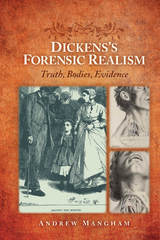 Dickens's Forensic Realism: Truth, Bodies, Evidence
Andrew Mangham
Ohio State University Press, 2017 Dickens’s Forensic Realism: Truth, Bodies, Evidence by Andrew Mangham is one of the first studies to bring the medical humanities to bear on the work of Dickens. Turning to the field of forensic medicine (or medical jurisprudence), Mangham uncovers legal and medical contexts for Dickens’s ideas that result in new readings of novels, short stories, and journalism by this major Victorian author. Dickens’s Forensic Realism argues that the rich and unstable nature of truth and representation in Dickens owes much to the ideas and strategies of a forensic Victorian age, obsessed with questioning the relationship between clues and truths, evidences and answers.
As Mangham shows, forensic medicine grew out of a perceived need to understand things with accuracy, leaning in part on the range of objectivities that inspired the inorganic sciences. At the same time, it had the burden of assisting the law in convicting the guilty and in exonerating the innocent. Practitioners of forensic medicine were uniquely mindful of unwanted variables such as human error and the vagaries of interpretation. In readings of Oliver Twist, Our Mutual Friend, Bleak House, The Pickwick Papers, Great Expectations, and Dickens’s early journalism, Mangham demonstrates that these questions about signification, perception, and reality are central to the stylistic complexities and playful tone often associated with Dickens. Moreover, the medico-legal context of Dickens’s fiction illuminates the richness and profundity, style and impact of Dicken’s narratives.
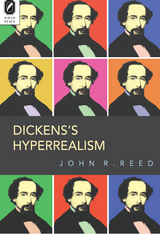 Dickens's Hyperrealism
John R. Reed
Ohio State University Press, 2009 In Dickens’s Hyperrealism, John R. Reed examines certain features of Dickens’s style to demonstrate that the Inimitable consciously resisted what came to be known as realism in the genre of the novel. Dickens used some techniques associated with realism, such as description and metonymy, to subvert the purposes usually associated with it. Reed argues that Dickens used such devices as personification and present-tense narration, which are anathema to the realist approach. He asserts that Dickens preferred a heightened reality, not realism. And, unlike the realism which seeks to mask authorial control of how readers read his novels, Dickens wanted to demonstrate, first openly, and later in his career more subtly, his command over his narratives. This book opens a new avenue for investigating Dickens’s mastery of his art and his awareness of its literary context. In addition, it reopens the whole issue of realism as a definition and examines the variety of genres that coexisted in the Victorian period.
 Dickens's Kent
Peter Clark
Haus Publishing, 2024 A geographical narrative of Charles Dickens’s life in Kent.
Few novelists have written so intimately about a city as Charles Dickens wrote about London, but he was intimately connected to Kent more than any other part of Britain. Perhaps Kent meant more to him than the capital. He had an idyllic childhood in Chatham and Kent features in his first works of fiction, Sketches by Boz and The Pickwick Papers, and in his favorite novel, David Copperfield. In his last ten years, he wrote two novels with strong Kentish themes, Great Expectations and The Mystery of Edwin Drood. He had his honeymoon outside Gravesend and often spent the summer months in Broadstairs. In 1856, he bought Gad’s Hill Place, near Rochester, and died there in 1870.
Dickens’s Kent begins with the description of a walk from London to Dickens's main residence, Gad’s Hill Place, before taking the reader to areas in Kent most closely associated with his life and work: the Medway Towns and their surroundings, Thanet and East Kent, and finally Staplehurst, the scene of the railway accident that nearly killed him.
 Dickens's London
Peter Clark
Haus Publishing, 2012 Marking the 150th anniversary of Charles Dickens’s death, Dickens’s London leads us in the footsteps of the author through this beloved city. Few novelists have written so intimately about a place as Dickens wrote about London, and, from a young age, his near-photographic memory rendered his experiences there both significant and in constant focus. Virginia Woolf maintained that “we remodel our psychological geography when we read Dickens,” as he produces “characters who exist not in detail, not accurately or exactly, but abundantly in a cluster of wild yet extraordinarily revealing remarks.” The most enduring “character” Dickens was drawn back to throughout his novels was London itself, in all its aspects, from the coaching inns of his early years to the taverns and watermen of the Thames. These were the constant cityscapes of his life and work.
In five walks through central London, Peter Clark explores “The First Suburbs”—Camden Town, Chelsea, Greenwich, Hampstead, Highgate and Limehouse—as they feature in Dickens’s writing and illuminates the settings of Dickens’s life and his greatest works of journalism and fiction. Describing these storied spaces of today’s central London in intimate detail, Clark invites us to experience the city as it was known to Dickens and his characters. These walks take us through the locations and buildings that he interacted with and wrote about, creating an imaginative reconstruction of the Dickensian world that has been lost to time.
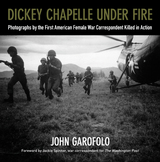 Dickey Chapelle Under Fire: Photographs by the First American Female War Correspondent Killed in Action
John Garofolo
Wisconsin Historical Society Press, 2015 "It was dawn before I fell asleep, and later in the morning I was only half-awake as I fed a fresh sheet of paper into the typewriter and began to copy the notes from the previous day out of my book. But I wasn't too weary to type the date line firmly as if I'd been writing date lines all my life:
from the front at iwo jima march 5--
Then I remembered and added two words.
under fire--
They looked great."
In 1965, Wisconsin native Georgette "Dickey" Chapelle became the first female American war correspondent to be killed in action. Now, "Dickey Chapelle Under Fire" shares her remarkable story and offers readers the chance to experience Dickey's wide-ranging photography, including several photographs taken during her final patrol in Vietnam.
Dickey Chapelle fought to be taken seriously as a war correspondent and broke down gender barriers for future generations of female journalists. She embedded herself with military units on front lines around the globe, including Iwo Jima and Okinawa, the Dominican Republic, and Vietnam. Dickey sometimes risked her life to tell the story--after smuggling aid to refugees fleeing Hungary, she spent almost two months in a Hungarian prison. For twenty-five years, Dickey's photographs graced the pages of "National Geographic," the "National Observer," "Life," and others. Her tenacity, courage, and compassion shine through in her work, highlighting the human impact of war while telling the bigger story beyond the battlefield.
In "Dickey Chapelle Under Fire," the American public can see the world through Dickey's lens for the first time in almost fifty years, with a foreword by Jackie Spinner, former war correspondent for "The Washington Post."
Dickinson and the Boundaries of Feminist Theory
Mary Loeffelholz
University of Illinois Press, 1991 Poetry written by the gifted recluse Emily Dickinson has remained fresh and enigmatic for longer than works by her male Transcendentalist counterparts. Here Mary Loeffelholz reads Dickinson's poetry and career in the double context of nineteenth-century literary tradition and twentieth-century feminist literary theory.
"Mary Loeffelholz has written a book that actually performs what it promises. . . . It illuminates our understanding of Emily Dickinson with readings both elegant and useful, and as importantly suggests modified direction for feminist-psychoanalytic theory."
-- Diana Hume George, author of Oedipus Anne: The Poetry of Anne Sexton
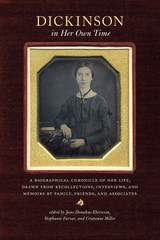 Dickinson in Her Own Time: A Biographical Chronicle of Her Life, Drawn from Recollections, Interviews, and Memoirs by Family, Friends, and Associates
Jane Donahue Eberwein, Stephanie Farrar, and Cristanne Miller
University of Iowa Press, 2015 Even before the first books of her poems were published in the 1890s, friends, neighbors, and even apparently strangers knew Emily Dickinson was a writer of remarkable verses. Featuring both well-known documents and material printed or collected here for the first time, this book offers a broad range of writings that convey impressions of Dickinson in her own time and for the first decades following the publication of her poems. It all begins with her school days and continues to the centennial of her birth in 1930.
In addition, promotional items, reviews, and correspondence relating to early publications are included, as well as some later documents that reveal the changing assessments of Dickinson’s poetry in response to evolving critical standards. These documents provide evidence that counters many popular conceptions of her life and reception, such as the belief that the writer best known for poems focused on loss, death, and immortality was herself a morose soul. In fact, those who knew her found her humorous, playful, and interested in other people.
Dickinson maintained literary and personal correspondence with major representatives of the national literary scene, developing a reputation as a remarkable writer even as she maintained extreme levels of privacy. Evidence compiled here also demonstrates that she herself made considerable provision for the survival of her poems and laid the groundwork for their eventual publication. Dickinson in Her Own Time reveals the poet as her contemporaries knew her, before her legend took hold.
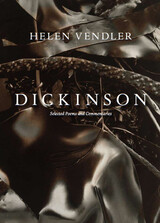 Dickinson: Selected Poems and Commentaries
Helen Vendler
Harvard University Press, 2010 “The best close reader of poems to be found on the literary pages.”
—Seamus Heaney
“[Vendler’s] succinct but astute readings of Emily Dickinson’s poetry are little kernels of insight into a wickedly keen poetic mind.”
—Hillary Kelly, New Republic
An interpretive introduction to Dickinson’s brilliant, enigmatic verse from the unrivaled doyenne of close reading.
Seamus Heaney, Denis Donoghue, William Pritchard, Marilyn Butler, Harold Bloom, and many others have praised Helen Vendler as one of the best readers of our time. Here, Vendler applies her critical powers to 150 selected poems of Emily Dickinson. As she did in The Art of Shakespeare’s Sonnets, she serves as an incomparable guide, illuminating both stylistic and imaginative features of the poems.
Vendler’s selection highlights the astounding variety of Dickinson’s work, “from her first-person poems to the poems of grand abstraction, from her ecstatic verses to her unparalleled depictions of emotional numbness, from her comic anecdotes to her painful poems of aftermath.” In accompanying commentaries Vendler also acquaints us with Dickinson the writer, “the inventive conceiver and linguistic shaper of her perennial themes.” All of Dickinson’s preoccupations—death, religion, love, the natural world, the nature of thought—are explored here in detail, but Vendler always takes care to emphasize the poet’s startling imagination and the ingenuity of her linguistic invention.
Whether exploring less-familiar poems or favorites we thought we knew, Vendler offers a unique window into Dickinson’s oeuvre—her incredible range, her unique path of poetic development, and her mastery of what Wordsworth called “the history and science of feeling.” Lucid and accessible, this will long remain an indispensable reference for students of Dickinson and readers of lyric poetry.
 Dickinson's Fascicles: A Spectrum of Possibilities
Paul Crumbley and Eleanor Elson Heginbotham
Ohio State University Press, 2014 Dickinson’s Fascicles: A Spectrum of Possibilities is the first collection of essays dedicated exclusively to re-examining Emily Dickinson’s fascicles, the extant forty hand-crafted manuscript “books” consisting of the roughly 814 poems crafted during the most productive period in Dickinson’s writing life (1858-1864). Why Dickinson carefully preserved the fascicles despite her meticulous destruction of many of her early manuscript drafts is the central question contributors to this volume seek to answer.
The collection opens with a central portion of Sharon Cameron’s 1992 book that was the first to abandon the until-then popular search for a single unifying narrative to explain the fascicles, inaugurating a new era of fascicle scholarship. Eight prominent Dickinson scholars contribute essays to this volume and respond vigorously and variously to Cameron's argument, proposing, for instance, that the fascicles represent Dickinson's engagement with the world around her, particularly with the Civil War, and that they demonstrate her continued experimentation with poetic form.
Dickinson’s Fascicles is edited by Paul Crumbley and Eleanor Elson Heginbotham. Other contributors include Paula Bernat Bennett, Martha Nell Smith, Domhnall Mitchell, Ellen Louise Hart, Melanie Hubbard, and Alexandra Socarides who assess what constitutes a vast final frontier in the Dickinson literary landscape. Susan Howe provides a coda.
 Dicta and Contradicta
Karl Kraus. Translated from the German by Jonathan McVity
University of Illinois Press, 2001 "A woman is more than just her exterior. The lingerie is also important."
"The mission of the press is to spread culture while destroying the attention span."
"Art serves to rinse out our eyes."
Uniquely combining humor with profundity and venom with compassion, Dicta and Contradicta is a bonanza of scandalous wit from Vienna's answer to Oscar Wilde.
From the decadent turn of the century to the Third Reich, the acerbic satirist Karl Kraus was one of the most famous–and feared–intellectuals in Europe. Through the polemical and satirical magazine Die Fackel (The torch), which he founded in 1899, Kraus launched wicked but unrelentingly witty attacks on literary and media corruption, sexual repression and militarism, and the social hypocrisy of fin-de-siècle Vienna.
Kraus's barbed aphorisms were an essential part of his running commentary on Viennese culture. These miniature gems, as sharp as diamonds, demonstrate Kraus's highly cultivated wit and his unerring eye for human weakness, flaccidity, and hypocrisy. Kraus shies away from nothing; the salient issues of the day are lined up side by side, as before a firing squad, with such perennial concerns as sexuality, religion, politics, art, war, and literature. By turns antagonistic, pacifistic, realistic, and maddeningly misogynistic, Kraus's aphorisms provide the sting that precedes healing.
For Dicta and Contradicta, originally published in 1909 (with the title Spruche und Widerspruche) and revised in 1923, Kraus selected nearly 1,000 of the scathing aphorisms that had appeared in Die Fackel. In this new translation, Jonathan McVity masterfully renders Kraus's multilayered meanings, preserving the clever wordplay of the German in readable colloquial English. He also provides an introductory essay on Kraus's life and milieu and annotations that clarify many of Kraus's literary and sociohistorical allusions.
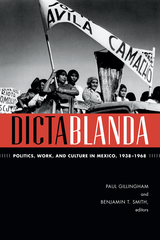 Dictablanda: Politics, Work, and Culture in Mexico, 1938–1968
Paul Gillingham and Benjamin T. Smith, eds.
Duke University Press, 2014 In 1910 Mexicans rebelled against an imperfect dictatorship; after 1940 they ended up with what some called the perfect dictatorship. A single party ruled Mexico for over seventy years, holding elections and talking about revolution while overseeing one of the world's most inequitable economies. The contributors to this groundbreaking collection revise earlier interpretations, arguing that state power was not based exclusively on hegemony, corporatism, or violence. Force was real, but it was also exercised by the ruled. It went hand-in-hand with consent, produced by resource regulation, political pragmatism, local autonomies and a popular veto. The result was a dictablanda: a soft authoritarian regime. This deliberately heterodox volume brings together social historians, anthropologists, sociologists, and political scientists to offer a radical new understanding of the emergence and persistence of the modern Mexican state. It also proposes bold, multidisciplinary approaches to critical problems in contemporary politics. With its blend of contested elections, authoritarianism, and resistance, Mexico foreshadowed the hybrid regimes that have spread across much of the globe. Dictablanda suggests how they may endure.
Contributors. Roberto Blancarte, Christopher R. Boyer, Guillermo de la Peña, María Teresa Fernández Aceves, Paul Gillingham, Rogelio Hernández Rodríguez, Alan Knight, Gladys McCormick, Tanalís Padilla, Wil G. Pansters, Andrew Paxman, Jaime Pensado, Pablo Piccato, Thomas Rath, Jeffrey W. Rubin, Benjamin T. Smith, Michael Snodgrass
 Dictates of Conscience: From Mormon High Priest to My New Life as a Woman
Laurie Lee Hall
Signature Books, 2024 Laurie Lee Hall’s growing-up years were defined by the conflict between her physical condition as a boy and her inherent identity as a girl. Unable to explain or resolve her gender dysphoria, she committed to living her adult life as a male. She joined the Church of Jesus Christ of Latter-day Saints, eventually becoming chief architect of its temples and an ecclesiastical leader. In her church and community, rigid adherence to gender roles is not only the norm, but the defining issue of a faith that doctrinally declares one’s gender as an “eternal identity.” Against this traditional backdrop, Hall finally received spiritual confirmation and personally accepted that she was transgender and always had been. In this remarkable memoir, Laurie Lee details how she risked everything to live true to her long-suppressed gender identity. Through the power of lived experience, Laurie Lee’s story affirms the reality of gender identity and the strength and joy of self-acceptance.
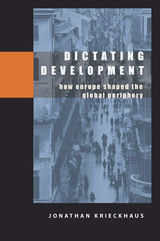 Dictating Development: How Europe Shaped the Global Periphery
Jonathan Krieckhaus
University of Pittsburgh Press, 2006 Dictating Development presents a powerful and original analysis of how colonialism has profoundly impacted the varying economic growth of developing nations. While previous studies have focused primarily on the domestic neoliberal policies of government and the political capacity of developing states, Dictating Development argues that economic growth is equally influenced (positively and negatively) by colonial powers. Jonathan Krieckhaus examines both historic colonial influences (on human capital and state structures) as well as contemporary ones (war, market access, and foreign aid). Based on an in-depth study of the regionally diverse nations of Mozambique, Korea, and Brazil, and a statistical analysis of growth in ninety-one countries from 1960 to 2000, Krieckhaus effectively demonstrates that most seemingly domestic political variables are in fact the byproduct of relationships with colonial powers. While not denying the role of neoliberalism as an important factor in development, Dictating Development reveals the roots of these policies: how colonialism influences the very nature of government and societal productivity.
The Dictator Dilemma: The United States and Paraguay in the Cold War
Kirk Tyvela
University of Pittsburgh Press, 2019 The Dictator Dilemmatells the story of US bilateral relations with the Alfredo Stroessner dictatorship (1954–1989). Tyvela focuses on how and why that diplomatic relationship changed during the Cold War from cooperation, based on mutual opposition to communism, to conflict, based on clashing expectations concerning democratic reforms and human rights. The policy debates by officials in Washington and in Asunción brought out a tension that has defined US diplomacy for more than a century: how can the United States partner with tyrants while credibly proclaiming to advance a democratic mission in the world? Tyvela argues that the Stroessner regime was symbolic of a broader foreign policy struggle to perpetuate, enforce, and ultimately redefine the importance of friendly dictators to US global and hemispheric interests.
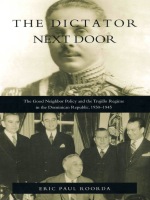 The Dictator Next Door: The Good Neighbor Policy and the Trujillo Regime in the Dominican Republic, 1930-1945
Eric Paul Roorda
Duke University Press, 1998 The question of how U.S. foreign policy should manage relations with autocratic governments, particularly in the Caribbean and Latin America, has always been difficult and complex. In The Dictator Next Door Eric Paul Roorda focuses on the relations between the U.S. and the Dominican Republic following Rafael Trujillo’s seizure of power in 1930. Examining the transition from the noninterventionist policies of the Hoover administration to Roosevelt’s Good Neighbor policy, Roorda blends diplomatic history with analyses of domestic politics in both countries not only to explore the political limits of American hegemony but to provide an in-depth view of a crucial period in U.S. foreign relations. Although Trujillo’s dictatorship was enabled by prior U.S. occupation of the Dominican Republic, the brutality of his regime and the reliance on violence and vanity to sustain his rule was an untenable offense to many in the U.S. diplomatic community, as well as to certain legislators, journalists, and bankers. Many U.S. military officers and congressmen, however—impressed by the civil order and extensive infrastructure the dictator established—comprised an increasingly powerful Dominican lobby. What emerges is a picture of Trujillo at the center of a crowded stage of international actors and a U.S. government that, despite events such as Trujillo’s 1937 massacre of 12,000 Haitians, was determined to foster alliances with any government that would oppose its enemies as the world moved toward war. Using previously untapped records, privately held papers, and unpublished photographs, Roorda demonstrates how caution, confusion, and conflicting goals marked U.S. relations with Trujillo and set the tone for the ambivalent Cold War relations that prevailed until Trujillo’s assassination in 1961. The Dictator Next Door will interest Latin Americanists, historians, political scientists, and specialists in international relations and diplomacy.
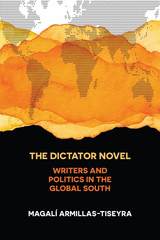 The Dictator Novel: Writers and Politics in the Global South
Magalí Armillas-Tiseyra
Northwestern University Press, 2019 Where there are dictators, there are novels about dictators. But “dictator novels” do not simply respond to the reality of dictatorship. As this genre has developed and cohered, it has acquired a self-generating force distinct from its historical referents. The dictator novel has become a space in which writers consider the difficulties of national consolidation, explore the role of external and global forces in sustaining dictatorship, and even interrogate the political functions of writing itself. Literary representations of the dictator, therefore, provide ground for a self-conscious and self-critical theorization of the relationship between writing and politics itself.
The Dictator Novel positions novels about dictators as a vital genre in the literatures of the Global South. Primarily identified with Latin America, the dictator novel also has underacknowledged importance in the postcolonial literatures of francophone and anglophone Africa. Although scholars have noted similarities, this book is the first extensive comparative analysis of these traditions; it includes discussions of authors including Gabriel García Márquez, Ngũgĩ wa Thiong’o, Alejo Carpentier, Augusto Roa Bastos, Domingo Faustino Sarmiento, José Mármol, Esteban Echeverría, Ousmane Sembène , Chinua Achebe, Aminata Sow Fall, Henri Lopès, Sony Labou Tansi, and Ahmadou Kourouma. This juxtaposition illuminates the internal dynamics of the dictator novel as a literary genre. In so doing, Armillas-Tiseyra puts forward a comparative model relevant to scholars working across the Global South.
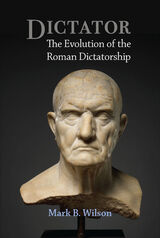 Dictator: The Evolution of the Roman Dictatorship
Mark B. Wilson
University of Michigan Press, 2021 Roman consuls were routinely trained by background and experience to handle the usual problems of a twelve-month turn in office. But what if a crisis arose that wasn’t best met by whoever happened to be in office that year? The Romans had a mechanism for that: the dictatorship, an alternative emergency executive post that granted total, unanswerable power to that man who was best suited to resolve the crisis and then stand down, restoring normality. This office was so useful and effective that it was invoked at least 85 times across three centuries against every kind of serious problem, from conspiracies and insurgencies to the repelling of invaders to propitiation of the gods. In Dictator: The Evolution of the Roman Dictatorship, Mark B. Wilson makes the first detailed and comprehensive examination of the role and evolution of the dictatorship as an integral element of the Roman Republic. Each stage of a dictatorship—need, call, choice, invocation, mandate, imperium, answerability, colleague, and renunciation—is explored, with examples and case studies illustrating the dictators’ rigorous adherence to a set of core principles, or, in rare cases of deviation, showing how exceptions tended to demonstrate the rule as vividly as instances. Wilson also charts the flexibility of the dictatorship as it adapted to the needs of the Republic, reshaping its role in relation to the consuls, the senate, and the people. The routine use of the dictatorship is only part of the story. The abandonment and disuse of the dictatorship for 120 years, its revival under Sulla, and its appropriation and transformation under Caesar are all examined in detail, with attention paid to what the dictatorship meant to the Romans of the late Republic, alternative means of crisis resolution in contrast with the dictatorship, and the groundwork laid in those last two centuries for that which was to come. Dictator provides a new basis for discussion and debate relating to the Roman dictatorship, Roman crisis management, and the systems and institutions of the Roman Republic.
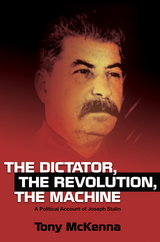 The Dictator, The Revolution, The Machine: A Political Account of Joseph Stalin
Tony Mckenna
Sussex Academic Press, 2022 It is commonplace wisdom that from the authoritarian roots of the Bolshevik revolution in 1917 grew the gulags and the police state of the Stalinist epoch. The Dictator, the Revolution, the Machine overturns that perspective by showing how the October Revolution was inspired by a profound mass movement comprised of urban workers and rural poor-a movement that went on to forge a state capable of channelling its political will in and through the most overwhelming form of grass-roots democracy history has ever known. In the context of civil war and foreign invasion, the fledgling democracy was eradicated and the Bolshevik party was denuded of its social basis-the working classes. While the party survived, its centrist elements came to the fore as the power of the bureaucracy asserted itself. From the ashes of human freedom there arose a zombified, sclerotic administration in which state functionaries took precedence over elected representatives. One man came to embody the inverted logic of this bureaucratic machine, its remorseless brutality, and its parasitic drive for power. Joseph Stalin was its highest expression, accruing to himself state powers as he made his murderous, heady rise to dictator. This book examines his historical profile, its roots in Georgian medievalism, and shows why Stalin was destined to play the role he did. In broader strokes, Tony McKenna raises the conflict between the revolutionary movement and the bureaucracy to the level of a literary tragedy played out on the stage of world history, showing how Stalinism's victory would pave the way for the 'Midnight of the Century.' [Subject: Politics, Biography, Communism & Revolution, History, Russian Studies]
 Dictators and the Higher Education Dilemma: State Power and the University in Modern Iran
Saeid Golkar
Rutgers University Press Dictators and the Higher Education Dilemma explores a powerful contradiction at the heart of modern authoritarian regimes: while universities are essential for producing skilled labor and projecting national progress, they also cultivate critical thinkers who can challenge state power. Drawing on Iran’s modern history, from the Pahlavi monarchy to the Islamic Republic, Saeid Golkar shows how dictators use universities not only to train technocrats and showcase development but also as tools for shaping ideology, suppressing dissent, and co-opting academics. In authoritarian systems, education becomes a double-edged sword, essential for growth, yet dangerous when it empowers independent thought. Golkar reveals how regimes manipulate admissions, censor curricula, and reward loyalty to create compliant intellectuals and loyal elites. Blending personal experience with rich historical and political analysis, this book exposes the tactics used to turn universities into instruments of social control. It speaks to a growing trend worldwide, offering vital insights into the clash between authoritarian power and academic freedom from Iran to China, Russia, and beyond.
The Dictator's Dilemma at the Ballot Box: Electoral Manipulation, Economic Maneuvering, and Political Order in Autocracies
Masaaki Higashijima
University of Michigan Press, 2022 Contrary to our stereotypical views, dictators often introduce elections in which they refrain from employing blatant electoral fraud. Why do electoral reforms happen in autocracies? Do these elections destabilize autocratic rule? The Dictator’s Dilemma at the Ballot Box argues that strong autocrats who can garner popular support become less dependent on coercive electioneering strategies. When autocrats fail to design elections properly, elections backfire in the form of coups, protests, and the opposition’s stunning election victories. The book’s theoretical implications are tested on a battery of cross-national analyses with newly collected data on autocratic elections and in-depth comparative case studies of the two Central Asian republics of Kazakhstan and Kyrgyzstan.
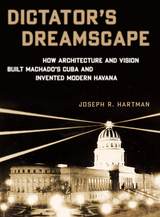 Dictator's Dreamscape: How Architecture and Vision Built Machado's Cuba and Invented Modern Havana
Joseph Hartman
University of Pittsburgh Press, 2019 Joseph Hartman focuses on the public works campaign of Cuban president, and later dictator, Gerardo Machado. Political histories often condemn Machado as a US-puppet dictator, overthrown in a labor revolt and popular revolution in 1933. Architectural histories tend to catalogue his regime’s public works as derivatives of US and European models. Dictator’s Dreamscape reassesses the regime’s public works program as a highly nuanced visual project embedded in centuries-old representations of Cuba alongside wider debates on the nature of art and architecture in general, especially in regards to globalization and the spread of US-style consumerism. The cultural production overseen by Machado gives a fresh and greatly broadened perspective on his regime’s accomplishments, failures, and crimes. The book addresses the regime’s architectural program as a visual and architectonic response to debates over Cuban national identity, US imperialism, and Machado’s own cult of personality.
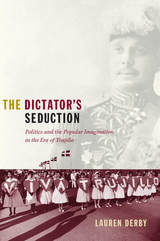 The Dictator's Seduction: Politics and the Popular Imagination in the Era of Trujillo
Lauren Derby
Duke University Press, 2009 The dictatorship of Rafael Trujillo, who ruled the Dominican Republic from 1930 until his assassination in 1961, was one of the longest and bloodiest in Latin American history. The Dictator’s Seduction is a cultural history of the Trujillo regime as it was experienced in the capital city of Santo Domingo. Focusing on everyday forms of state domination, Lauren Derby describes how the regime infiltrated civil society by fashioning a “vernacular politics” based on popular idioms of masculinity and fantasies of race and class mobility. Derby argues that the most pernicious aspect of the dictatorship was how it appropriated quotidian practices such as gossip and gift exchange, leaving almost no place for Dominicans to hide or resist. Drawing on previously untapped documents in the Trujillo National Archives and interviews with Dominicans who recall life under the dictator, Derby emphasizes the role that public ritual played in Trujillo’s exercise of power. His regime included the people in affairs of state on a massive scale as never before. Derby pays particular attention to how events and projects were received by the public as she analyzes parades and rallies, the rebuilding of Santo Domingo following a major hurricane, and the staging of a year-long celebration marking the twenty-fifth year of Trujillo’s regime. She looks at representations of Trujillo, exploring how claims that he embodied the popular barrio antihero the tíguere (tiger) stoked a fantasy of upward mobility and how a rumor that he had a personal guardian angel suggested he was uniquely protected from his enemies. The Dictator’s Seduction sheds new light on the cultural contrivances of autocratic power.
 Dictatorship and Demand: The Politics of Consumerism in East Germany
Mark Landsman
Harvard University Press, 2005 An investigation into the politics of consumerism in East Germany during the years between the Berlin Blockade of 1948-49 and the building of the Berlin Wall in 1961, Dictatorship and Demand shows how the issue of consumption constituted a crucial battleground in the larger Cold War struggle.
Based on research in recently opened East German state and party archives, this book depicts a regime caught between competing pressures. While East Germany's leaders followed a Soviet model, which fetishized productivity in heavy industry and prioritized the production of capital goods over consumer goods, they nevertheless had to contend with the growing allure of consumer abundance in West Germany. The usual difficulties associated with satisfying consumer demand in a socialist economy acquired a uniquely heightened political urgency, as millions of East Germans fled across the open border.
A new vision of the East-West conflict emerges, one fought as much with washing machines, televisions, and high fashion as with political propaganda, espionage, and nuclear weapons. Dictatorship and Demand deepens our understanding of the Cold War.
 Dictatorship and Politics: Intrigue, Betrayal, and Survival in Venezuela, 1908-1935
Brian S. McBeth
University of Notre Dame Press, 2008
Dictatorship and Politics presents the first major study of General Juan Vicente Gómez’s regime in Venezuela from 1908 to 1935 and the efforts of Gómez’s enemies to overthrow him during his twenty-seven years in power. In this reappraisal of the Gómez regime, Brian S. McBeth demonstrates that Gómez’s success in withstanding opponents’ attacks was not only the result of his political acumen and ruthless methods of oppression. The political disagreements, personal rivalries, financial difficulties, occasional harassment by foreign powers, and at times plain bad luck of his opponents, usually in exile, were important contributing factors in the failure of their plots to overthrow him. In examining the opposition to the Gómez dictatorship, McBeth also intentionally removes the politics of oil from the center stage of the regime’s foreign relations and instead focuses on the tolerance and intolerance by foreign governments of the exiles’ activities.
This monumental work of scholarship encompasses political correspondence, personal memoirs, newspapers, British and U.S. sources, and various public and private archives in Venezuela. Historians, as well as political scientists working on themes related to dictatorships and opposition, will find the book of interest.
“Dictatorship and Politics is a fascinating revisionist study of the long regime of legendary Venezuelan dictator Juan Vicente Gomez. Brian McBeth provides a fresh analysis of a twenty-seven year autocracy that challenges the conventional depiction of a largely stable and uneventful era. To the contrary, he demonstrates that it was a period that bubbled over with revolutionary turmoil and family conflict. This exhaustively researched monograph is a valuable contribution to the fields of Latin American authoritarianism, Venezuelan political history, and oil politics in the era of gunboat diplomacy. Readers will quickly be drawn in to this shadowy world of power, revolt, and intrigue.” —Winfield Burggraaff, University of Missouri
“This book makes an original and important contribution to the study of Venezuela’s politics and international relations during the period when Juan Vicente Gómez ruled the nation (1908–1935). The massive research underlying this work is without parallel in the existing scholarly literature for this period of Venezuelan history. It will be the standard work on its subject for years to come.” —Douglas Yarrington, Colorado State University
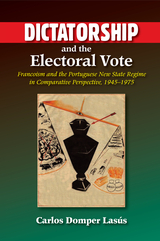 Dictatorship and the Electoral Vote: Francoism and the Portuguese New State Regime in Comparative Perspective, 1945–1975
Carlos Domper Lasús
Sussex Academic Press, 2022 Dictatorship and the Electoral Vote; analyses the role of elections in two dictatorships that were born in the Era of Fascism but survived up to the 1970s: the Portuguese New State and Francoism. The multiple political interactions involved in elections worldwide have been subject to social science scrutiny, but rarely encompass historical context. The analysis of the electoral vote held by Iberian dictatorships is uniquely placed to link the two. The issues to hand include: drawing of electoral rolls; evolution of the number of people allowed to vote; candidate selection processes; propaganda methods; impact on the institutional structure of the regime; the socio-political biographies of the candidates; the electoral turnout and final tally; relationship between the central and peripheral authorities of the state; and the viewpoint of regime authorities on the holding of elections. Comparative analysis of all these issues enables a better understanding of the political nature of these dictatorships, as well as a comprehensive explanation of the historical roots and evolution of the elections these dictatorship held since 1945. Based on primary archival documents, some of them never previously accessed, the book offers a detailed explanation of how these dictatorships used elections to consolidate their political authority, and provides a historical approach that allows placing both countries in the framework of European electoral history and in the history of the political evolution of Iberian dictatorships between the Axis defeat and their breakdown in the mid-seventies.
Dictatorship in the Modern World
Guy Ford
University of Minnesota Press, 1935 Dictatorship in the Modern World was first published in 1935. Minnesota Archive Editions uses digital technology to make long-unavailable books once again accessible, and are published unaltered from the original University of Minnesota Press editions.“The wisdom of the ages turned on the problem of the hour,” says Charles A. Beard of this thoughtful and thought-provoking volume. Fourteen scholars, American and European, under the guidance of the president of a great university (himself a distinguished historian) have cooperated to provide a cool and dispassionate survey such as only the historical approach can give. Here is a world view, a balanced presentation, covering more aspects of the problem of dictatorship than have been brought together in any other single volume.
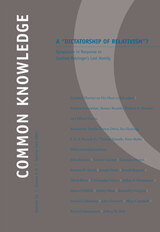 A Dictatorship of Relativism ?: Symposium in Response to Cardinal Ratzinger’s Last Homily, Volume 13
Jeffrey M. Perl, ed.
Duke University Press In the last homily he gave before becoming Pope Benedict XVI, Cardinal Joseph Ratzinger described modern life as ruled by a “dictatorship of relativism which does not recognize anything as definitive and whose ultimate goal consists solely” of satisfying “the desires of one’s own ego.” An eminent scholar familiar with the centuries-old debates over relativism, Ratzinger chose to oversimplify or even caricature a philosophical approach of great sophistication and antiquity. His homily depicts the relativist as someone blown about “by every wind of doctrine,” whereas the relativist sticks firmly to one argument—that human knowledge is not absolute. Gathering prominent intellectuals from disciplines most relevant to the controversy—ethics, theology, political theory, anthropology, psychology, cultural studies, epistemology, philosophy of science, and classics—this special double issue of Common Knowledge contests Ratzinger’s denunciation of relativism. One essay relates the arguments of Ratzinger to those of two other German scholars—the conservative political theorist Ernst Wolfgang Böckenförde and the liberal philosopher and sociologist Jürgen Habermas—since all three men assume that social order depends on the existence of doctrinal authority (divine or otherwise). The contributors here argue for an intellectual and social life free of the desire for an “infantilizing” authority. One proposes that the Christian god is a relativist who prefers limitation and ambiguity; another, initially in agreement with Ratzinger about the danger relativism poses to faith and morals, then argues that this danger is what makes relativism valuable. The issue closes with the first English translation of an extract from a book on Catholic-Jewish relations by Cardinal Carlo Maria Martini, one of the Catholic Church’s most progressive figures. Contributors. David Bloor, Daniel Boyarin, Mary Baine Campbell, Lorraine Daston, Arnold I. Davidson, John Forrester, Kenneth J. Gergen, Simon Goldhill, Jeffrey F. Hamburger, Julia Kristeva, Carlo Maria Cardinal Martini, Christopher Norris, Joseph Cardinal Ratzinger, Richard Shusterman, Barbara Herrnstein Smith, Jeffrey Stout, Gianni Vattimo
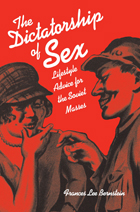 The Dictatorship of Sex: Lifestyle Advice for the Soviet Masses
Frances Lee Bernstein
Northern Illinois University Press, 2011
The Dictatorship of Sex explores the attempts to define and control sexual behavior in the years following the Russian Revolution. It is the first book to examine Soviet “sexual enlightenment,” a program of popular health and lifestyle advice intended to establish a model of sexual conduct for the men and women who would build socialism.
Leftist social theorists and political activists had long envisioned an egalitarian utopia, and after 1917, the medical profession took the leading role in solving the sex question (while at the same time carving out a niche for itself among postrevolutionary social institutions). Frances Bernstein reveals the tension between the doctors’ advocacy for relatively liberal social policy and the generally proscriptive nature of their advice, as well as their lack of interest in questions of personal pleasure, fulfillment, and sexual expression. While supporting the goals of the Soviet state, the enlighteners appealed to ‘irrefutable’ biological truths that ultimately supported a very traditional gender regime.
The Dictatorship of Sex offers a unique lens through which to contemplate a central conundrum of Russian history: the relationship between the supposedly ‘liberated’ 1920s and ‘repressive’ 1930s. Although most of the proponents of sexual enlightenment in the 1920s would suffer greatly during Stalin’s purges, their writings facilitated the Stalinist approach to sexuality and the family. Bernstein’s book will interest historians of Russia, gender, sexuality, and medicine, as well as anyone curious about social and ideological experiments in a revolutionary culture.
The Dictatorship Syndrome
Alaa Al Aswany
Haus Publishing, 2019 The study of dictatorship in the West has acquired an almost exotic dimension. But authoritarian regimes remain a painful reality for billions of people worldwide, their freedoms violated and their rights abused. They are subject to arbitrary arrest, corruption and injustice.
What is the nature of dictatorship? How does it take hold? In what conditions and circumstances is it permitted to thrive? And how do dictators retain power, even when reviled and mocked by those they govern? In this deeply considered and at times provocative short work, Alaa Al Aswany shows us that – as with any disease – to understand the syndrome of dictatorship we must first consider the circumstances of its emergence, along with the symptoms and complications it causes in both the people and the dictator.
Dictionary for Business & Finance
John V. Terry
University of Arkansas Press, 1995 This revised and expanded edition of the Dictionary for Business & Finance defines terms from every field of business, as well as economics, statistics, and management and many words and expressions from other fields which have been adopted for special use by the business community. In this new edition, John V. Terry has added more than two hundred terms that help define the rapidly changing global economy of the late 1990s—terms like “European Currency Unit,” “Datsu-sara,” and “Keiretsu.” Of particular value to the student and business person alike are appendices for ratios, equations, formulas, abbreviations, and general financial and investment information. In a clear, easy-to-follow style, Dictionary for Business & Finance goes directly to the business usage of a word or term, making it unnecessary to wade through irrelevant definitions.
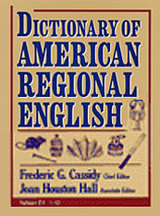 Dictionary of American Regional English
Frederic G. Cassidy
Harvard University Press, 1985 Dip into the Dictionary of American Regional English and enter the rich, endlessly entertaining, ever-changing world of American speech. Learn what a Minnesota grandma is making when she fixes lefse, what a counterman in a Buffalo deli means by kimmelweck or a Hawaiian baker puts into a malassada. Find out what kids on the streets of New York are doing when they play Johnny-on-the-pony or off-the-point, what Southerners do when they use their tom walkers, what the folks in Oklahoma and Texas celebrate on Juneteenth and those in some parts of Wisconsin at a kermis.
Like its enormously popular predecessors, this volume captures the language of our lives, from east to west, north to south, urban to rural, childhood to old age. Here are the terms that distinguish us, one from the other, and knit us together in one vast, colorful tapestry of imperfect, perfectly enchanting speech. More than five hundred maps show where you might be if you looked in a garden and saw moccasin flowers, indian cigars, or lady peas; if you encountered a bullfrog and cried, "jugarum!"; or came upon a hover fly and exclaimed, "newsbee!" And here, at long last, is an explanation of what the madstone and the money cat portend.
Built upon an unprecedented survey of spoken English across America and bolstered by extensive historical research, the Dictionary of American Regional English preserves a language that lives and dies as we breathe. It will amuse and inform, delight and instruct, and keep alive the speech that we have made our own, and that has made us who we are.
 Dictionary of American Regional English
Joan Houston Hall
Harvard University Press, 1985 With this fifth volume of the Dictionary of American Regional English, readers now have the full panoply of American regional vocabulary, from Adam's housecat to Zydeco. Like the first four volumes, the fifth is filled with words that reflect our origins, migrations, ethnicities, and neighborhoods.
Contradicting the popular notion that American English has become homogenized, DARE demonstrates that our language still has distinct and delightful local character. If a person lives in a remote place, would you say he's from the boondocks? Or from the puckerbrush, the tules, or the willywags? Where are you likely to live if you eat Brunswick stew rather than jambalaya, stack cake, smearcase, or kringle? What's your likely background if your favorite card game is hasenpfeffer? bid whist? sheepshead? Whether we are talking about foods, games, clothing, family members, animals, or almost any other aspect of life, our vocabulary reveals much about who we are.
Each entry in DARE has been carefully researched to provide as complete a history of its life in America as possible. Illustrative citations extend from the seventeenth century through the twenty-first. More than 600 maps show where words were collected by the DARE fieldworkers. And quotations highlight the wit and wisdom of American speakers and writers. Recognized as the authoritative record of American English, DARE serves scholars and professionals of all stripes. It also holds treasures for readers who simply love our language.
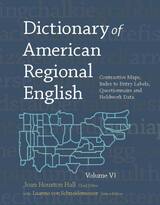 Dictionary of American Regional English
Joan Houston Hall
Harvard University Press, 1985 This companion volume to the Dictionary of American Regional English vastly enhances readers' use of the five volumes of DARE text. Those who want to investigate the regional synonyms for a rustic, or a submarine sandwich, or that strip of grass between the sidewalk and the street can search through the five volumes and compare the distributional maps. Or, with this volume, they can open to a page with all those maps displayed side by side. Not only is it an extraordinary teaching tool, it is also a browser's delight.
The user who wants to know what words characterize a given state or region is also in luck. The Index to the five volumes not only answers that question but also satisfies the reader's curiosity about words that have come into English from other languages, and words that vary with the speakers' age, sex, race, education, and community type.
And those who simply love to explore the variety and ingenuity of American expression will be seduced by the lists of answers to the DARE fieldwork questions. Dust balls under the bed? Americans have at least 176 names for them. Names for a heavy rainstorm? There are more than 200, including the fanciful frog-strangler, goose-drownder, lightwood-knot floater, and trash-mover. More than 400 questions and all of their answers are included in this treasure trove of American linguistic creativity.
 Dictionary of American Regional English
Joan Houston Hall, Chief Editor
Harvard University Press, 1985 Every page in this new volume of the Dictionary of American Regional English makes it wonderfully clear that regional expressions still flourish throughout the United States.
Depending on where you live, your conversation may include such beguiling terms as paddybass (North Carolina), pinkwink (Cape Cod), or scallyhoot (West); if you're invited to a potluck dinner, in Indiana you're likely to call it a pitch-in, while in northern Illinois it's a scramble; if your youngsters play hopscotch, they may call it potsy in Manhattan, but sky blue in Chicago.
Like the popular first three volumes of DARE, the fourth is a treasure-trove of linguistic gems, a book that invites exclamation, delight, and wonder. More than six hundred maps pinpoint where you might live if your favorite card games are sheepshead and skat; if you eat pan dulce rather than pain perdu; if you drive down a red dog road or make a purchase at a racket store; or if you look out your window and see a parka squirrel or a quill pig.
The language of our everyday lives is captured in DARE, along with expressions our grandparents used but our children will never know. Based on thousands of interviews across the country, the Dictionary of American Regional English presents our language in its infinite variety. Word lovers will delight in the wit and wisdom found in the quotations that illustrate each entry, and will prize the richness and diversity of our spoken and written culture.
 Dictionary of American Regional English
Frederic G. Cassidy
Harvard University Press, 1985 Volume I of the Dictionary of American Regional English (DARE), published to wide acclaim in 1985, captured the wondrous variety and creativeness of American folk words and expressions and tickled the imagination of lovers of language around the world. Decades in preparation, the DARE corpus reflects the liveliness of English as it is spoken on America’s main streets and country roads—the regional metaphors and similes passed along within homes and communities.
Like its popular predecessor, Volume II is a treasury of vernacular Americanisms. In Virginia a goldfinch is a dandelion bird, in Missouri an insufficient rain shower a drizzle-fizzle. Gate was Louis Armstrong’s favorite sender (a verbal spur to a sidekick in a band), a usage that probably originated from the fact that gates swing. Readers will bedazzled by the wealth of entries—more than 11,000—contained in this second volume alone. The two and a half pages on “dirt” reveal that a small marble is a dirt pea in the South. To eat dried apples, a curious rural euphemism for becoming pregnant, appears in the five pages on “eat.” Seven pages on “horn” and related words take readers on a tour of the animal and nether worlds: horned lark, horned frog, horned pout (look that one up), and that horned fellow, the devil.
Initiated under the leadership of Frederic G. Cassidy, DARE represents an unprecedented attempt to document the living language of the entire country. The project’s primary tool was a carefully worded survey of 1,847 questions touching on most aspects of everyday life and human experience. Over a five-year period fieldworkers interviewed natives of 1,002 communities, a patchwork of the United States in all its diversity.
The result is a database of more than two and a half million items—a monument to the richness of American folk speech. Additionally, some 7,000 publications, including novels, diaries, and small-town newspapers, have yielded a bountiful harvest of local idioms. Computer-generated maps accompanying many of the entries illustrate the regional distribution of words and phrases.
The entries contained in Volume II—from the poetic and humorous to the witty and downright bawdy—will delight and inform readers.
 Dictionary of American Regional English
Frederic G. Cassidy
Harvard University Press, 1985 How do Americans really talk—what are their hometown, everyday expressions in the many regions and sections of this huge country? The Dictionary of American Regional English (DARE), twenty years in preparation, answers these questions. It gives visible proof of the diversity—and the vitality—of American folk language, past and present.
DARE includes thousands of words and phrases not found in conventional dictionaries, and out-of-the-way meanings for common terms. Here are local names for familiar objects, from old cars to frying pans to dust-balls under the bed (176 names for these); for plants, animals, and critters real and imaginary; for rainstorms and heat waves; for foods, clothing, children’s games and adults’ pastimes; for illnesses and traditional remedies. Here are terms—salty, sarcastic, humorous—by which people describe each other, their physical appearance, characters, emotions, states of mind. Here are metaphors and similes galore.
In Wisconsin a man whose motives are suspect “has beans up his nose.” In Georgia a conceited person is “biggity”; someone important or self-important in the Northwest is “bull of the woods.” A close friend may be “bobbasheely” (Mississippi) or an “ace boon coon” (New York City). West of the Appalachians the old saw “I wouldn’t know him from Adam” becomes “I wouldn’t know him from Adam’s off-ox” (or, in the South, “from Adam’s housecat”). These and some twelve thousand other expressions are identified and explained in the first volume of DARE.
While DARE is the work of many dedicated people, it owes its existence to Frederic G. Cassidy, who in 1963 agreed to organize the project, raise funds for it, and serve as Editor-in-Chief. Cassidy trained teams of fieldworkers and equipped them with a carefully worded questionnaire: 1,847 questions grouped in 41 broad categories ranging over most aspects of everyday life and common human experience. From 1965 to 1970 the fieldworkers conducted week-long interviews with natives of 1,002 representative communities in all fifty states. The two and a half million items gleaned from the fieldwork, coded and computer-processed, are DARE’s primary data base, a rich harvest of regional Americanisms current in the seventh decade of this century. Earlier collections have been drawn upon as well, notably the 40,000 expressions recorded by the American Dialect Society since 1889; and some 5,000 publications, including regional novels and diaries and small-town newspapers, have been combed for local idioms.
A unique feature of the dictionary is the computer-generated maps that accompany many of the entries to show the geographical distribution of the term. The base map is schematic, distorting the areas of the states to reflect their population density.
Volume I includes extensive introductory material on DARE itself and on American folk speech. Its entries, from Aaron’s rod to czarnina, cover nearly a quarter of the total DARE corpus.
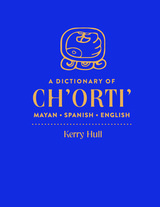 A Dictionary of Ch'orti' Mayan-Spanish-English
Kerry Hull
University of Utah Press, 2016 Of extant languages, Ch’orti’ Mayan is the closest to ancient the Maya hieroglyphic script, but it is a language that is decreasing in usage. In southern Guatemala where it is spoken, many children no longer learn it, as Spanish dominates most experiences. From linguistic and anthropological data gathered over many years, Kerry Hull has created the largest and most complete Ch’orti’ Mayan dictionary to date. With nearly 9,000 entries, this trilingual dictionary of Ch’orti’, Spanish, and English preserves ancient words and concepts that were vital to this culture in the past.
Each entry contains examples of Ch’orti’ sentences along with their translations. Each term is defined grammatically and linked to a grammatical index. Variations due to age and region are noted. Additionally, extensive cultural and linguistic annotations accompany many entries, providing detailed looks into Ch’orti’ daily life, mythology, flora and fauna, healing, ritual, and food. Hull worked closely with native speakers, including traditional ritual specialists, and presents that work here in a way that is easily accessible to scholars and laypersons alike.
Dictionary of Correspondences: The Key to Biblical Interpretation
GEORGE NICHOLSON
Swedenborg Foundation Publishers, 2010 Interwoven with Emanuel Swedenborg’s commentary on the Bible is his system of correspondences, which describes the relationship between the spiritual and the physical worlds in symbolic terms. For Swedenborg, specific people, places, animals, and objects represented spiritual principles or ideas—for example, light corresponds to truth, and darkness to ignorance. Using this system, he interpreted the Bible in a radically new way, using it to illuminate the path to spiritual growth. First compiled in the decades following Swedenborg’s death, the Dictionary of Correspondences has been continually revised and reprinted for over two hundred years. It provides an essential reference to Swedenborg’s complex thought that can be used by students, scholars, and the curious alike.
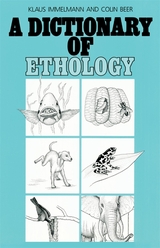 A Dictionary of Ethology
Klaus Immelmann and Colin Beer
Harvard University Press, 1989 What do such words as “information,” “displacement,” and “courtship” mean to the growing ranks of ethologists who study animal behavior? Like all sciences, ethology has accumulated its own set of concepts and terms, taken from everyday language, borrowed from neighboring disciplines, or coined especially to describe novel ideas and phenomena. Klaus Immelmann and Colin Beer have responded to the acute need for an authoritative dictionary of ethology with this valuable guide to the world of animal behavior.
The authors present a balance of historical, enduring, and current terminology, providing clear and concise definitions of the terms central to ethological writing. They give special treatment to terms from related disciplines, particularly evolutionary biology, physiology, ecology, and sociobiology, and to controversial concepts such as “instinct,” “motivation,” and “imprinting.” For words like these, the authors take pains to explain the nature of the problem, to distinguish differences of meaning, and to chart the range of application. A preponderance of terms relate to the behavior of higher vertebrates, especially mammals and birds, since these animals supply a high proportion of ethology’s basic ideas and technical concepts.
Representing the culmination of two decades of assiduous scholarship, this book will be immensely useful to neophyte and professional alike.
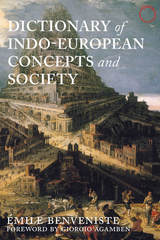 Dictionary of Indo-European Concepts and Society
Émile Benveniste
HAU, 2016 Since its publication in 1969, Émile Benveniste’s Vocabulaire—here in a new translation as the Dictionary of Indo-European Concepts and Society—has been the classic reference for tracing the institutional and conceptual genealogy of the sociocultural worlds of gifts, contracts, sacrifice, hospitality, authority, freedom, ancient economy, and kinship. A comprehensive and comparative history of words with analyses of their underlying neglected genealogies and structures of signification—and this via a masterful journey through Germanic, Romance, Indo-Iranian, Latin, and Greek languages—Benveniste’s dictionary is a must-read for anthropologists, linguists, literary theorists, classicists, and philosophers alike.
This book has famously inspired a wealth of thinkers, including Roland Barthes, Claude Lévi-Strauss, Pierre Bourdieu, Jacques Derrida, Umberto Eco, Giorgio Agamben, François Jullien, and many others. In this new volume, Benveniste’s masterpiece on the study of language and society finds new life for a new generation of scholars. As political fictions continue to separate and reify differences between European, Middle Eastern, and South Asian societies, Benveniste reminds us just how historically deep their interconnections are and that understanding the way our institutions are evoked through the words that describe them is more necessary than ever.
Dictionary of Indonesian Islam: Mis Sea#94
Howard M. Federspiel
Ohio University Press, 1994 Drawing from an extensive list of writings about Indonesian Islam that have appeared over the past fifteen years, Federspiel defines approximately 1,800 terms, phrases, historical figures, religious books, and place names that relate to Islam and gives their Arabic sources.
This dictionary will be indispensable to English–speaking students and researchers working in Indonesian or Southeast Asian studies. It will also be useful for scholars working in Bahasa Indonesian, reading texts written about Islam by Indonesian Muslims, as well as for Southeast Asia area scholars generally who are using sources in Western languages.
 A Dictionary of Informal Brazilian Portuguese with English Index
Bobby John Chamberlain and Ronald M. Harmon, Editors
Georgetown University Press As in the ever-changing English language, Brazilian Portuguese is colorful and ever-changing in its gíria or slang (from the simply conversational to the vulgar)—and advanced students are often only exposed to the formal or classic literary forms of the language. A Dictionary of Informal Brazilian Portuguese, originally published in 1983, remains a profitable reference tool to help bridge the gap between the classroom and the streets and contemporary literature of Brazil. Beyond students and researchers, this dictionary, containing over 7500 Brazilian expressions, will be invaluable to travelers, businesspeople, translators and others who are seeking insight into the rich nuances to be found in informal Brazilian Portuguese. Enhanced often with Portuguese sentences to place the words or phrases in context, this dictionary will reward the reader with the colorful inventiveness of the language—and this is not bafo-de-boca (hot air!).
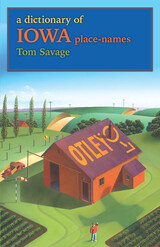 A Dictionary of Iowa Place-Names
Tom Savage
University of Iowa Press, 2007 Lourdes and Churchtown, Woden and Clio, Emerson and Sigourney, Tripoli and Waterloo, Prairie City and Prairieburg, Tama and Swedesburg, What Cheer and Coin. Iowa’s place-names reflect the religions, myths, cultures, families, heroes, whimsies, and misspellings of the Hawkeye State’s inhabitants. Tom Savage spent four years corresponding with librarians, city and county officials, and local historians, reading newspaper archives, and exploring local websites in an effort to find out why these communities received their particular names, when they were established, and when they were incorporated.
Savage includes information on the place-names of all 1,188 incorporated and unincorporated communities in Iowa that meet at least two of the following qualifications: twenty-five or more residents; a retail business; an annual celebration or festival; a school; church, or cemetery; a building on the National Register of Historic Places; a zip-coded post office; or an association with a public recreation site. If a town’s name has changed over the years, he provides information about each name; if a name’s provenance is unclear, he provides possible explanations. He also includes information about the state’s name and about each of its ninety-nine counties as well as a list of ghost towns. The entries range from the counties of Adair to Wright and from the towns of Abingdon to Zwingle; from Iowa’s oldest town, Dubuque, starting as a mining camp in the 1780s and incorporated in 1841, to its newest, Maharishi Vedic City, incorporated in 2001.
The imaginations and experiences of its citizens played a role in the naming of Iowa’s communities, as did the hopes of the huge influx of immigrants who settled the state in the 1800s. Tom Savage’s dictionary of place-names provides an appealing genealogical and historical background to today’s map of Iowa.
“It is one of the beauties of Iowa that travel across the state brings a person into contact with so many wonderful names, some of which a traveler may understand immediately, but others may require a bit of investigation. Like the poet Stephen Vincent Benét, we have fallen in love with American names. They are part of our soul, be they family names, town names, or artifact names. We identify with them and are identified with them, and we cannot live without them. This book will help us learn more about them and integrate them into our beings.”—from the foreword by Loren N. Horton
“Primghar, O’Brien County. Primghar was established by W. C. Green and James Roberts on November 8, 1872. The name of the town comes from the initials of the eight men who were instrumental in developing it. A short poem memorializes the men and their names:
Pumphrey, the treasurer, drives the first nail;
Roberts, the donor, is quick on his trail;
Inman dips slyly his first letter in;
McCormack adds M, which makes the full Prim;
Green, thinking of groceries, gives them the G;
Hayes drops them an H, without asking a fee;
Albright, the joker, with his jokes all at par;
Rerick brings up the rear and crowns all ‘Primghar.’
Primghar was incorporated on February 15, 1888.”
A Dictionary of Iraqi Arabic: English-Arabic, Arabic-English
English-Arabic edited by B.E. Clarity, Karl Stowasser, and Ronald G. Wolfe. Arabic-English edited by D.R. Woodhead and Wayne Beene. Foreword by Ronald G. Wolfe
Georgetown University Press, 2003 Originally offered in two separate volumes, A Dictionary of Iraqi Arabic, a staple of Georgetown University Press's world-renowned Arabic language program, now handily provides both the English to Arabic and Arabic to English texts in one volume. Designed for an English speaker learning Arabic, this is a key reference for anyone learning the colloquial speech of Iraq as spoken by educated people in Baghdad. Using romanized transliteration and transcription rather than the Arabic alphabet, it is further enhanced in most cases by having sentences to illustrate how individual word entries are used in context, reinforcing the user's acquisition of colloquial Iraqi.
A Dictionary of Language
David Crystal
University of Chicago Press, 2001 No ordinary dictionary, David Crystal's Dictionary of Language includes not only descriptions of hundreds of languages literally from A to Z (Abkhaz to Zyryan) and definitions of literary and grammatical concepts, but also explanations of terms used in linguistics, language teaching, and speech pathology. If you are wondering how many people speak Macedonian, Malay, or Makua, or if you're curious about various theories of the origins of language, or if you were always unsure of the difference between structuralism, semiotics, and sociolinguistics, this superbly authoritative dictionary will answer all of your questions and hundred of others.
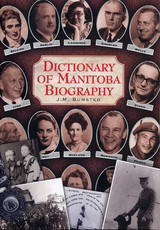 Dictionary of Manitoba Biography
J.M. Bumsted
University of Manitoba Press, 1999 Manitoba has been at the crossroads of many of the important debates and events in Canadian history. From the early fur trade to the Riel Rebellion to the Winnipeg General Strike, Manitobans have frequently played crucial roles in Canadian and sometimes world history. Until now, there has been no comprehensive, contemporary source for information on the many Manitobans who have left their mark on history and society. Dictionary of Manitoba Biography fills this gap, with biographical sketches of over 1700 Manitobans who have made an impact in politics, the arts, sports, commerce, agriculture, and society. It is an invaluable resource for scholars, students, and general readers interested in Canadian history. Particular emphasis has been placed on reflecting Manitoba's ethnic and social diversity, and on including men and women who were notable in their own day but have now been forgotten. Many entries also refer the reader to additional references for further reading. More than a reference book, Dictionary of Manitoba Biography is also a fascinating work of history in its own right, which presents the full and colourful scope of over 300 years of people in Manitoba history and social life, from premiers and mayors to nightclub owners and sports heroes.
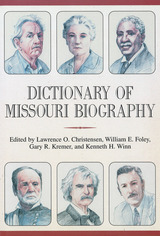 Dictionary of Missouri Biography
Edited by Lawrence O. Christensen, William E. Foley, Gary R. Kremer & Kenneth H.Winn
University of Missouri Press, 1999 In the making for almost a decade, the Dictionary of Missouri Biography is the most important reference work on Missouri biography to be published in the last half century. Written by nearly three hundred talented authors from around the country and edited by four of the leading authorities on Missouri history, this monumental work contains biographies of more than seven hundred individuals who have in some way made a contribution to the course of state and national history. Covering all periods as well as all regions of the state, this remarkable volume illustrates the state's cultural, racial, and ethnic diversity. Although the men and women chosen for inclusion in this book came from many walks of life, all of them were either born in Missouri or through their lives touched the state in a significant way. Many of the people will be instantly recognizable, but others will be less well known. Each of them, however, achieved notoriety in some area of activity—politics, business, agriculture, the arts, entertainment, sports, education, military service, diplomacy, social reform, civic improvements, science, or religion. Providing information on and insight into the lives, careers, personalities, and eras of all of the subjects, the book clearly presents the achievements of the featured individuals, as well as the richness of the state's heritage. Brief bibliographies after each entry direct the reader toward further research on a given subject. Written in an easy-to-read and accessible style, the Dictionary of Missouri Biography will be an indispensable reference. Scholars, researchers, and the general reader will turn to this guide repeatedly to discover useful and reliable information about noteworthy Missourians. Every library, every school, every historian, and every Missouri family will want this important new work.
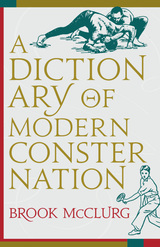 A Dictionary of Modern Consternation
Brook McClurg
University of Alaska Press, 2024 Winner of the 2022 Permafrost Prize in Nonfiction
A Dictionary of Modern Consternation is a genre-bending nonfiction lyric following one family through the years from the financial crisis to the COVID-19 pandemic. In this cheeky dictionary-shaped exploration of how language can often alienate and dehumanize, weakening feelings of community with societal trends that subsume individual lives, Brook McClurg offers a footnote narrative of an international life pursuing the business of words.
What starts as a lighthearted academic exploration becomes real when the pandemic hits—at the letter P—and the ability to treat each other humanely suddenly has grave consequences. Questioning the ways specialized jargon in language—often corporate, legal, and militaristic in nature—encroaches on our feelings of community and responsibility to one another, McClurg employs an abecedarian format, concealing his meaningful and sensitive explorations of personal strife inside a more formal facade. A Dictionary of Modern Consternation reveals its subjective viewpoint and ironic tone over the course of the text, confronting themes of loneliness and isolation, global strife and endless war, and intimacy, love, and family.
With approximately 500 satirical dictionary entries and 143 flash essays as footnotes, this experimental memoir is filled with satirical definitions, pseudo-aphorisms, and inquisitions into words or phrases. A Dictionary of Modern Consternation is for general readers, collectors, book-as-art lovers, and anyone interested in the political economy of language, as well as graduate classes exploring experimental forms.
A Dictionary of Moroccan Arabic: Moroccan-English/English-Moroccan
Richard S. Harrell and Harvey Sobelman, Editors. Foreword by Elizabeth M. Bergman
Georgetown University Press, 2004 This classic volume presents the core vocabulary of everyday life in Morocco—from the kitchen to the mosque, from the hardware store to the natural world of plants and animals. It contains myriad examples of usage, including formulaic phrases and idiomatic expressions. Understandable throughout the nation, it is based primarily on the standard dialect of Moroccans from the cities of Fez, Rabat, and Casablanca. All Arabic citations are in an English transcription, making it invaluable to English-speaking non-Arabists, travelers, and tourists—as well as being an important resource tool for students and scholars in the Arabic language-learning field.
Dictionary of Music
Theodore Karp
Northwestern University Press, 1983 This concise, clear reference gets straight to the important points in the history of music. With extended articles on major figures, movements, technical concepts, and explanations of standard symbols, abbreviations, and notations, Karp's text has been praised for its ease of use and unfailing accuracy. This edition features new illustrations and covers all musical periods: Medieval, Renaissance, Baroque, Classical, Romantic, and Modern.
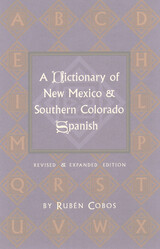 A Dictionary of New Mexico and Southern Colorado Spanish: Revised and Expanded Edition
Rubén Cobos
Museum of New Mexico Press, 2011 Continuously in print since 1983, Dictionary of New Mexico and Southern Colorado Spanish, has become a classic Spanish reference book, widely used in classrooms across the United States. As a teenager in Albuquerque, esteemed linguist and folkorist Rubén Cobos (1911-2010) was intrigued by and began documenting the regional variations of spoken Spanish. This was to become his work of a lifetime spanning seventy-five years. Dr. Cobos began recording Indo-Hispanic folklore material in the early 1940s. With the co-operation of the villagers, farmers, sheepherders, and other hard-working people in the small towns throughout New Mexico and Southern Colorado he recorded the nuances, slang and the regionally distinctive words of Spanish spoken in the communities of the upper Rio Grande and Southern Colorado.
Ruben Cobos spent a decade working on the revised and expanded edition of the dictionary, published in 2003. The Dictionary of New Mexico and Southern Colorado Spanish has assumed its place as the most authoritative reference on the archaic dialect of Spanish spoken in this region.
 The Dictionary of Nineteenth-Century British Scientists
Edited by Bernard Lightman
University of Chicago Press, 2004 Containing more than 1,200 new entries on both major and minor figures of British science, this four-volume dictionary examines how the theories and practices of scientists were shaped by Victorian beliefs about religion, gender, imperialism, and politics, presenting a rich panorama of the development of science in the nineteenth century.
While the Dictionary of Nineteenth-Century British Scientists covers those working in traditional scientific areas such as physics, astronomy, chemistry, mathematics, and biology, it also acknowledges those working in the human sciences such as anthropology, sociology, psychology, and medicine. In addition, areas often overlooked by historians of science—such as phrenology, mesmerism, spiritualism, scientific illustration, scientific journalism and publishing, instrument making, and government policy—are included here, as are the important roles of neglected "amateurs," such as women and members of the working class. By including those who worked in nontraditional areas and by considering the social and cultural context in which they lived, the dictionary reflects a richer picture of nineteenth-century science than has ever been seen before.
Dictionary of Non-Philosophy
François Laruelle
University of Minnesota Press, 2013
In The Dictionary of Non-Philosophy, the French thinker François Laruelle does something unprecedented for philosophers: he provides an enormous dictionary with a theoretical introduction, carefully crafting his thoughts to explain the numerous terms and neologisms that he deems necessary for the project of non-philosophy. With a collective of thinkers also interested in the project, Laruelle has taken up the difficult task of creating an essential guide for entering into his non-standard, non-philosophical terrain. And for Laruelle, even the idea of a dictionary and what a dictionary is become material for his non-philosophical inquiries. As his opening note begins, “Thus on the surface and within the philosophical folds of the dictionary, identity and its effect upon meaning are what is at stake.”
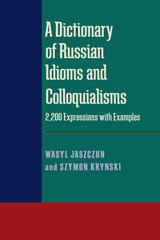 A Dictionary of Russian Idioms and Colloquialisms: 2,200 Expressions with Examples
Wasyl Jaszczun
University of Pittsburgh Press, 1969 The dictionary covers phraseological fusions, units, and combinations; single words used figuratively; and colloquialisms. Each idiom or colloquialism, translated into English, is accompanied by a sentence in Russian showing its correct use. Approximately one-fifth of the illustrative text is drawn from the classics most frequently studied in undergraduate and graduate Russian courses. An index to writers quoted and a bibliography are included.
The work presupposes knowledge of basic Russian grammar and a vocabulary of about 2,000 words. The native speaker of Russian will be able to use this book to develop greater sophistication in English. The advanced student, the teacher, and the specialist who reads Russian will find this an invaluable guide to the subtleties of Russian usage.
The work presupposes knowledge of basic Russian grammar and a vocabulary of about 2,000 words. The native speaker of Russian will be able to use this book to develop greater sophistication in English. The advanced student, the teacher, and the specialist who reads Russian will find this an invaluable guide to the subtleties of Russian usage.
A Dictionary of Selected Synonyms in the Principal Indo-European Languages
Carl Darling Buck
University of Chicago Press, 1988 Originally published in 1949 and appearing now for the first time in a paperbound edition, Buck's Dictionary remains an indispensable tool for diachronic analysis of the Indo-European languages. Arranged according to the meaning of words, the work contains more than 1,000 groupings of synonyms from the principal Indo-European languages. Buck first tabulates the words describing a particular concept and then discusses their etymological and semantic history, tracing changes in meaning of the root words as well as presenting cases indicating which of the older forms have been replaced by expressions of colloquial or foreign origin.
 A Dictionary of Syrian Arabic: English-Arabic
Karl Stowasser and Moukhtar Ani, Editors. Foreword by Elizabeth M. Bergman
Georgetown University Press, 2004 A Dictionary of Syrian Arabic provides Syrian terms for the language spoken in everyday life by Muslims primarily in Damascus, but understandable throughout Syria as well as in the broader linguistic areas of present-day Lebanon, Jordan, and among the Palestinians and the Arabic-speaking population of Israel. Entries include examples, idioms, and common phrases to illustrate usage. The Arabic terms are presented in transcription. It is useful for students of Arabic, scholars wishing to train in the Syrian dialect, and visitors and travelers to Syria and other nations where the dialect is spoken. A thorough introduction outlines the sociolinguistic situation in Syria and covers phonology, morphology, syntax, grammar, and vocabulary. Alongside the other Arabic language-learning and reference works published by Georgetown University Press, this dictionary is yet another invaluable volume on spoken Arabic, belonging at the side of travelers and scholars, and on the shelves of research and reference libraries.
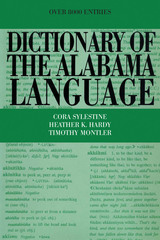 Dictionary of the Alabama Language
By Cora Sylestine, Heather K. Hardy and Timothy Montler
University of Texas Press, 1993 The Alabama language, a member of the Muskogean language family, is spoken today by the several hundred inhabitants of the Alabama-Coushatta Indian Reservation in Polk County, Texas. This dictionary of Alabama was begun over fifty years ago by tribe member Cora Sylestine. She was aided after 1980 by linguists Heather K. Hardy and Timothy Montler, who completed work on the dictionary after her death. This state-of-the-art analytical dictionary contains over 8,000 entries of roots, stems, and compounds in the Alabama-English section. Each entry contains precise definitions, full grammatical analyses, agreement and other part-of-speech classifications, variant pronunciations, example sentences, and extensive cross-references to stem entries. The Alabama-English section is followed by a thorough English-Alabama finder list that functions as a full index to the definitions in the Alabama-English section.
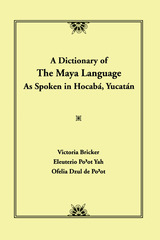 Dictionary Of The Maya Language: As Spoken in Hocaba Yucatan
Victoria Bricker
University of Utah Press, 1998 The Maya language of Yucatan is known as Yucate by linguists, but its speakers refer to it as May. Dialiectical differences are minimal across the peninsula, and the more than 750,000 speakers of Maya can be understood wherever they go. Moreover, it is not only a living language but is of great use to epigraphers working on ancient Maya glyphs. This dictionary is the culmination of fourteen years’ labor centering on the town and dialect of Hocaba. Whereas other dictionaries of may use Latin paradigms, this is the first to provide a comprehensive, systematic listing of the stems that can be derived from each root and that give Maya its distinctive character. The entries cover the full range of Maya speech, from simple expressions and idioms to compound stems. Maya sample sentences provide a window into the richness of everyday communication, with its mixture of wit, epithets, insults, riddles, aphorisms, and exchanges of information, including a wonderful assortment of metaphorical expressions like "peccary’s eyelashes" for a type of bean, "the end of the road" for marriage, and a verb meaning "to draw breath with puckered mouth after eating chili." Among the cultural domains encompassed by the dictionary are agriculture, architecture, astronomy, culinary practices and recipes, education, folklore, games, humor, medical prescriptions, ritual, toys, and weaving, many of which have roots in the Precolumbian past. In addition to the dictionary entries, this work also contains a short grammar, a botanical index, and bibliography.
 A Dictionary of Turkish Verbs: In Context and By Theme
Ralph Jaeckel and Gülnur Doganata Erciyes. With the Collaboration of Mehmet Süreyya Er
Georgetown University Press, 2006 One of the keys to learning the Turkish language is to understand the importance and function of the verb. The stem of the verb, together with various suffixes of mode, tense, person, along with a subject and/or object, may be the equivalent of an entire English sentence. A Dictionary of Turkish Verbs is an aid to both the beginning and more advanced student of the language by providing approximately 1,000 verbs in context as they appear in up-to-date colloquial Turkish phrases and sentences, or short dialogues in translation. Contrasting English and Turkish ways of expression, this multipurpose dictionary also helps the English speaker avoid the most common errors—with most verbs cross-referenced to related verbs, synonyms, or antonyms, and to the broader themes or categories of meaning to which they belong. Includes an English-Turkish index and a thesaurus section (using Roget's categories) where verbs of related meaning appear together and a short reference list of verb-forming suffixes. For students at any stage of learning the Turkish language, or for the self-motivated traveler, this unique dictionary will help open the door to greater understanding in an increasingly important area of the world.
Did Muhammad Exist?: An Inquiry into Islam's Obscure Origins
Robert Spencer
Intercollegiate Studies Institute, 2012
Everything you thought you knew about Islam is about to change
This stunning book uncovers provocative evidence that forces us to ask: Did Muhammad, Islam’s founding prophet, even exist?
It is a question that few have thought—or dared—to ask. But the widely accepted story of Islam’s origins begins to crumble on close examination.
InDid Muhammad Exist? bestselling author Robert Spencer brings to early Islam the same level of probing historical criticism scholars have long applied to Christianity and Judaism. Meticulously examining historical records, archaeological findings, and pioneering new scholarship, Spencer challenges the most fundamental assumptions about Islam’s origins—raising questions with profound implications for our world today.
Did the Greeks Believe in Their Myths?: An Essay on the Constitutive Imagination
Paul Veyne
University of Chicago Press, 1988 "[Veyne's] present book has some kinship with his sprightly theoretical work Comment on ecrit l'histoire; and he declares that its aim was to provoke reflection on the way our conception of truth is built up and changes over the centuries. . . . The style is brilliant and exhilarating."—Jasper Griffin, Times Literary Supplement
The Didache: A Missing Piece of the Puzzle in Early Christianity
Jonathan A. Draper
SBL Press, 2015 An intriguing dilemma for those who study ancient Christian contexts and literature
This edited volume includes essays and responses from specialists in the Didache and in early church history in general.
Features:
- Strategies for understanding liturgical constructions and ritual worship found in the text
- Studies that apply generally to the overall content and background of the Didache
- Essays on the relationship between the Didache and scripture—particularly with respect to the Gospel of Matthew
 Didactic Poetries
Philippe Beck
University of Minnesota Press, 2016 Complex, haunting, imaginative and profoundly literary, Didactic Poetries is Beck’s response to Schiller’s statement: “We are still waiting for a didactic poem where thought itself would be and would remain poetic,” and Hegel’s claim that, “strictly speaking, didactic poetry isn’t poetry.” For the acclaimed French poet, Philippe Beck, Schiller’s task of attempting a didactic poetry remains as vital today as it was for Schiller’s time. Is there a way to construct a poetry built and chiseled, hammered and stitched, from out of past narratives and poetries, condensed in such a manner as to make new poetic verses sing new truths? Forging a singular attempt to echo the poets and tales of a bygone age, Beck’s didactic poetries perhaps carve out the path for renewing a poetic thought as a quasi-musical atmosphere where the reader can glimpse “A small country “sculpted” as spiritual, supposed to be so
at home in the Bygone Country. Alluvial layers so light, that weather disappeared, weary of variety a priori.” Beck’s deftly textured poems interweave contemporary commentary with cultural, historical, literary, and philosophical allusions, drawing the reader into a world of lived poetic experience.
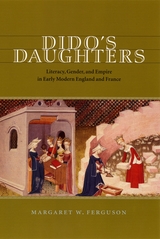 Dido's Daughters: Literacy, Gender, and Empire in Early Modern England and France
Margaret W. Ferguson
University of Chicago Press, 2003 Winner of the 2004 Book Award from the Society for the Study of Early Modern Women and the 2003 Roland H. Bainton Prize for Literature from the Sixteenth Century Society and Conference.
Our common definition of literacy is the ability to read and write in one language. But as Margaret Ferguson reveals in Dido's Daughters, this description is inadequate, because it fails to help us understand heated conflicts over literacy during the emergence of print culture. The fifteenth through seventeenth centuries, she shows, were a contentious era of transition from Latin and other clerical modes of literacy toward more vernacular forms of speech and writing.
Fegurson's aim in this long-awaited work is twofold: to show that what counted as more valuable among these competing literacies had much to do with notions of gender, and to demonstrate how debates about female literacy were critical to the emergence of imperial nations. Looking at writers whom she dubs the figurative daughters of the mythological figure Dido—builder of an empire that threatened to rival Rome—Ferguson traces debates about literacy and empire in the works of Marguerite de Navarre, Christine de Pizan, Elizabeth Cary, and Aphra Behn, as well as male writers such as Shakespeare, Rabelais, and Wyatt. The result is a study that sheds new light on the crucial roles that gender and women played in the modernization of England and France.
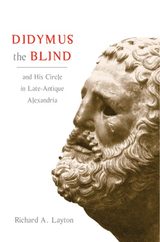 Didymus the Blind and His Circle in Late-Antique Alexandria: Virtue and Narrative in Biblical Scholarship
Richard A. Layton
University of Illinois Press, 2004 This is the first comprehensive study in the English language of the commentaries of Didymus the Blind, who was revered as the foremost Christian scholar of the fourth century and an influential spiritual director of ascetics.
The writings of Didymus were censored and destroyed due to his posthumous condemnation for heresy. This study recovers the uncensored voice of Didymus through the commentaries among the Tura papyri, a massive set of documents discovered in an Egyptian quarry in 1941.
This neglected corpus offers an unprecedented glimpse into the internal workings of a Christian philosophical academy in the most vibrant and tumultuous cultural center of late antiquity. By exploring the social context of Christian instruction in the competitive environment of fourth-century Alexandria, Richard A. Layton elucidates the political implications of biblical interpretation.
Through detailed analysis of the commentaries on Psalms, Job, and Genesis, the author charts a profound tectonic shift in moral imagination as classical ethical vocabulary becomes indissolubly bound to biblical narrative. Attending to the complex interactions of political competition and intellectual inquiry, this study makes a unique contribution to the cultural history of late antiquity.
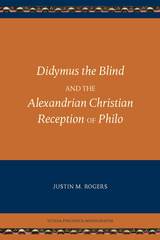 Didymus the Blind and the Alexandrian Christian Reception of Philo
Justin M. Rogers
SBL Press, 2017 Explore the Jewish traditions preserved in the commentaries of a largely neglected Alexandrian Christian exegete
Justin M. Rogers surveys commentaries on Genesis, Job, Psalms, Ecclesiastes, and Zechariah by Didymus the Blind (ca. 313–398 CE), who was regarded by his students as one of the greatest Christian exegetes of the fourth century. Rogers highlights Didymus’s Jewish sources, zeroing in on traditions of Philo of Alexandria, whose treatises were directly accessible to Didymus while he was authoring his exegetical works. Philonic material in Didymus is covered by extensive commentary, demonstrating that Philo was among the principle sources for the exegetical works of Didymus the Blind. Rogers also explores the mediating influence of the Alexandrian Christian tradition, focusing especially on the roles of Clement and Origen.
Features
- Fresh insights into the Alexandrian Christian reception of Philo
- A thorough discussion of Didymus’s exegetical method, particularly in the Commentary on Genesis
- Examination of the use and importance of Jewish and Christian sources in Late Antique Christian commentaries
The Die Is Cast: Arkansas Goes to War, 1861
Mark K. Christ
Butler Center for Arkansas Studies, 2010 Five writers examine the political and social forces in Arkansas that led to secession and transformed farmers, clerks, and shopkeepers into soldiers. Retired longtime Arkansas State University professor Michael Dougan delves into the 1861 Arkansas Secession Convention and the delegates’ internal divisions on whether to leave the Union. Lisa Tendrich Frank, who teaches at Florida Atlantic University, discusses the role Southern women played in moving the state toward secession. Carl Moneyhon of the University of Arkansas at Little Rock looks at the factors that led peaceful civilians to join the army. Thomas A. DeBlack of Arkansas Tech University tells of the thousands of Arkansans who chose not to follow the Confederate banner in 1861, and William Garret Piston of Missouri State University chronicles the first combat experience of the green Arkansas troops at Wilson’s Creek.
 The Diehards: Aristocratic Society and Politics in Edwardian England
Gregory D. Phillips
Harvard University Press, 1979 The Diehards is a study of the 112 peers who voted against the Parliament Bill of 1911. In voting against this bill, which abolished the veto power of the House of Lords, the diehards defied the leadership of their own party. Other Unionists were willing to capitulate in response to the Liberal government's threat to create enough new peers to swamp the upper chamber, but the diehards were ready to “die in the last ditch.”
There has never been a satisfactory explanation of diehard intransigence. A mistake of contemporaries and of later historians has been to characterize the diehards as “backwoodsmen” who cared little about national politics and barely knew their way to the House of Lords. But in fact, as Gregory Phillips shows, they were among the most politically active members of the peerage. They can be seen as radical conservatives, willing to countenance drastic changes in certain aspects of politics and society in order to preserve as much as possible of their traditional position and way of life.
Utilizing a wide range of public and private papers, Phillips has given us an economic, social, and political study of Edwardian England that substantially alters our understanding of this crisis in British constitutional history.
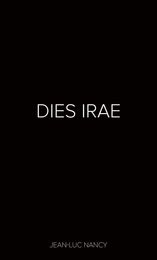 Dies Irae
Jean-Luc Nancy
University of Westminster Press, 2019 Edited by Angela Condello, Carlo Grassi and Andreas Philippopoulos-Mihalopoulos
With an introduction by Carlo Grassi
Translated by Cadenza Academic Translations and Angela Condello What does it mean to judge when there is no general and universal norm to define what is right and what is wrong? Can laws be absent and is law always necessary? This is the first English translation published of Jean- Luc Nancy’s acclaimed consideration of the law’s most pervasive principles in the context of actual systems and contemporary institutions, power, norms, laws. In a world where it is impossible to imagine the realisation of an ideal of justice that corresponds to every person’s ideal of justice, Nancy probes the limits of legal normativity. Moreover, the question is asked: how can legal normativity be legitimised? A legal order based on performativity and formal validity is questionable and other forces than juridical normativity are at the heart of Dies Irae. Such leads inevitably to the processes of inclusion and exclusion that characterise contemporary juridical systems and those issues of identity, hostility and self-representation central to contemporary political and legal debates
Diesel: Technology And Society In Industrial Germany
Donald E. Thomas Jr.
University of Alabama Press, 1987 A case study of the technological, economic, and intellectual trends during Germany’s industrial revolution
The life of Rudolf Diesel, a man who achieved a power plant with the potential for revolutionizing industry and transportation. Diesel demonstrated that he possessed both the scientific insight and technical skill needed to create the diesel engine.
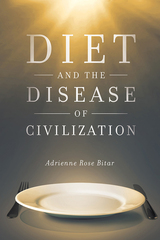 Diet and the Disease of Civilization
Adrienne Rose Bitar
Rutgers University Press, 2017 Diet books contribute to a $60-billion industry as they speak to the 45 million Americans who diet every year. Yet these books don’t just tell readers what to eat: they offer complete philosophies about who Americans are and how we should live. Diet and the Disease of Civilization interrupts the predictable debate about eating right to ask a hard question: what if it’s not calories—but concepts—that should be counted? Cultural critic Adrienne Rose Bitar reveals how four popular diets retell the “Fall of Man” as the narrative backbone for our national consciousness. Intensifying the moral panic of the obesity epidemic, they depict civilization itself as a disease and offer diet as the one true cure. Bitar reads each diet—the Paleo Diet, the Garden of Eden Diet, the Pacific Island Diet, the detoxification or detox diet—as both myth and manual, a story with side effects shaping social movements, driving industry, and constructing fundamental ideas about sickness and health. Diet and the Disease of Civilization unearths the ways in which diet books are actually utopian manifestos not just for better bodies, but also for a healthier society and a more perfect world.
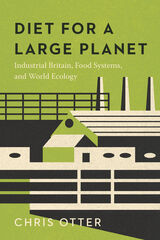 Diet for a Large Planet: Industrial Britain, Food Systems, and World Ecology
Chris Otter
University of Chicago Press, 2020 A history of the unsustainable modern diet—heavy in meat, wheat, and sugar—that requires more land and resources than the planet is able to support.
We are facing a world food crisis of unparalleled proportions. Our reliance on unsustainable dietary choices and agricultural systems is causing problems both for human health and the health of our planet. Solutions from lab-grown food to vegan diets to strictly local food consumption are often discussed, but a central question remains: how did we get to this point?
In Diet for a Large Planet, Chris Otter goes back to the late eighteenth century in Britain, where the diet heavy in meat, wheat, and sugar was developing. As Britain underwent steady growth, urbanization, industrialization, and economic expansion, the nation altered its food choices, shifting away from locally produced plant-based nutrition. This new diet, rich in animal proteins and refined carbohydrates, made people taller and stronger, but it led to new types of health problems. Its production also relied on far greater acreage than Britain itself, forcing the nation to become more dependent on global resources. Otter shows how this issue expands beyond Britain, looking at the global effects of large agro-food systems that require more resources than our planet can sustain. This comprehensive history helps us understand how the British played a significant role in making red meat, white bread, and sugar the diet of choice—linked to wealth, luxury, and power—and shows how dietary choices connect to the pressing issues of climate change and food supply.
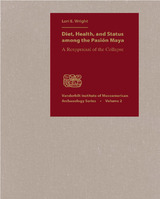 Diet, Health, and Status among the Pasion Maya: A Reappraisal of the Collapse
Lori E. Wright
Vanderbilt University Press, 2006 This volume presents the data, analyses, and interpretation of a wide range of osteological and burial data. The Petexbatun bioarchaeology subproject included complete assessment of burial practice and osteology. The chapters on this research explore population variability in time and space, paleopathology, and trauma from skeletal remains throughout the various sites and the inter-site areas of the Petexbatun, as well as from Seibal and Altar de Sacrificios. Yet Wright's innovative study goes on to apply the most recent physical and chemical techniques, particularly isotopic analysis, to assess diet and health in the populations of the Pasion region. Variability between sites, across levels of status, and over time are assessed and conservatively interpreted in the light of contemporary issues and problems of physical, chemical, and statistical methodology. Finally, the Petexbatun and Pasion region results are compared in order to reassess past and current studies and interpretation of skeletal remains in other regions of the ancient Maya lowlands. In the final chapters of this work, Wright's cutting-edge osteological analyses are used to critique current alternative interpretations of Late Classic to Postclassic culture history and alternative hypotheses on the role of changes in climate, ecology, diet, nutrition, invasion, and other factors in the end of Classic Maya civilization and the transition to the Postclassic period. This volume also provides an independent assessment of the results of other Petexbatun region subprojects and a comparative evaluation of recent studies by other projects of Late and Terminal Classic culture change. For bioarchaeologists, this work sets a new standard in breadth and depth of osteological study. For Pre-Columbian scholars in general, it provides new insights into the environmental and biological issues involved in the debate on the end of the Classic period of Maya civilization. VIMA Series #2
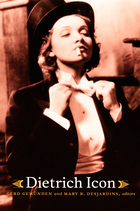 Dietrich Icon
Gerd Gemünden and Mary R. Desjardins, eds.
Duke University Press, 2007 Few movie stars have meant as many things to as many different audiences as the iconic Marlene Dietrich. The actress-chanteuse had a career of some seventy years: one that included not only classical Hollywood cinema and the concert hall but also silent film in Weimar Germany, theater, musical comedy, vaudeville, army camp shows, radio, recordings, television, and even the circus. Having renounced and left Nazi Germany, assumed American citizenship, and entertained American troops, Dietrich has long been a flashpoint in Germany’s struggles over its cultural heritage. She has also figured prominently in European and American film scholarship, in studies ranging from analyses of the directors with whom she worked to theories about the ideological and psychic functions of film. Dietrich Icon, which includes essays by established and emerging film scholars, is a unique examination of the many meanings of Dietrich. Some of the essays in this collection revisit such familiar topics as Germany’s complex relationship with Dietrich, her ambiguous sexuality, her place in the lesbian archive, her star status, and her legendary legs, but with fresh critical perspective and an emphasis on historical background. Other essays establish new avenues for understanding Dietrich’s persona. Among these are a reading of Marlene Dietrich’s ABC—an eclectic autobiographical compendium containing Dietrich’s thoughts on such diverse subjects as “steak,” “Sternberg (Joseph von),” “Stravinsky,” and “stupidity”—and an argument that Dietrich manipulated her voice—through her accent, sexual innuendo, and singing—as much as her visual image in order to convey a cosmopolitan world-weariness. Still other essays consider the specter of aging that loomed over Dietrich’s career, as well as the many imitations of the Dietrich persona that have emerged since the star’s death in 1992. Contributors. Nora M. Alter, Steven Bach, Elisabeth Bronfen, Erica Carter, Mary R. Desjardins, Joseph Garncarz, Gerd Gemünden, Mary Beth Haralovich, Amelie Hastie, Lutz Koepnick, Alice A. Kuzniar, Amy Lawrence, Judith Mayne, Patrice Petro, Eric Rentschler, Gaylyn Studlar, Werner Sudendorf, Mark Williams
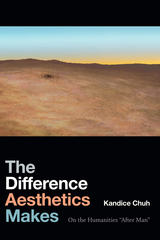 The Difference Aesthetics Makes: On the Humanities “After Man”
Kandice Chuh
Duke University Press, 2019 In The Difference Aesthetics Makes cultural critic Kandice Chuh asks what the humanities might be and do if organized around what she calls “illiberal humanism” instead of around the Western European tradition of liberal humanism that undergirds the humanities in their received form. Recognizing that the liberal humanities contribute to the reproduction of the subjugation that accompanies liberalism's definition of the human, Chuh argues that instead of defending the humanities, as has been widely called for in recent years, we should radically remake them. Chuh proposes that the work of artists and writers like Lan Samantha Chang, Carrie Mae Weems, Langston Hughes, Leslie Marmon Silko, Allan deSouza, Monique Truong, and others brings to bear ways of being and knowing that delegitimize liberal humanism in favor of more robust, capacious, and worldly senses of the human and the humanities. Chuh presents the aesthetics of illiberal humanism as vital to the creation of sensibilities and worlds capable of making life and lives flourish.
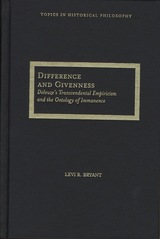 Difference and Givenness: Deleuze's Transcendental Empiricism and the Ontology of Immanence
Levi R Bryant
Northwestern University Press, 2008 From one end of his philosophical work to the other, Gilles Deleuze consistently described his position as a transcendental empiricism. But just what is transcendental about Deleuze’s transcendental empiricism? And how does his position fit with the traditional empiricism articulated by Hume? In Difference and Givenness, Levi Bryant addresses these long-neglected questions so critical to an understanding of Deleuze’s thinking. Through a close examination of Deleuze’s independent work--focusing especially on Difference and Repetition--as well as his engagement with thinkers such as Kant, Maïmon, Bergson, and Simondon, Bryant sets out to unearth Deleuze’s transcendental empiricism and to show how it differs from transcendental idealism, absolute idealism, and traditional empiricism.
What emerges from these efforts is a metaphysics that strives to articulate the conditions for real existence, capable of accounting for the individual itself without falling into conceptual or essentialist abstraction. In Bryant’s analysis, Deleuze’s metaphysics articulates an account of being as process or creative individuation based on difference, as well as a challenging critique--and explanation--of essentialist substance ontologies. A clear and powerful discussion of how Deleuze’s project relates to two of the most influential strains in the history of philosophy, this book will prove essential to anyone seeking to understand Deleuze’s thought and its specific contribution to metaphysics and epistemology.
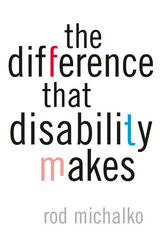 The Difference That Disability Makes
Rod Michalko
Temple University Press, 2002 Rod Michalko launches into this book asking why disabled people are still feared, still regarded as useless or unfit to live, not yet welcome in society? Michalko challenges us to come to grips with the social meanings attached to disability and the body that is not "normal."Michalko's analysis draws from his own understanding of blindness and narratives by other disabled people. Connecting lived experience with social theory, he shows the consistent exclusion of disabled people from the common understandings of humanity and what constitutes the good life. He offers new insight into what suffering a disability means to individuals as well as to the polity as a whole. He shows how disability can teach society about itself, about its determination of what is normal and who belongs. Guiding us to a new understanding of how disability, difference, and suffering are related, this book enables us to choose disability as a social identity and a collective political issue. The difference that disability makes can be valuable and worthwhile, but only if we choose to make it so.
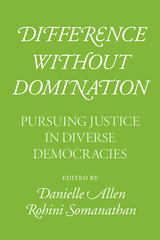 Difference without Domination: Pursuing Justice in Diverse Democracies
Edited by Danielle Allen and Rohini Somanathan
University of Chicago Press, 2020 Around the globe, democracy appears broken. With political and socioeconomic inequality on the rise, we are faced with the urgent question of how to better distribute power, opportunity, and wealth in diverse modern societies. This volume confronts the dilemma head-on, exploring new ways to combat current social hierarchies of domination.
Using examples from the United States, India, Germany, and Cameroon, the contributors offer paradigm-changing approaches to the concepts of justice, identity, and social groups while also taking a fresh look at the idea that the demographic make-up of institutions should mirror the make-up of a populace as a whole. After laying out the conceptual framework, the volume turns to a number of provocative topics, among them the pernicious tenacity of implicit bias, the logical contradictions inherent to the idea of universal human dignity, and the paradoxes and problems surrounding affirmative action. A stimulating blend of empirical and interpretive analyses, Difference without Domination urges us to reconsider the idea of representation and to challenge what it means to measure equality and inequality.
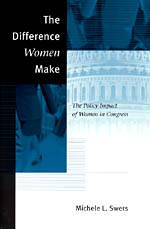 The Difference Women Make: The Policy Impact of Women in Congress
Michele L. Swers
University of Chicago Press, 2002 What if there were more women in Congress? Providing the first comprehensive study of the policy activity of male and female legislators at the federal level, Michele L. Swers persuasively demonstrates that, even though representatives often vote a party line, their gender is politically significant and does indeed influence policy making.
Swers combines quantitative analyses of bills with interviews with legislators and their staff to compare legislative activity on women's issues by male and female members of the House of Representatives during the 103rd (1993-94) and 104th (1995-96) Congresses. Tracking representatives' commitment to women's issues throughout the legislative process, from the introduction of bills through committee consideration to final floor votes, Swers examines how the prevailing political context and members' positions within Congress affect whether and how aggressively they pursue women's issues.
Anyone studying congressional behavior, the role of women, or the representation of social identities in Congress will benefit from Swers's balanced and nuanced analysis.
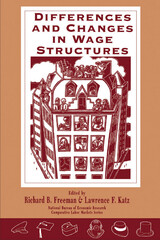 Differences and Changes in Wage Structures
Edited by Richard B. Freeman and Lawrence F. Katz
University of Chicago Press, 1995 During the past two decades, wages of skilled workers in the United States rose while those of unskilled workers fell; less-educated young men in particular have suffered unprecedented losses in real earnings. These twelve original essays explore whether this trend is unique to the United States or is part of a general growth in inequality in advanced countries.
Focusing on labor market institutions and the supply and demand forces that affect wages, the papers compare patterns of earnings inequality and pay differentials in the United States, Australia, Korea, Japan, Western Europe, and the changing economies of Eastern Europe. Cross-country studies examine issues such as managerial compensation, gender differences in earnings, and the relationship of pay to regional unemployment.
From this rich store of data, the contributors attribute changes in relative wages and unemployment among countries both to differences in labor market institutions and training and education systems, and to long-term shifts in supply and demand for skilled workers. These shifts are driven in part by skill-biased technological change and the growing internationalization of advanced industrial economies.
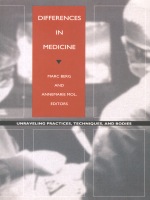 Differences in Medicine: Unraveling Practices, Techniques, and Bodies
Marc Berg and Annemarie Mol, eds.
Duke University Press, 1998 Western medicine—especially in contrast with non-Western traditions of medical practice—is widely thought of as a coherent and unified field in which beliefs, definitions, and judgments are shared. Marc Berg and Annemarie Mol debunk this myth with an interdisciplinary and intercultural collection of essays that reveals the significantly varied ways practitioners of “conventional” Western medicine handle bodies, study test results, configure statistics, and converse with patients . Combining theoretical work with interviews and direct observation of the activities and interactions of doctors, nurses, technicians, and patients, the contributors to this volume provide comparative studies of specific cases. Individual chapters explore topics such as the contested domain of fetal surgery in a California hospital, the construction of gender identity before transsexual surgery in Germany, and differences in the treatment and definition of pain by two clinics in France. Differences in Medicine advances earlier studies on medicine’s social diversity and regional variations to expose significant differences in the presumptions and decisions that affect patients’ lives, and marks a dramatic development in both the study of medicine and in science studies generally. Revealing the ways in which the bodies and lives of people are constructed as medical objects by practitioners, technologies, and textbooks, this collection calls for and initiates new, more textured investigations and theories of the body in medicine and the practice of science. It will open new discussions among medical and healthcare professionals as well as scholars in medical anthropology, science studies, sociology, philosophy, and the history of medicine.
Contributors. Isabelle Baszanger, Marc Berg, Geoffrey C. Bowker, Monica J. Casper, Charis M. Cussins, Nicolas Dodier, Stefan Hirschauer, Annemarie Mol, Vicky Singleton, Susan Leigh Star, Stefan Timmermans, Dick Willems
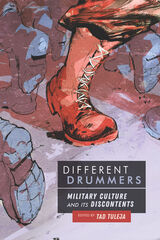 Different Drummers: Military Culture and Its Discontents
Tad Tuleja
Utah State University Press, 2020 Different Drummers explores the disjunction between organizational solidarity and individual pushback in military organizations, examining how members of the armed forces express ambivalent attitudes about their service. The volume focuses not on antimilitary sentiment but on psychological complexity within a loyal opposition, considering examples of creative insubordination and analyzing the “oppositional positioning” of individuals whose military identity is conflicted.
This multidisciplinary collection brings in the perspectives of scholars from folklore, literary studies, psychology, and media studies, as well as the first-person perspectives of veterans. It includes chapters on the vernacular genres of bodylore, folksong, personal narrative, and legend; literary items like soldiers’ memoirs and poetry; the artwork of soldier cartoonists; and accounts of defying the chain of command in the field. Ideally, the goal of military basic training is to replace recruits’ focus on their own individuality with an unquestioned devotion to group solidarity. In reality, unit cohesion is constantly challenged by humans clinging obstinately to their non-collective personalities. Different Drummers focuses on those in uniform who feel themselves to be both of the military culture and at odds with it. It shows how these loyal “discontents” find ways of communicating and interacting with others that sometimes defy institutional expectations.
Contributors:
Ron Ben-Tovim, Carol Burke, Richard Allen Burns, Catherine Calloway, James I. Deutsch, Ronald Fry, Angus Kress Gillespie, Christina M. Knopf, Jay Mechling, Matthew David Perry, Mark C. Russell, John Paul Wallis
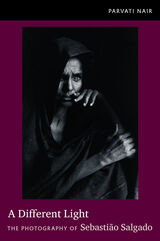 A Different Light: The Photography of Sebastião Salgado
Parvati Nair
Duke University Press, 2012 A Different Light is the first in-depth study of the work of Sebastião Salgado, widely considered the greatest documentary photographer of our time. For more than three decades, Salgado has produced thematic photo-essays depicting the massive human displacement brought about by industrialization and conflict. These projects usually take years to complete and include pictures from dozens of countries. Parvati Nair offers detailed analyses of Salgado’s best-known photo-essays, including Workers (1993) and Migrations (2000), as well as Genesis, which he began in 2004. With Genesis, Salgado has turned his lens from human turmoil to those parts of the planet not yet ravaged by modernity. Interpreting the photographer’s oeuvre, Nair engages broad questions about aesthetics, history, ethics, and politics in documentary photography. At the same time, she draws on conversations with Salgado and his wife and partner, Lélia Wanick Salgado, to explain the significance of the photographer’s life history, including his roots in Brazil and his training as an economist; his perspectives; and his artistic method. Underpinning all of Salgado’s major projects is a concern with displacement, exploitation, and destruction—of people, communities, and land. Salgado’s images exalt reality, compelling viewers to look and, according to Nair, to envision the world otherwise.
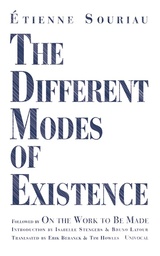 The Different Modes of Existence
Étienne Souriau
University of Minnesota Press, 2015 What relation is there between the existence of a work of art and that of a living being? Between the existence of an atom and that of a value like solidarity? These questions become our own each time a reality—whether it is a piece of music, someone we love, or a fictional character—is established and begins to take on an importance in our lives. Like William James or Gilles Deleuze, Souriau methodically defends the thesis of an existential pluralism. There are indeed different manners of existing and even different degrees or intensities of existence: from pure phenomena to objectivized things, by way of the virtual and the “super-existent,” to which works of art and the intellect, and even morality, bear witness. Existence is polyphonic, and, as a result, the world is considerably enriched and enlarged. Beyond all that exists in the ordinary sense of the term, it is necessary to allow for all sorts of virtual and ephemeral states, transitional realms, and barely begun realities, still in the making, all of which constitute so many “inter-worlds.”
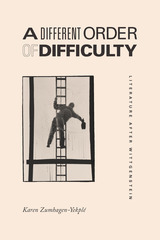 A Different Order of Difficulty: Literature after Wittgenstein
Karen Zumhagen-Yekplé
University of Chicago Press, 2020 Is the point of philosophy to transmit beliefs about the world, or can it sometimes have higher ambitions? In this bold study, Karen Zumhagen-Yekplé makes a critical contribution to the “resolute” program of Wittgenstein scholarship, revealing his Tractatus Logico-Philosophicus as a complex, mock-theoretical puzzle designed to engage readers in the therapeutic self-clarification Wittgenstein saw as the true work of philosophy. Seen in this light, Wittgenstein resembles his modernist contemporaries more than might first appear. Like the literary innovators of his time, Wittgenstein believed in the productive power of difficulty, in varieties of spiritual experience, in the importance of age-old questions about life’s meaning, and in the possibility of transfigurative shifts toward the right way of seeing the world. In a series of absorbing chapters, Zumhagen-Yekplé shows how Kafka, Woolf, Joyce, and Coetzee set their readers on a path toward a new way of being. Offering a new perspective on Wittgenstein as philosophical modernist, and on the lives and afterlives of his indirect teaching, A Different Order of Difficulty is a compelling addition to studies in both literature and philosophy.
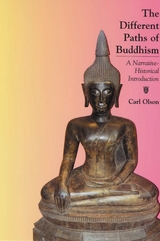 The Different Paths of Buddhism: A Narrative-Historical Introduction
Carl Olson
Rutgers University Press, 2005 For centuries, Buddhist teachers and laypeople have used stories, symbols, cultural metaphors, and anecdotes to teach and express their religious views. In this introductory textbook, Carl Olson draws on these narrative traditions to detail the development of Buddhism from the life of the historical Buddha to the present. By organizing the text according to the structure of Buddhist thought and teaching, Olson avoids imposing a Western perspective that traditional texts commonly bring to the subject.
The book offers a comprehensive introduction to the main branches of the Buddhist tradition in both the Mahayana and Theravada schools, including the Madhyamika school, the Yogacara school, Pure Land devotionalism, Tibetan Tantric Buddhism, Zen Buddhism, and village folk Buddhist traditions. Chapters explore the life and teachings of the Buddha in historical context, the early development and institutionalization of Buddhism, its geographic spread across Asia and eventually to the United States, philosophy and ethics, the relationship between monks and laity, political and ethical implications, the role of women in the Buddhist tradition, and contemporary reinterpretations of Buddhism.
Drawn from decades of classroom experience, this creative and ambitious textcombines expert scholarship and engaging stories that offer a much-needed perspective to the existing literature on the topic.
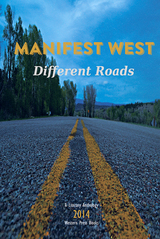 Different Roads
Larry Meredith
University Press of Colorado, 2014 "Different roads sometimes lead to the same castle."
—George R.R. Martin The works in this anthology reflect both the myth and the truth about the part of the United States we call the "West." Is there one "true" West? Or have the changes that are overwhelming most of the rest of the country so modified the West that there is little commonality? The editors of Different Roads believe, with Stephen R. Covey, that our "strength lies in differences, not in similarities," and we are constantly amazed by what Stanley Baldwin calls "the many-sidedness of truth." Many sides of the truth of the West are represented in the anthology. Is everything here absolutely the truth? The reader must decide. Topics included in this collection of poetry, fiction and creative non-fiction range from the West's diversity of landscape, people, languages, attitudes and history to discussions of water issues, wildfires, antiquities and a broad range of environmental concerns. Western Press Books is affiliated with with Western State Colorado University, produces one anthology annually focused on Western regional writing. The 2014 theme is "Western Diversity" and the title Different Roads comes from George R.R. Martin's quote above.
Differential Mortality in the United States: A Study in Socioeconomic Epidemiology
Evelyn M. Kitagawa and Philip M. Hauser
Harvard University Press, 1973 Two eminent scholars in the field of sociology present the first large-scale study to relate mortality to a broad spectrum of social and economic factors—including education, income, occupation, race, and marital status—with broad application to the public health field.
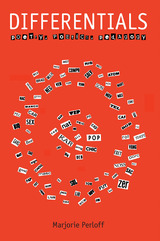 Differentials: Poetry, Poetics, Pedagogy
Marjorie Perloff
University of Alabama Press, 2004 A new collection of essays from a distinguished critic of contemporary poetry Marjorie Perloff is one of the foremost critics of contemporary American poetry writing today. Her works are credited by many with creating and sustaining new critical interest not only in the work of major modernist poets such as Yeats, Pound, Eliot, and Williams but also in the postwar tradition of American poetic innovation that ranges from the Black Mountain poets, through the New York School and concrete poetry, to the Language Poets of the 1980s and '90s. In Differentials, Perloff explores and defends her belief in the power of close reading, a strategy often maligned as reactionary in today's critical climate but which, when construed differentially, is vital, she believes, to any true understanding of a literary or poetic work, irrespective of how traditional or experimental it is. Perloff also examines key issues in modernism, from Eliot's conservative poetics and Pound's nominalism to translation theory (Wittgenstein, Eugene Jolas, Haroldo de Campos), and the contemporary avant garde, as represented by writers like Susan Howe, Tom Raworth, Rae Armantrout, Ron Silliman, Ronald Johnson, Caroline Bergvall, and Kenneth Goldsmith. Ultimately, Perloff's most important offerings in Differentials are her remarkably original reflections on the aesthetic process: on how poetry works, and what it means, in and for our time.
The Differentiation of Authority: The Medieval Turn toward Existence
James Greenaway
Catholic University of America Press, 2012 In this study, James Greenaway explores the philosophical continuity between contemporary Western society and the Middle Ages. Allowing for genuinely modern innovations, he makes the claim that the medieval search for order remains fundamentally unbroken in our search for order today.
 Differing Visions: DISSENTERS IN MORMON HISTORY
Edited by Roger D. Launius and Linda Thatcher: Foreword by Leonard J. Arrington
University of Illinois Press, 1994 This exciting volume uses closeup looks at nineteen Mormon dissenters to focus on the variety of religious sentiment within the Mormon church and to explore how it has encouraged divergent ideas from the early 1800s through modern times.
"An absolute necessity for anyone interested in the history/direction of the Latter Day Saint Movement." -- Gerald John Kloss, Latter Day Saint History
"Well done. . . . Respectful and professional." -- Lynn D. Wardle, BYU Studies
"Makes a valuable contribution to our improved understanding of the rich heritage and faith of Mormonism." -- Milan D. Smith Jr., Sunstone
"An important and thought-provoking book." -- Lola Van Wagenen, Utah Historical Quarterly
"A splendid collection. . . . Essential reading for anyone interested even slightly in the Restoration movement." -- Paul Shupe, The John Whitmer Historical Association Journal
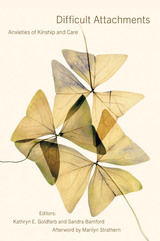 Difficult Attachments: Anxieties of Kinship and Care
Kathryn E. Goldfarb
Rutgers University Press, 2025 Anthropologists have long considered kinship as the basis for social solidarity. Indeed, the idea that kinship is grounded in positive sociality has found its way into most anthropological accounts and has served as an orienting framework directing decades of scholarly research. But what about when it is not? What about instances when kinship is anything but ‘warm and fuzzy’ but is characterized, instead, by neglect, violence, negative affect, or a lack of nurturance and care? In the three interlinked sections of this volume, the view that kinship is about “solidarity” and “care” is challenged by exploring how kin relations are not only about connection and inclusion but also about disconnection, exclusion, neglect, and violence. Kinship relationships that feel “positive” and “good” take a great deal of perseverance and work; there is nothing “natural” about kinship ties as being based on positive sociality. In these chapters, the contributors take seriously the contingency of kinship relations (the moments when kinship breaks down or is a source of suffering) and how this prompts scholars to develop new theoretical and methodological perspectives.
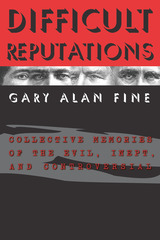 Difficult Reputations: Collective Memories of the Evil, Inept, and Controversial
Gary Alan Fine
University of Chicago Press, 2001 We take reputations for granted. Believing in the bad and the good natures of our notorious or illustrious forebears is part of our shared national heritage. Yet we are largely ignorant of how such reputations came to be, who was instrumental in creating them, and why. Even less have we considered how villains, just as much as heroes, have helped our society define its values.
Presenting essays on America's most reviled traitor, its worst president, and its most controversial literary ingénue (Benedict Arnold, Warren G. Harding, and Lolita), among others, sociologist Gary Alan Fine analyzes negative, contested, and subcultural reputations. Difficult Reputations offers eight compelling historical case studies as well as a theoretical introduction situating the complex roles in culture and history that negative reputations play.
Arguing the need for understanding real conditions that lead to proposed interpretations, as well as how reputations are given meaning over time, this book marks an important contribution to the sociologies of culture and knowledge.
Difficult Rhythm: Music and the Word in E.M. Forster
Michelle Fillion
University of Illinois Press, 2013 Difficult Rhythm examines E. M. Forster's irrepressible interest in music, providing plentiful examples of how the eminent British author's fiction resonates with music. Musicologist Michelle Fillion analyzes his critical writings, short stories, and novels, including A Room with a View, which alludes to Beethoven, Wagner, and Schumann, and Howards End, which explicitly alerts readers how fiction can adopt musical forms and ideas. This volume also includes, for the first time in print, Forster's notes on Beethoven's piano sonatas. Documenting his knowledge of music, his musical favorites and friends, and his attitudes toward various composers, performances, and competing musical theories, this engaging book traces the musical influences of luminaries such as Wagner, Beethoven, Tchaikovsky, and Britten on Forster's life and work.
The Difficulty of Being a Dog
Roger Grenier
University of Chicago Press, 2000 The forty-three lovingly crafted vignettes within The Difficulty of Being a Dog dig elegantly to the center of a long, mysterious, and often intense relationship: that between human beings and dogs. In doing so, Roger Grenier introduces us to dogs real and literary, famous and reviled—from Ulysses's Argos to Freud's Lün to the hundreds of dogs exiled from Constantinople in 1910 and deposited on a desert island—and gives us a sense of what makes our relationships with them so meaningful.
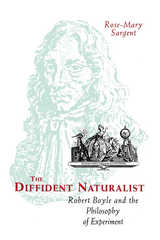 The Diffident Naturalist: Robert Boyle and the Philosophy of Experiment
Rose-Mary Sargent
University of Chicago Press, 1995 In a provocative reassessment of one of the quintessential figures of early modern science, Rose-Mary Sargent explores Robert Boyle's philosophy of experiment, a central aspect of his life and work that became a model for mid- to late seventeenth-century natural philosophers and for many who followed them.
Sargent examines the philosophical, legal, experimental, and religious traditions—among them English common law, alchemy, medicine, and Christianity—that played a part in shaping Boyle's experimental thought and practice. The roots of his philosophy in his early life and education, in his religious ideals, and in the work of his predecessors—particularly Bacon, Descartes, and Galileo—are fully explored, as are the possible influences of his social and intellectual circle. Drawing on the full range of Boyle's published works, as well as on his unpublished notebooks and manuscripts, Sargent shows how these diverse influences were transformed and incorporated into Boyle's views on and practice of experiment.
|
|
